We left Natchez Trace Wilderness Preserve in Hohenwald, TN on Monday April 12 with Acey’s mileage at 71,583.8 and Thor now has 82,249 miles. The dash A/C is working fine; its really wonderful that Jim can fix so many issues that come up! We arrived in the park at about 1:00 and were surprised to learn that the RV park is located inside the Mammoth Cave National Park, but is privately owned.
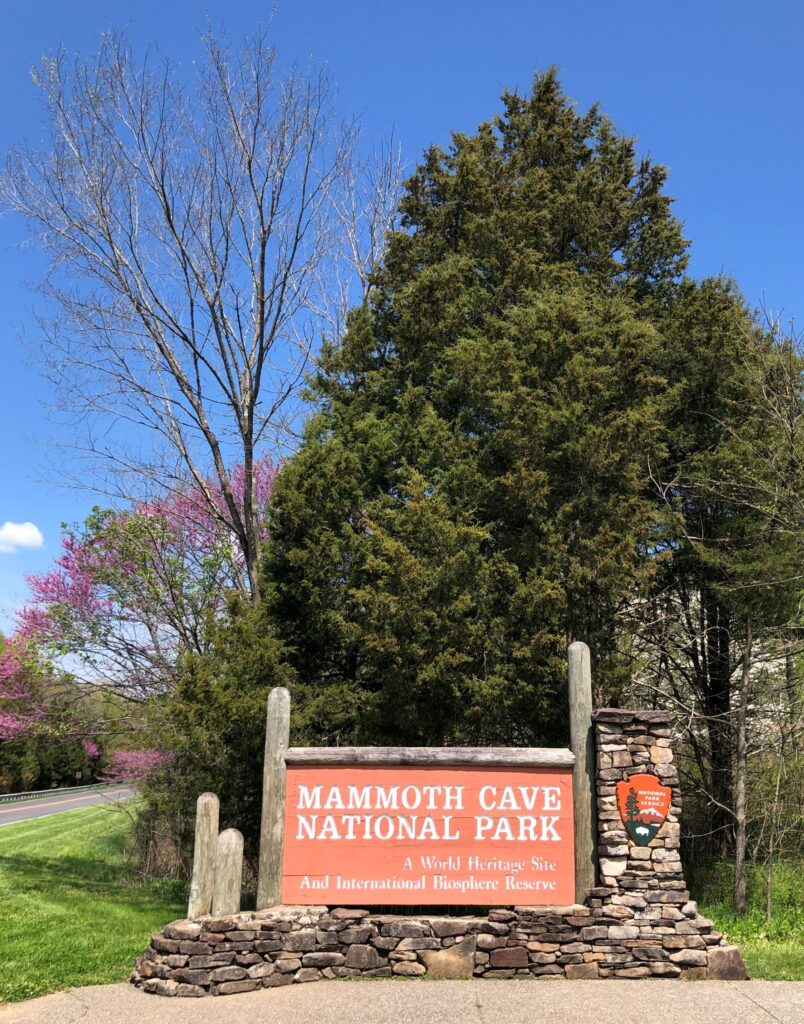
The road into the park was so pretty with many redbuds in bloom! Ignore the reflection on the windshield on the left…
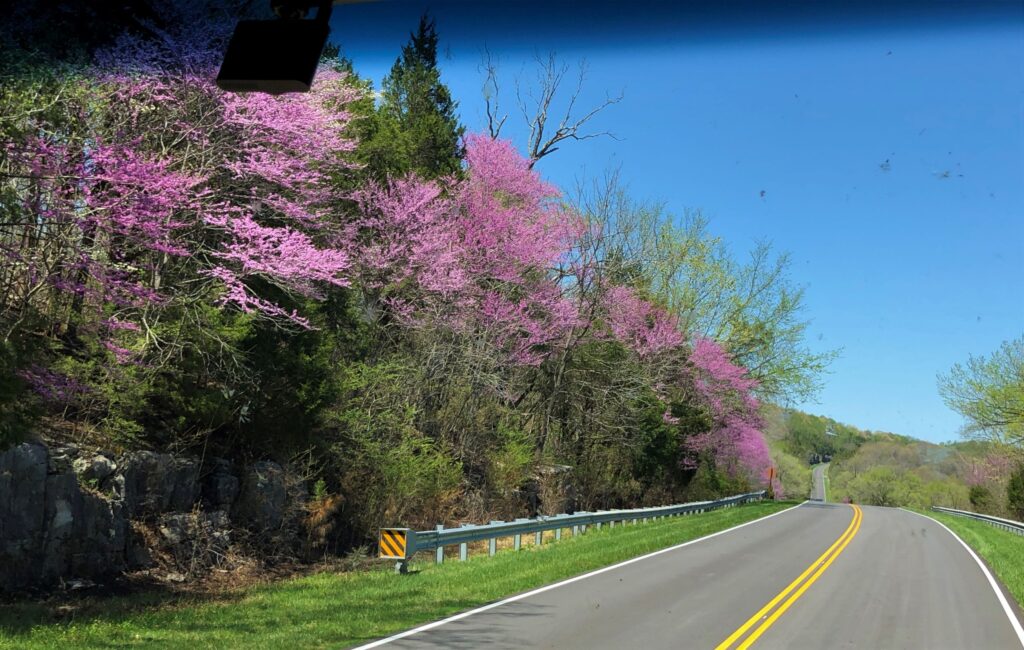
Jim washed both Acey and Thor – it had been quite some time since they have had a good bath!
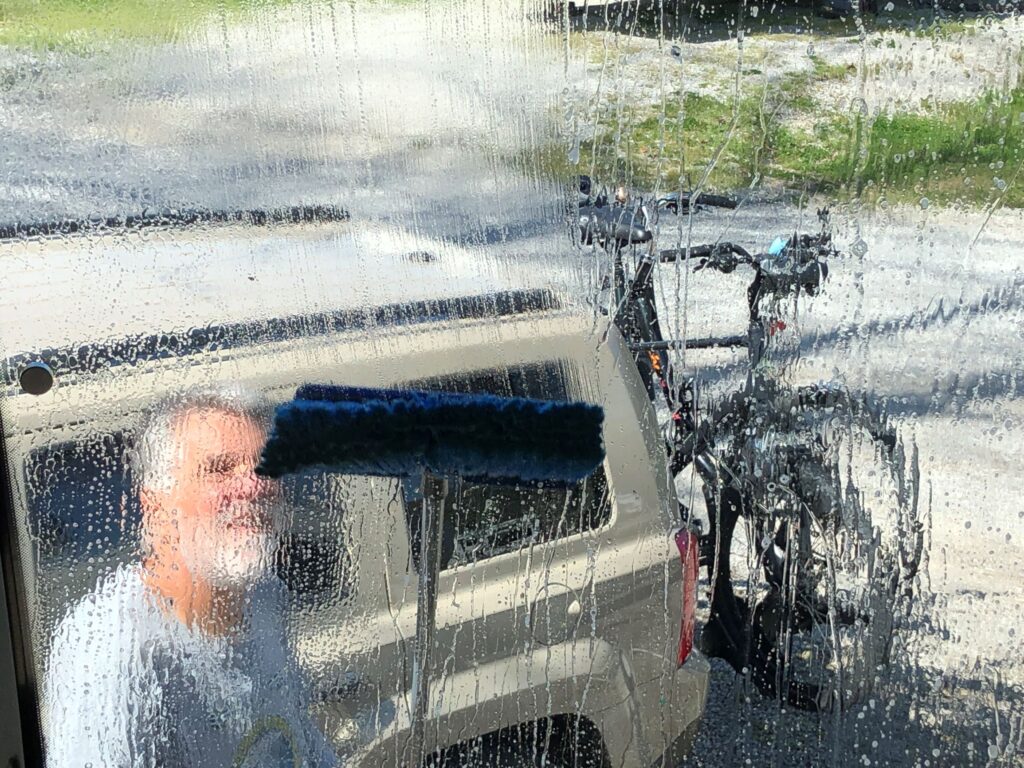
While Jim washed, Linda worked on the last blog which she finished on Tuesday. We went shopping; Jim needed some hose clamps for a temporary repair on the ladder used to get on the roof – the plastic supports on the rungs are not looking safe; one is broken and a couple others are cracked. He ordered new parts; Acey is going on 13 years old in June, and plastic + sun + age = not safe!
Jim also cut and installed the stair nose piece that we picked up the other day – so the bathroom floor is now done! Its nice that the flooring is so close in color to the tile and we got rid of the carpet in the bathroom!

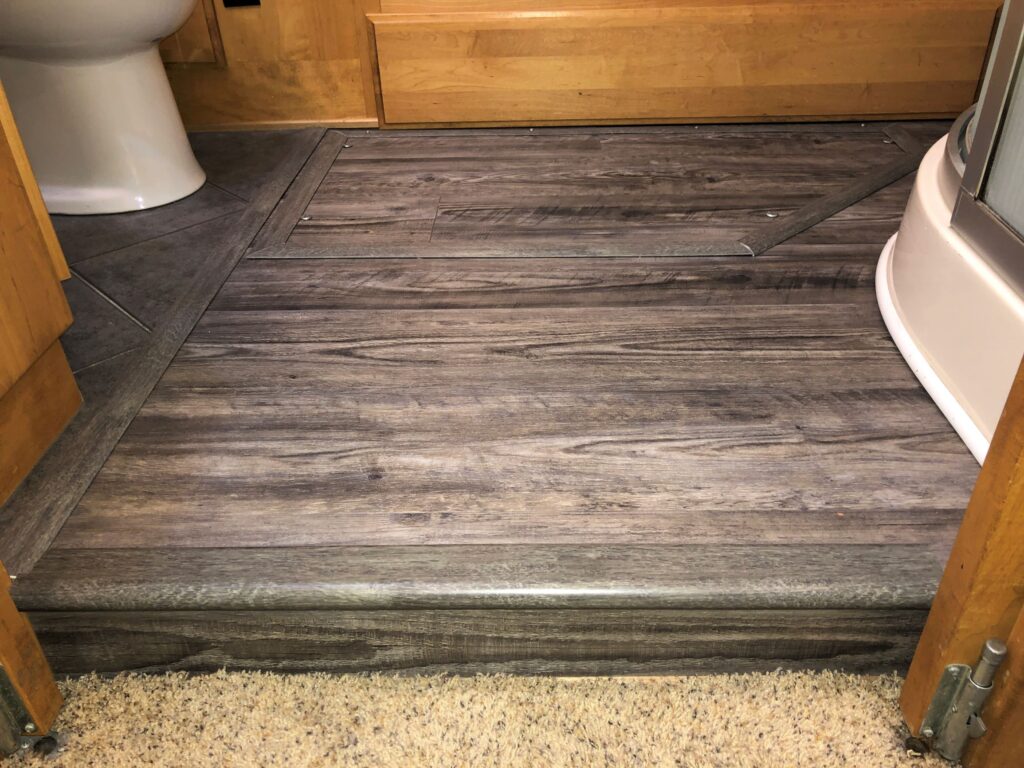
Another project Jim has been working on is changing out the outlets. All of the outlets are brown which makes it hard to see where the holes are to plug things in, especially when the lighting is not good.
Also, the connections on the back of the brown outlets (typically used in RVs) are “vampire” type connections – the insulated wires are pressed into the connection. There does not appear to be any sign of “UL” certification on the outlet. A motorhome is like an “earthquake going down the road”; there is some shaking going on! The wire in the “vampire” teeth could easily break (as was the case in our wet bay). There is a cover that snaps onto the back of this outlet to secure the wires into the teeth. (We saw on YouTube that a guy saw the outlet for the microwave was smoking; he found that the wire was not making a good connection. He replaced the outlet as we did)
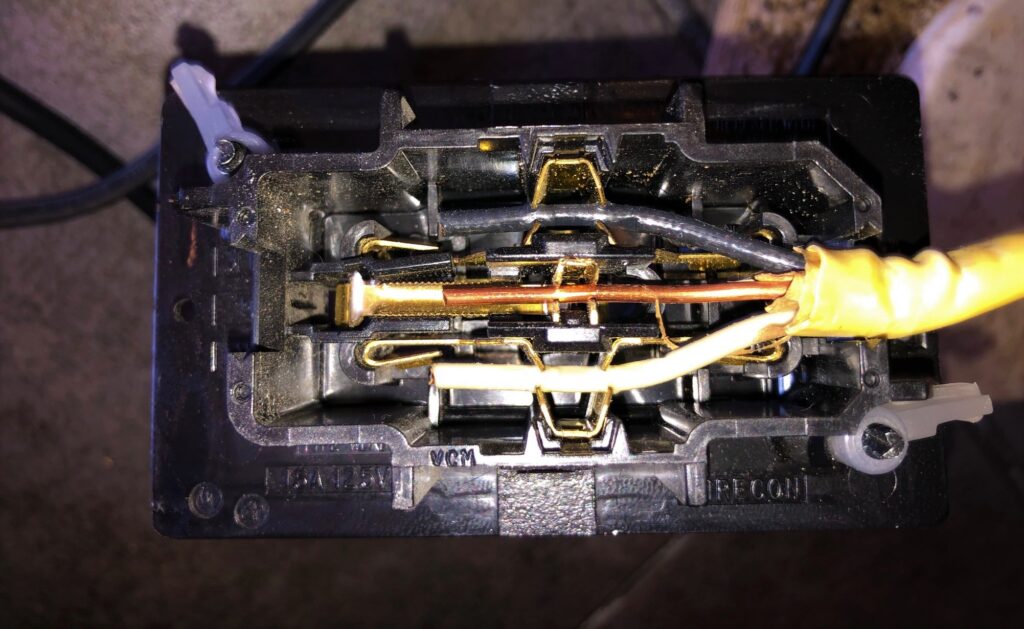
The screw-in connection is almost universally used for outlets and is more secure and safe. They are also a LOT less expensive to buy… even with the box needed for installation.
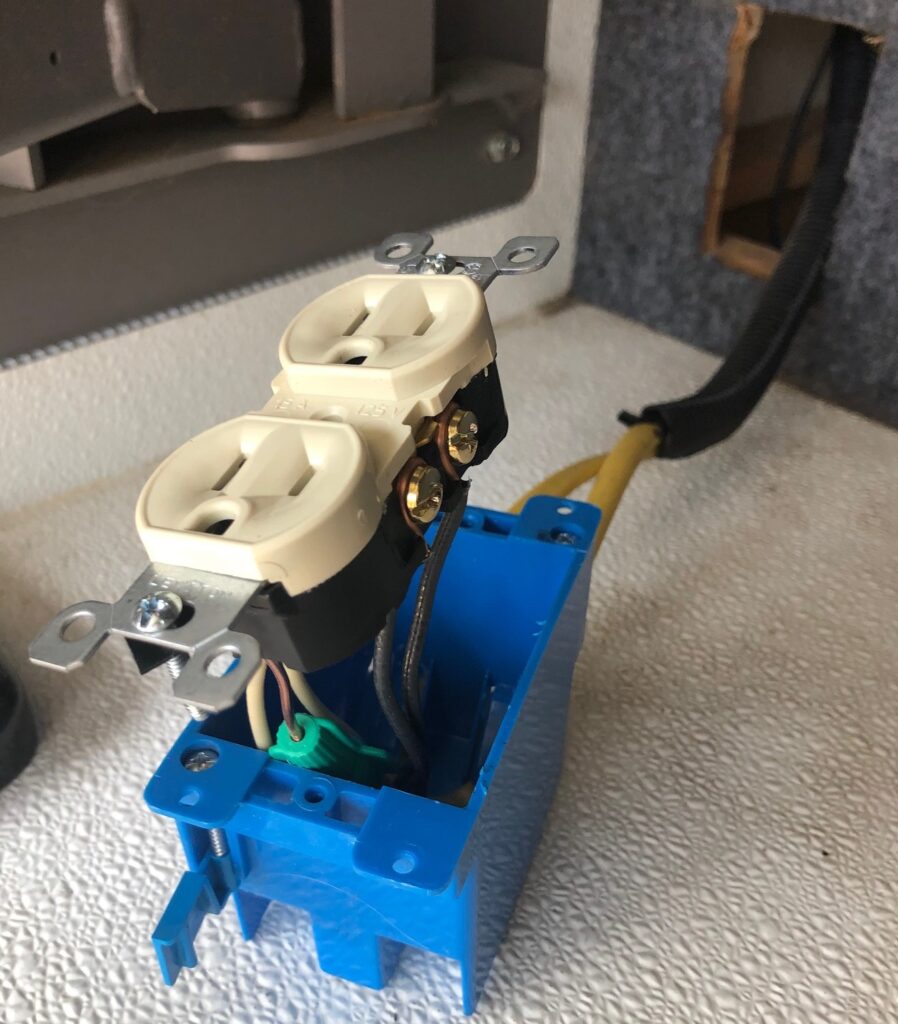
Wednesday we went to see the Diamond Caverns
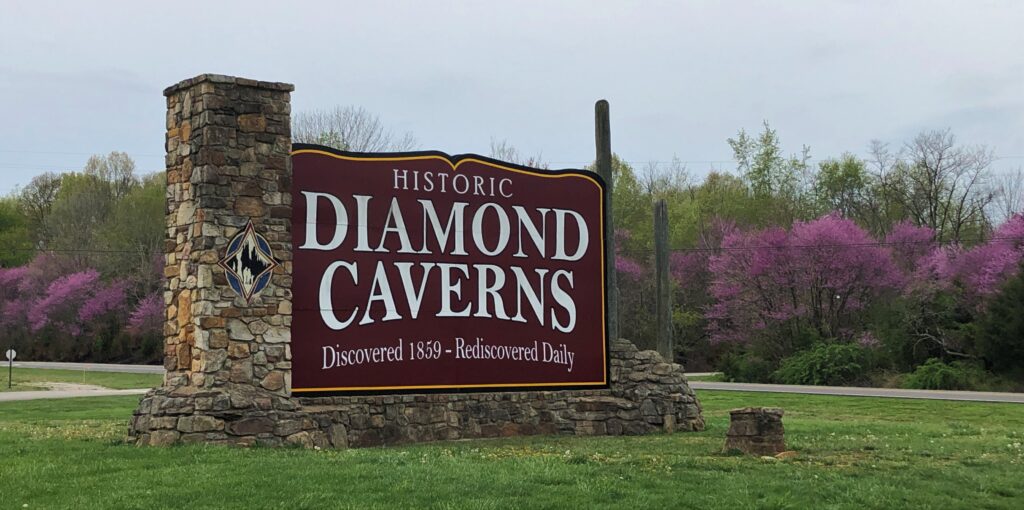
The lobby had several signs from other caves all over the country! We have been to a few of them.
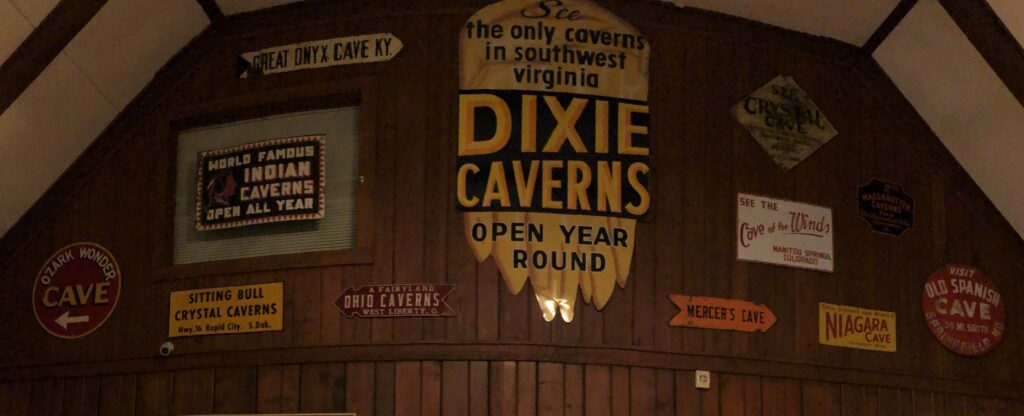
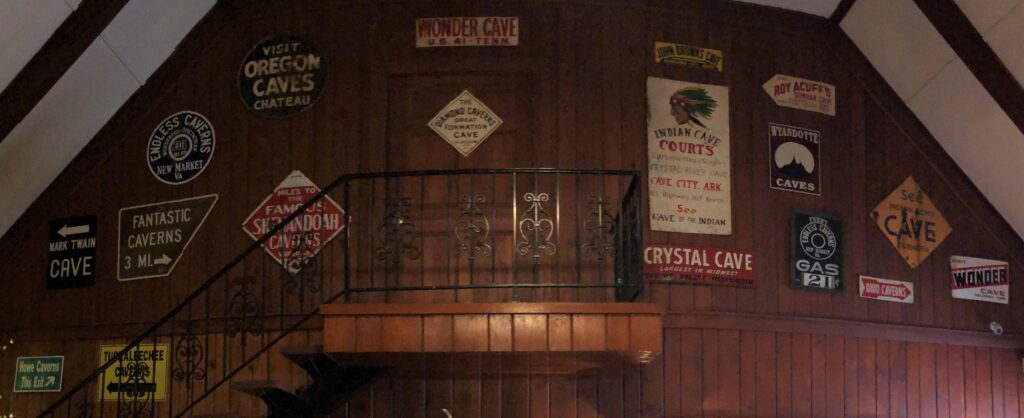
Diamond Caverns is very close to Mammoth Cave (about 6.5 miles); we have visited Mammoth several times, but had overlooked this place. Mammoth Cave is the largest known cave in the world and definitely worth a visit, but we opted to see Diamond Caverns and we were glad we did! (We later found out that Mammoth Cave has no guided tours right now) There were 180 stairs down – and of course those same 180 back up and out. The cave was very damp, and there are no bats in it. The only known opening is the one we entered. This huge conglomeration of stalagmites was the first thing we saw after we got down the initial set of stairs.
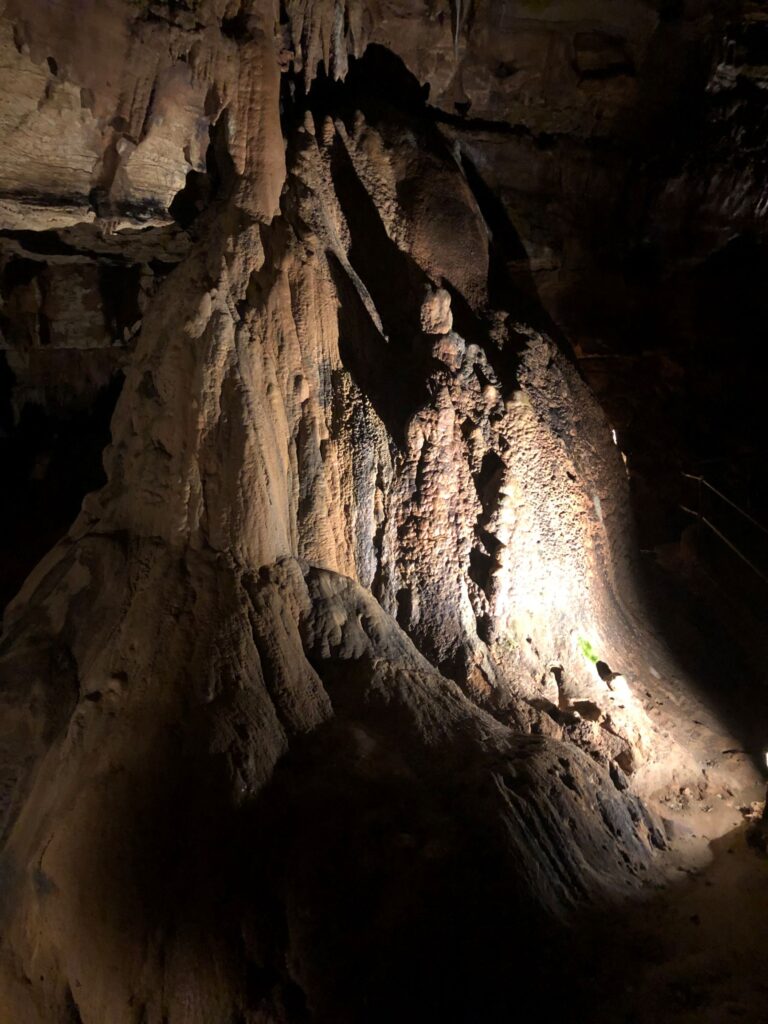
Here a stalactite and a stalagmite met up with each other. The saying goes that a stalactite holds tight to the ceiling, and a stalagmite might grow tall – or stalactite has a “T” for top; stalagmite has a “G” for ground
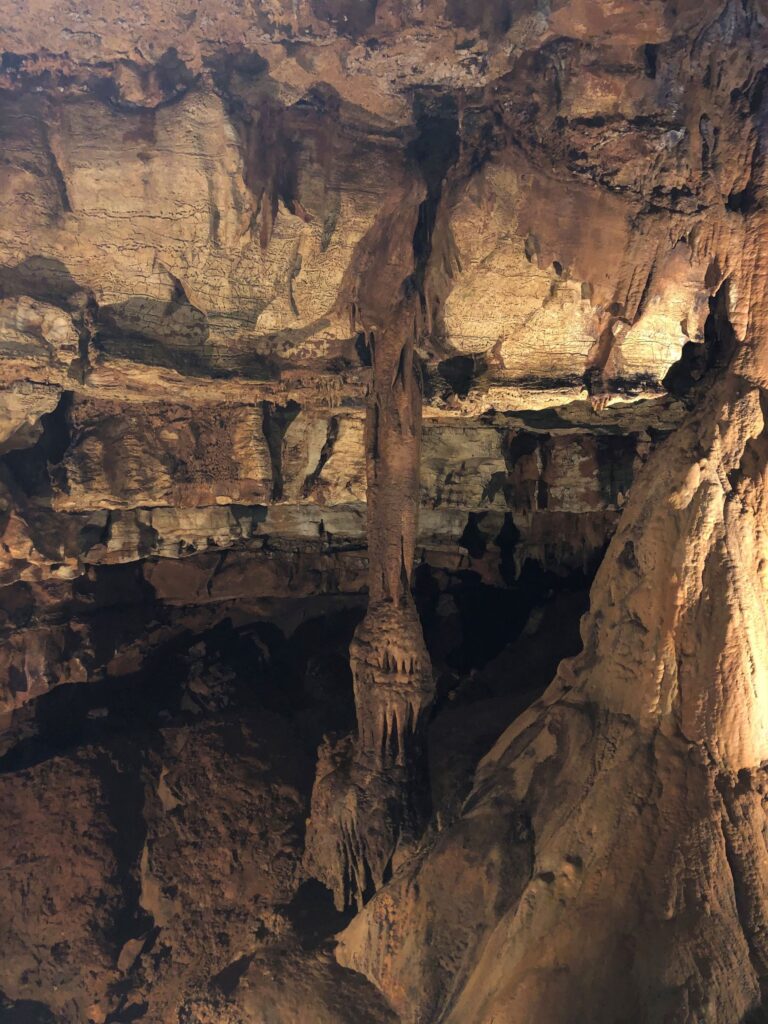
The ceiling was so interesting in the “drapery room”
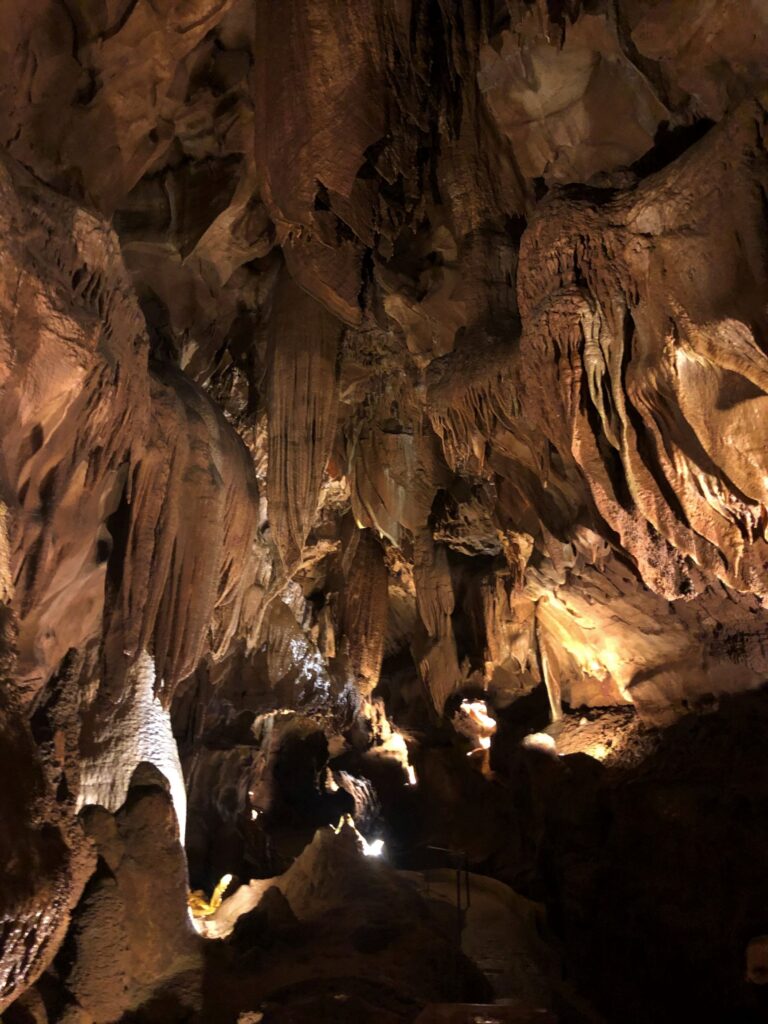
Our tour guide pointed out this feature on the center; like a set of shields – almost the shape of Ohio
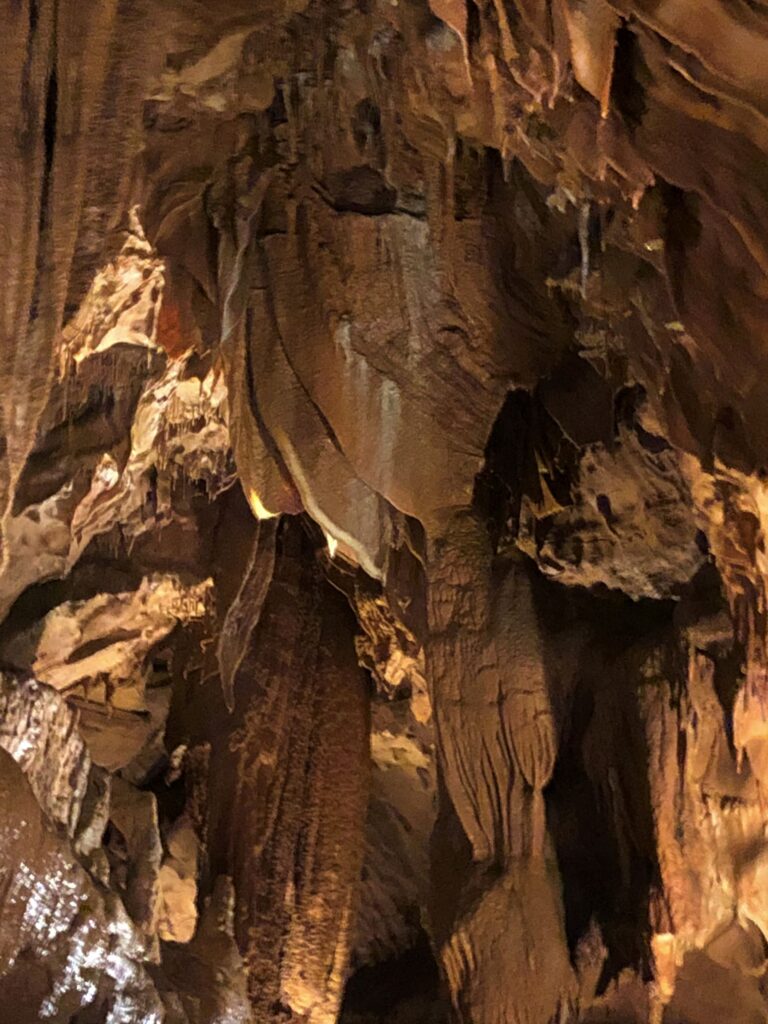
To the right of the shields, the formations looked like curly bacon.
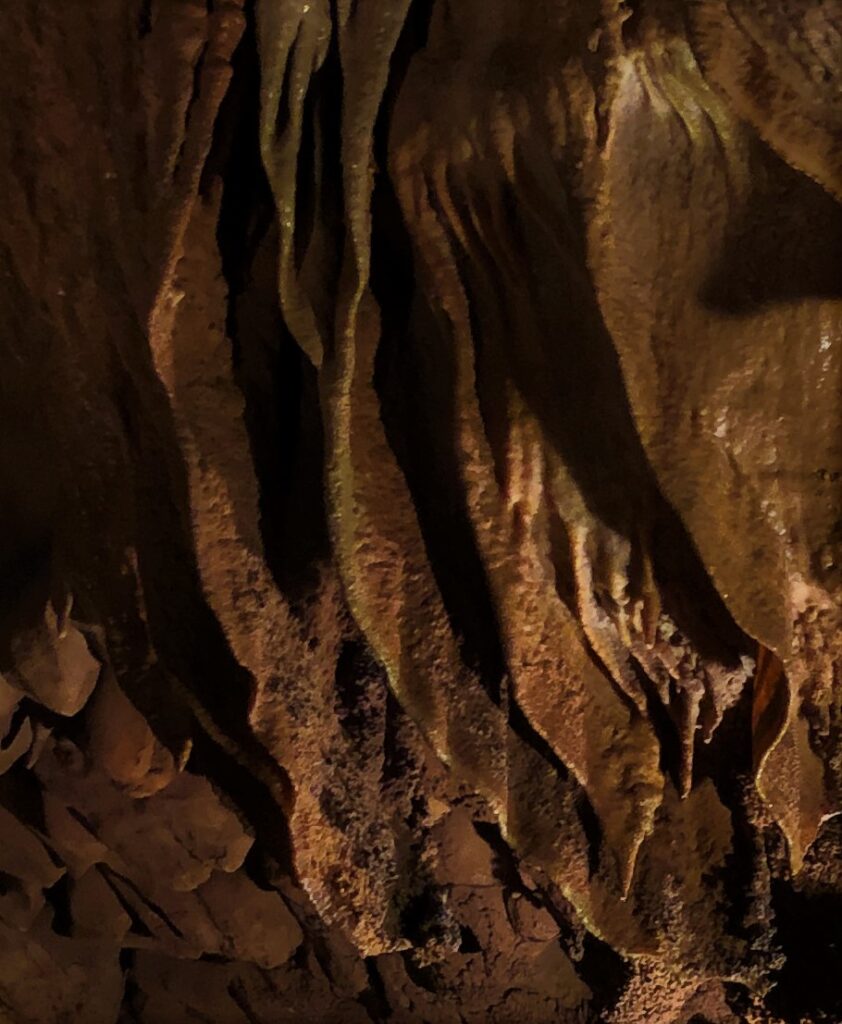
This looked like a frozen waterfall, with more curly bacon to the left
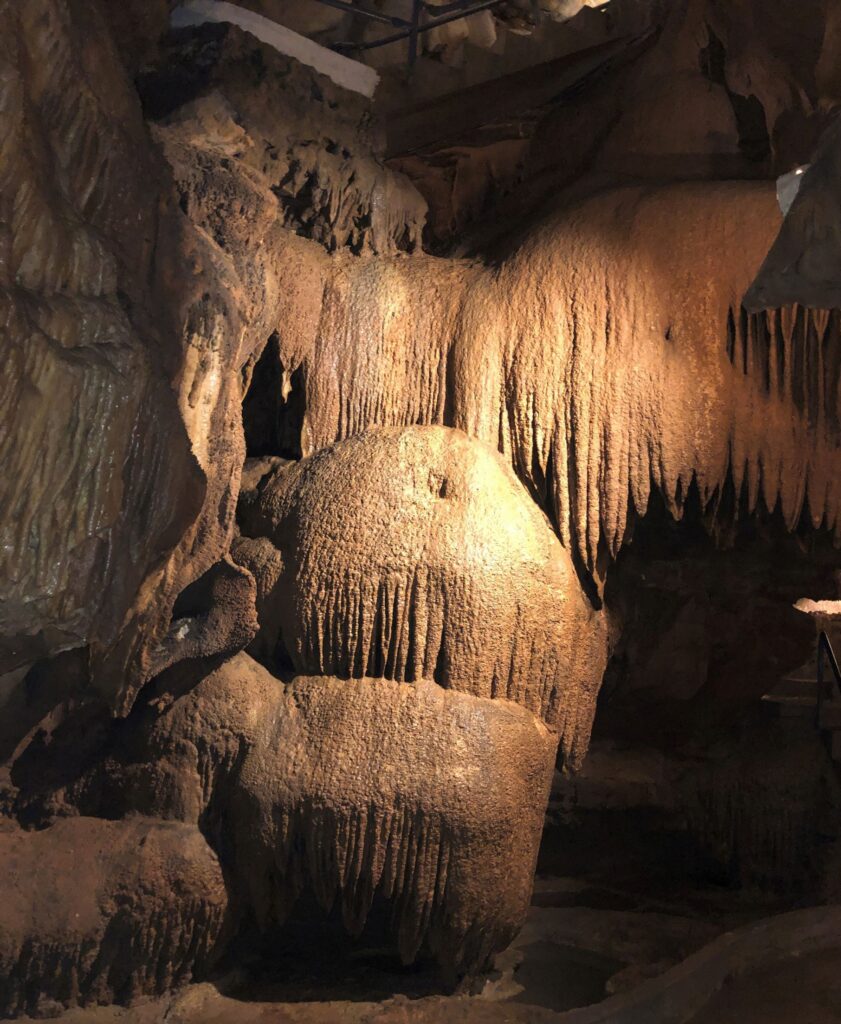
A feature we don’t recall seeing in other caves was this “popcorn”
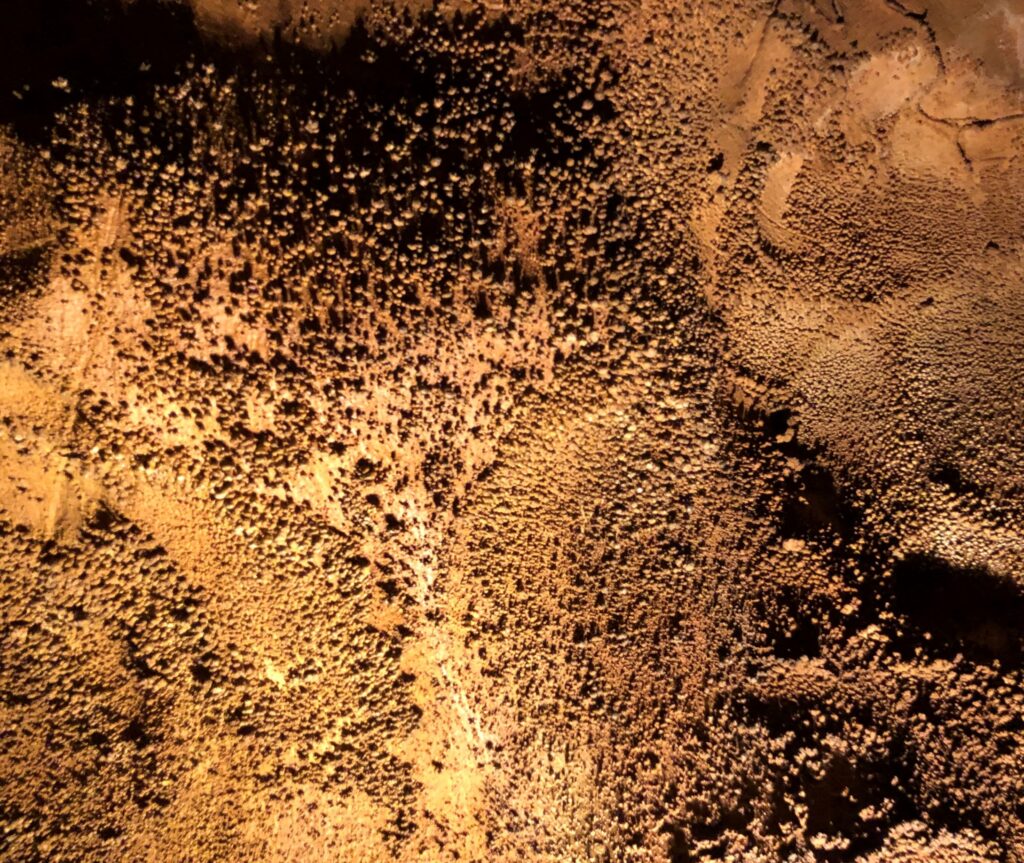
This delicate looking “fishtail” was pretty cool – notice the chip at the bottom. This was damage that was done during the “cave wars”
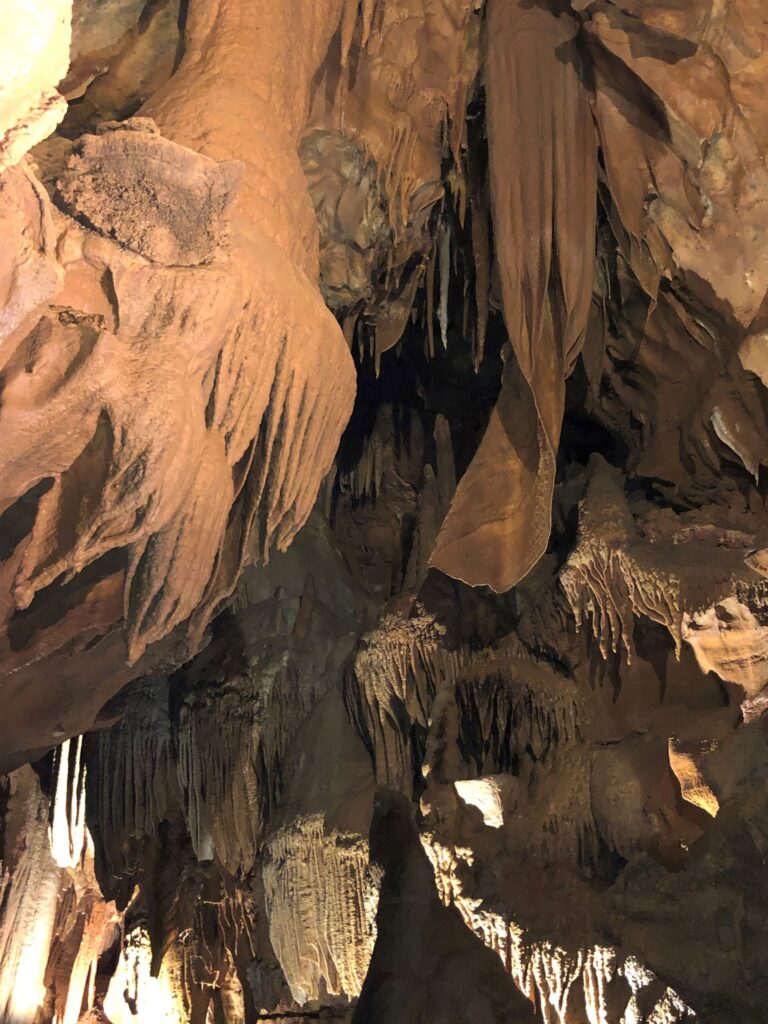
A previous owner of the cave cut away and polished a stalactite and it sort of looked like a cross section of a tree with the rings; but the rings really don’t tell the age – it takes many, many years for these formations to grow, and the polishing of the surface has kept this piece from changing.
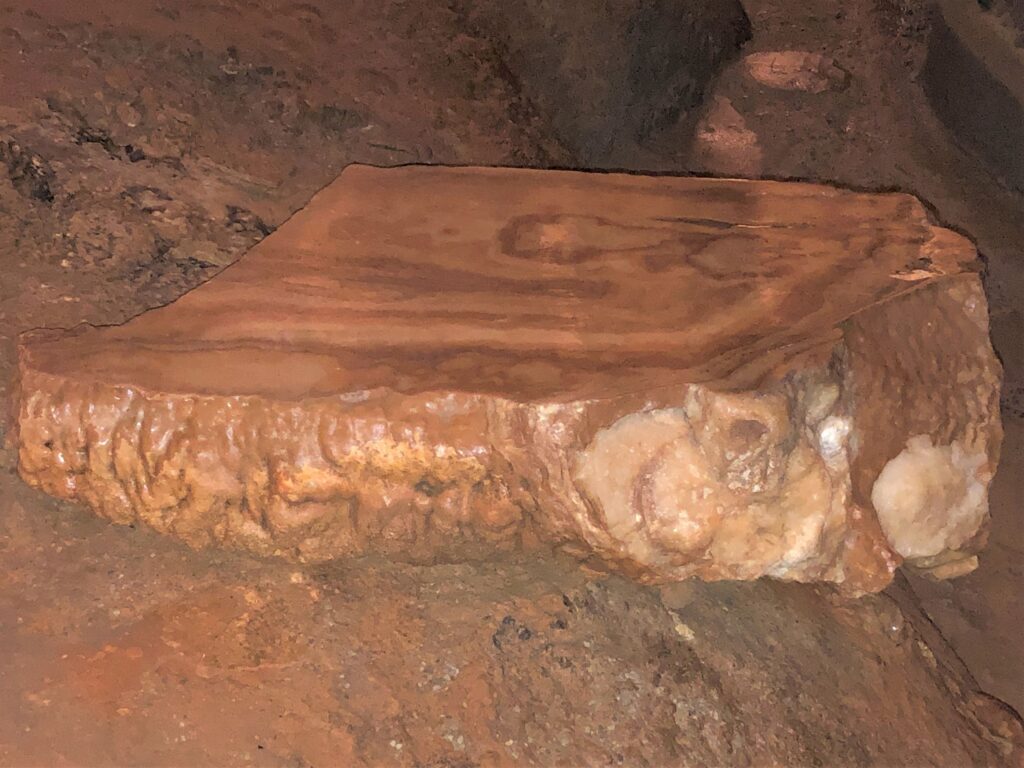
Another cross section was on display
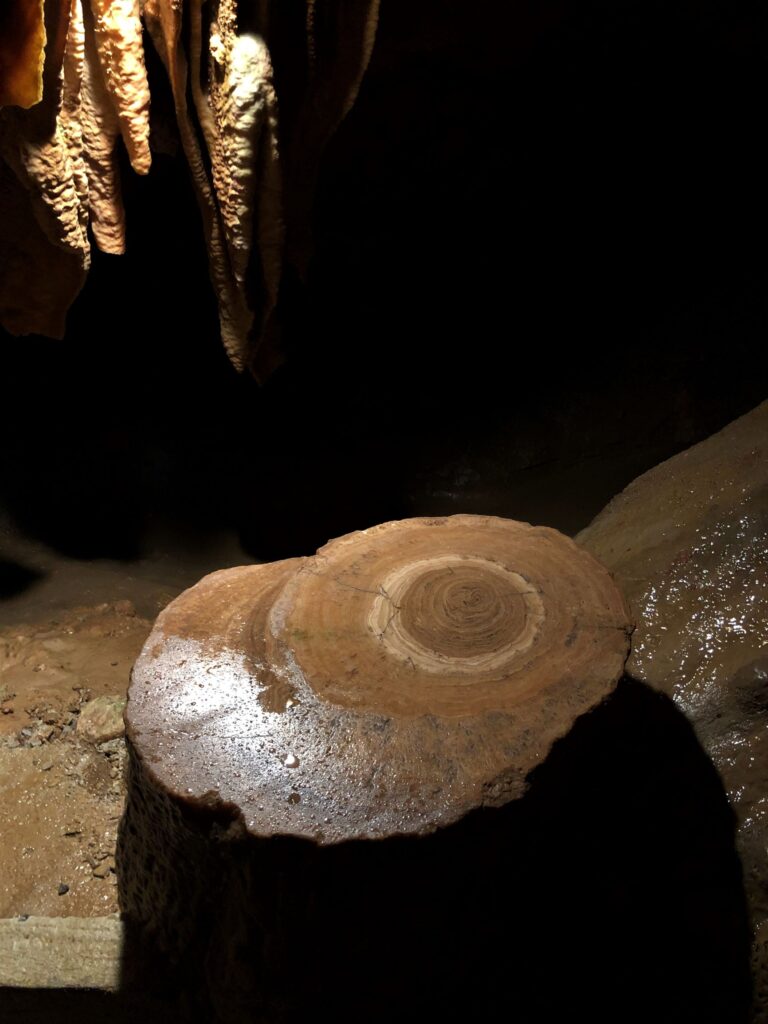
side view 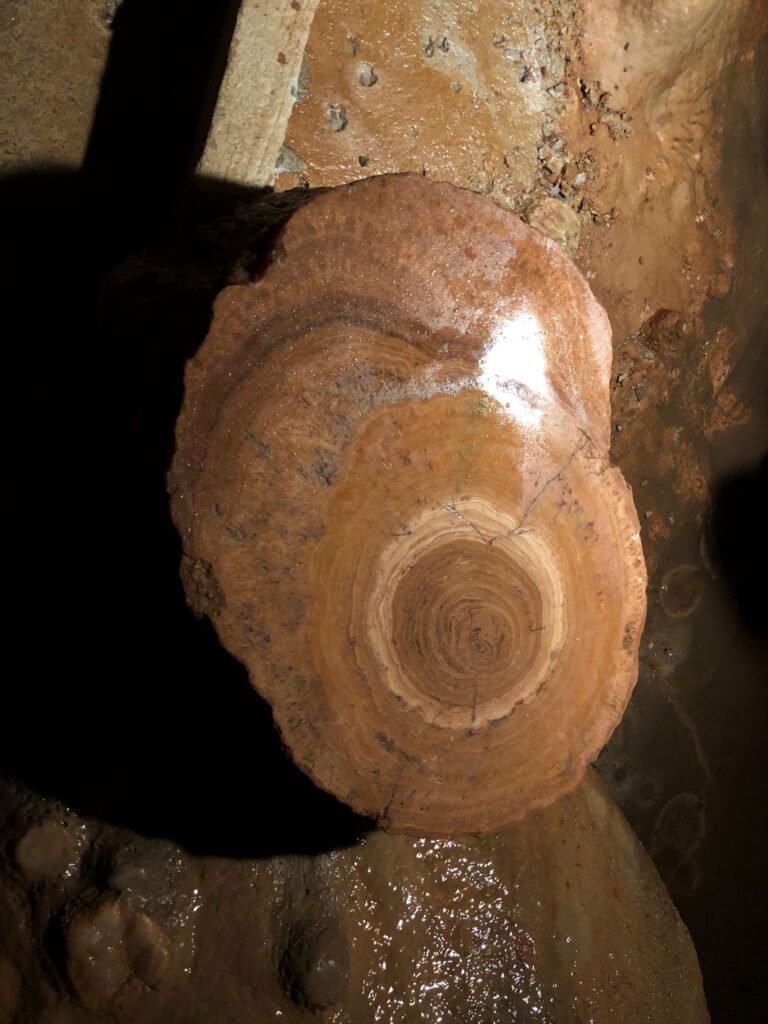
view from above
Looking up at the ceiling about made you dizzy!
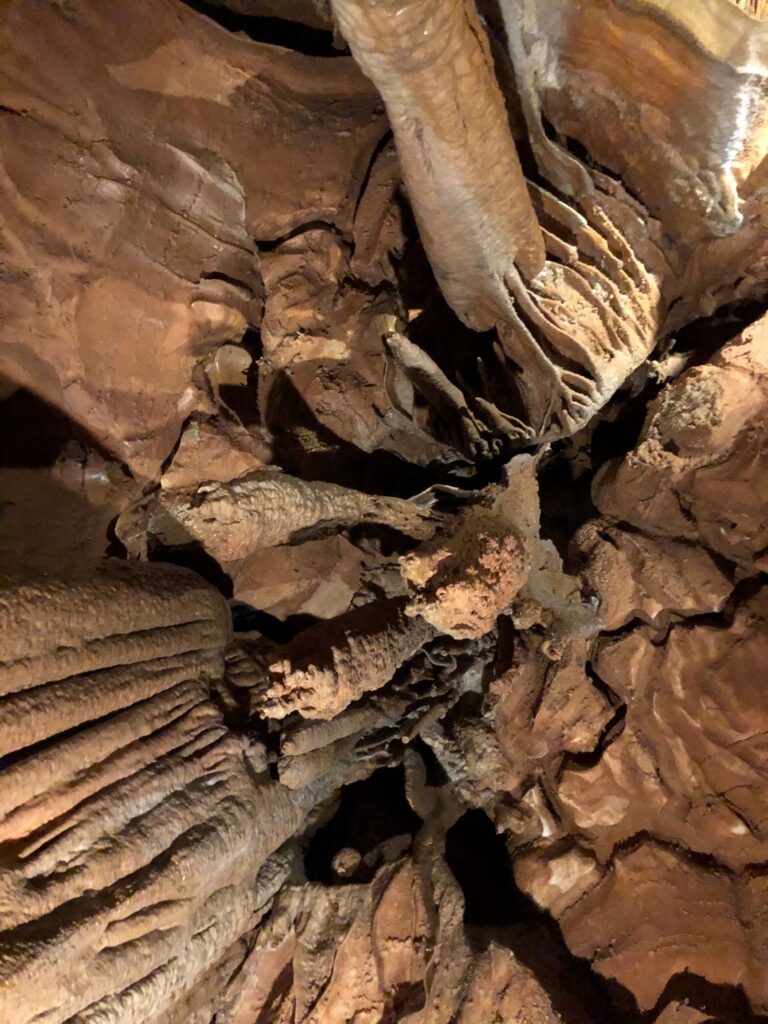
Here are some broken stalactites – more damage from the “cave wars”. Between 1920 and 1940 there were many commercial caves in Kentucky vying for business and badmouthing the competition and vandalizing other caves for souvenirs. You can read more here https://www.wnky.com/throwback-thursday-the-kentucky-cave-wars/
These stalactites looked much like an octopus hanging above our heads.
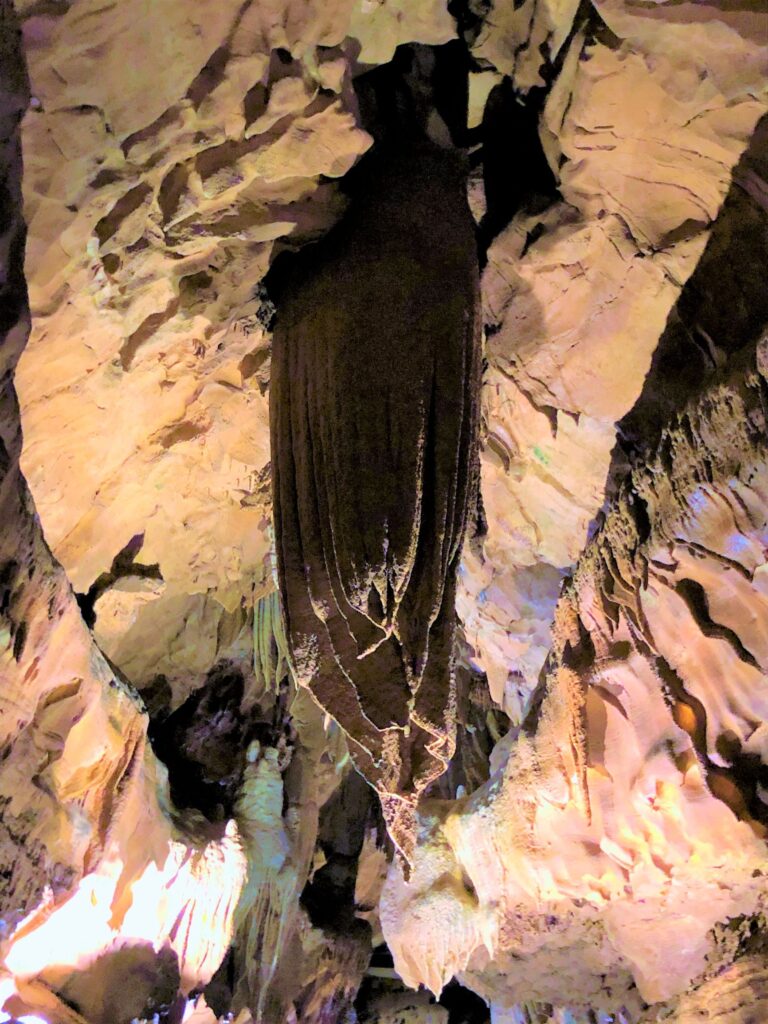
And so did this formation!
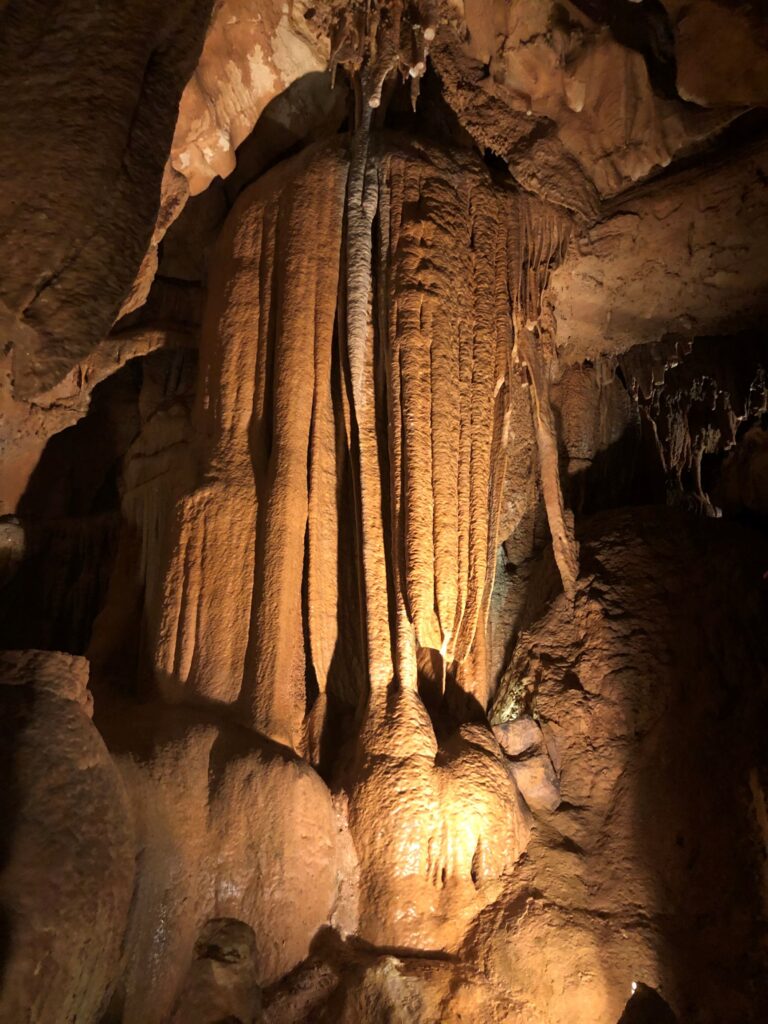
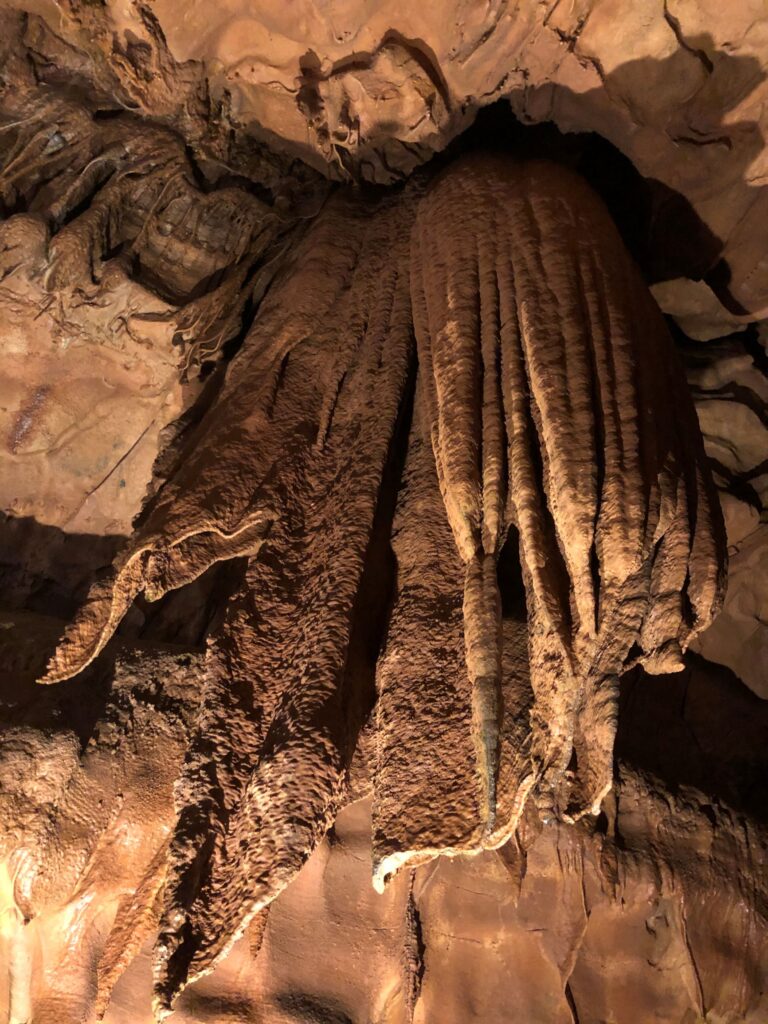
One of the larger “rooms” in the cave had an altar. In the past, several weddings had been held in the cave, but they could not accommodate very many guests.

The original entrance, overhead here, required guests to use a rope ladder. Yikes!
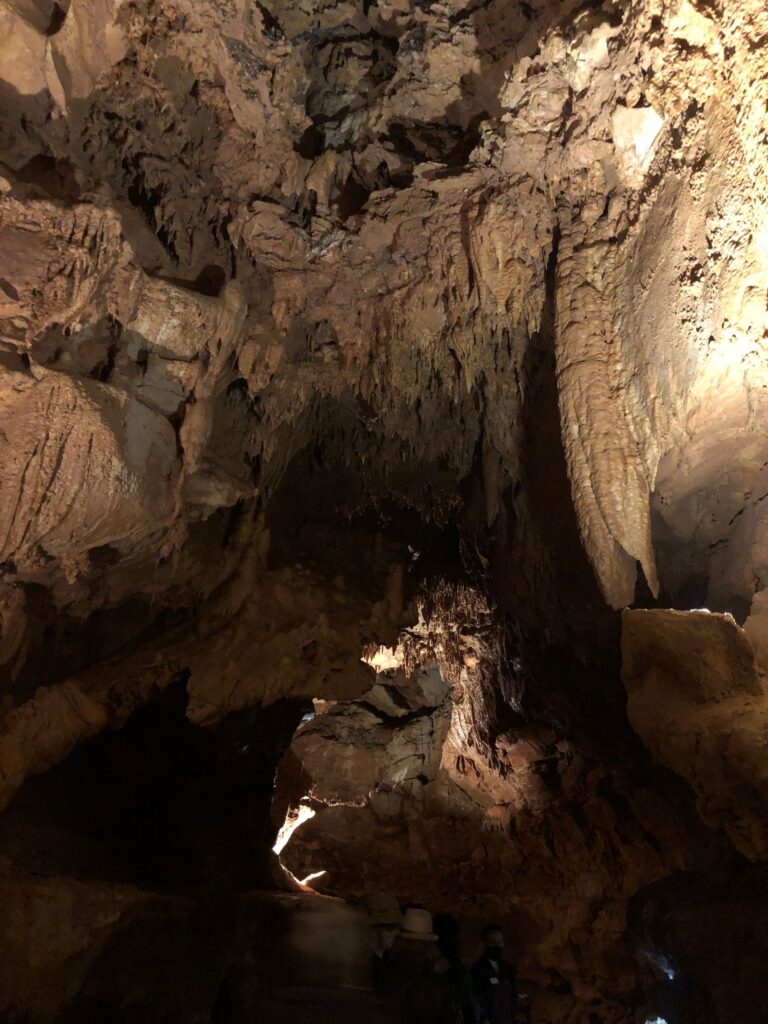
Looking down from where we entered the cave, you can see the original entrance.
A very interesting cave!
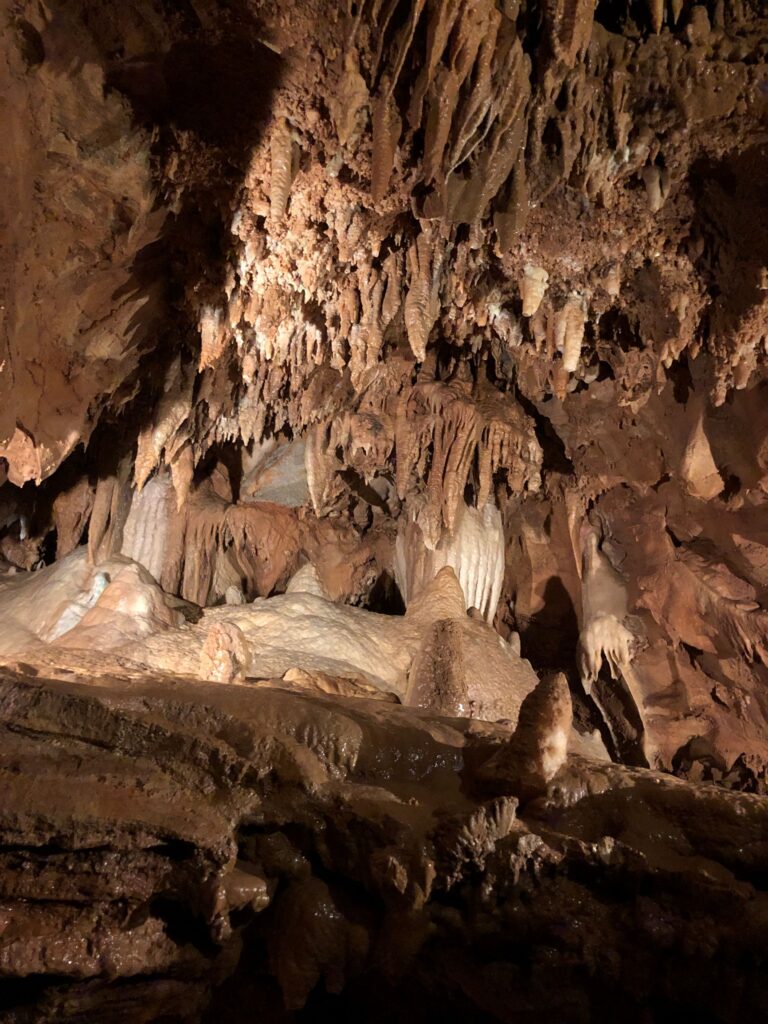
This reflection pool collects water and keeps the walkway fairly clear of standing water. There are so many formations in this cave because it is so wet,
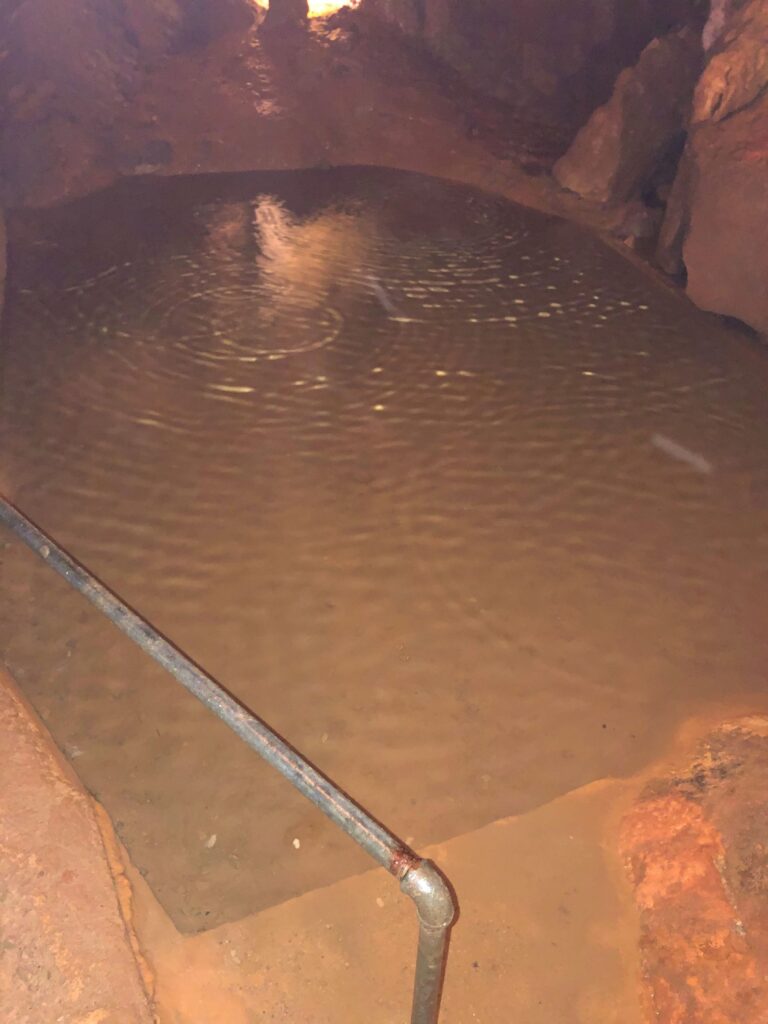
Thursday we drove to Bowling Green and visited the Historic Rail Park and Train Museum. This was a location of the Bowling Green Train Station. The building was rather stately.


Their website says “Please call ahead if you are concerned about making it in time for a railcar tour, as these times are subject to change on a daily basis” which we did NOT see ahead of time, and we were a few minutes late when we joined the last tour of the day at 1:15.
The first railcar we visited was the 1921 Railroad Post Office Car. The website had great descriptions and information, so it is quoted with the following photos “L&N RPO #1107 Railway mail service began in 1832 on Railway Post Office cars or “RPOs,” but grew slowly until the Civil War. In 1862, mail was sorted en route in order to speed mail delivery, as a train moved between two points. The idea proved to be exceptionally successful, and as the postal service decentralized its operations, it concentrated on sorting much of the growing volume of mail while it was being carried on the nation’s rail lines. Many lines earned substantial revenues with the railway post office cars which offset the profit loss from the large costs of passenger service on the same train. In 1948, 794 RPO lines ran on more than 161,000 miles of track but later declined until the last RPO stopped its delivery in 1977.”
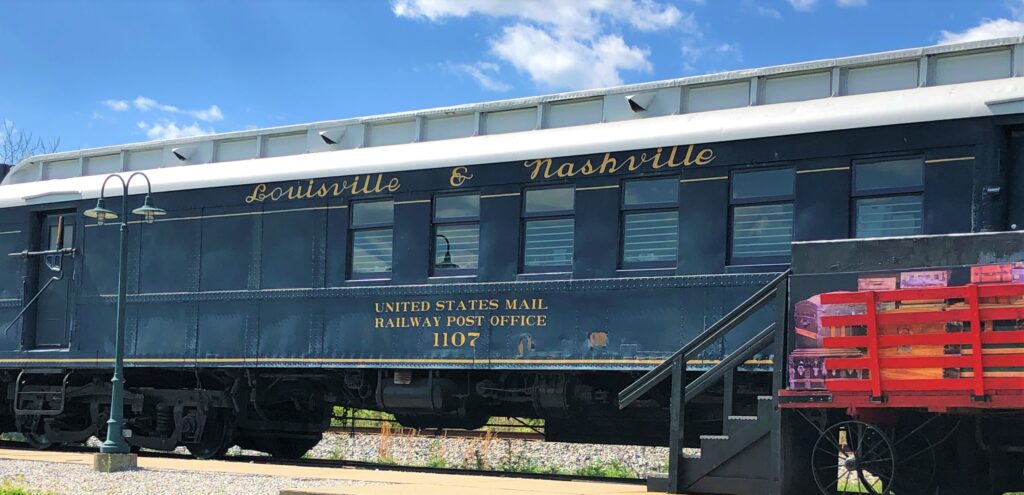
As the train passed, a mail bag would be hanging by the track, a postal worker would swing out the hook to catch the bag. Timing was everything! The bag of outgoing mail would be kicked out the door.
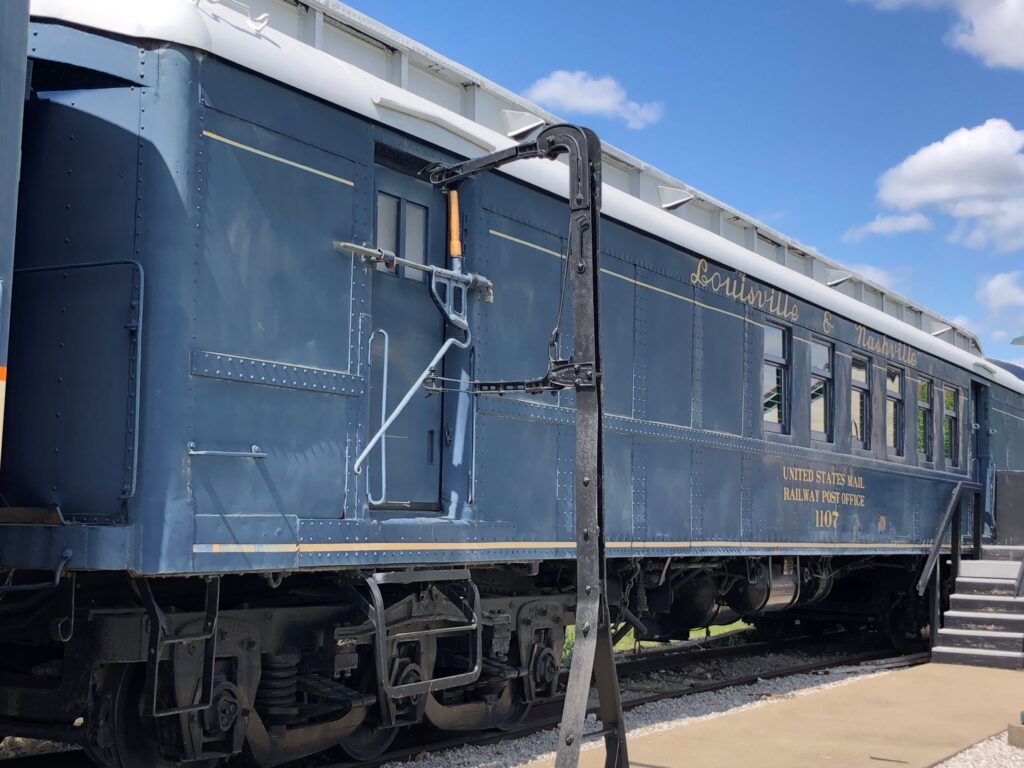
Robberies could be a problem, so Post Office workers were required to carry small .38-caliber pistols. Other than the Post Office, there was no other way to easily send letters or packages – no UPS, FedEx…
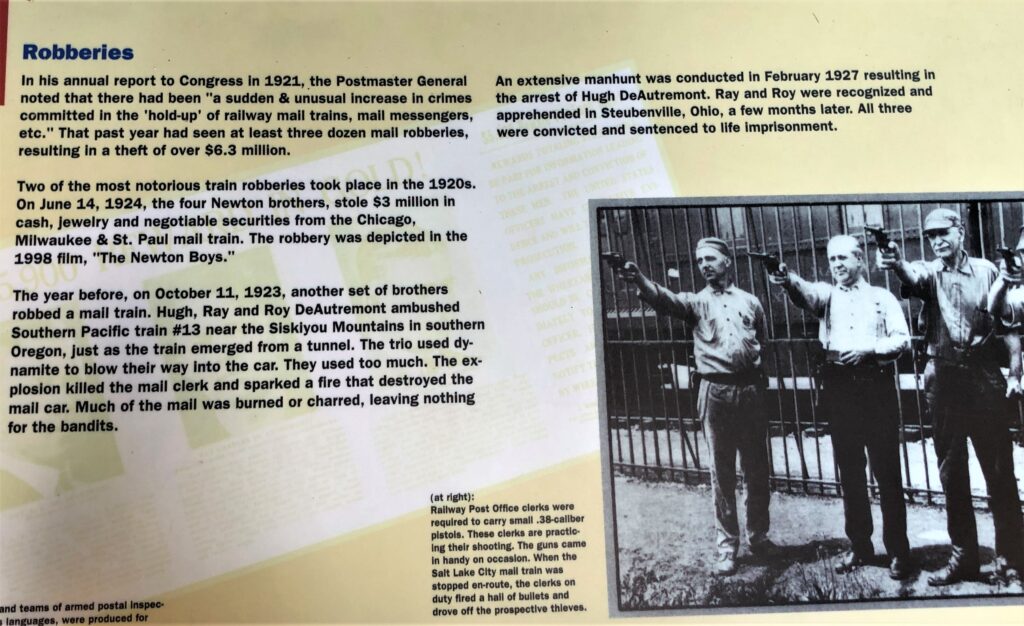
Mail was sorted for different destinations in these boxes.
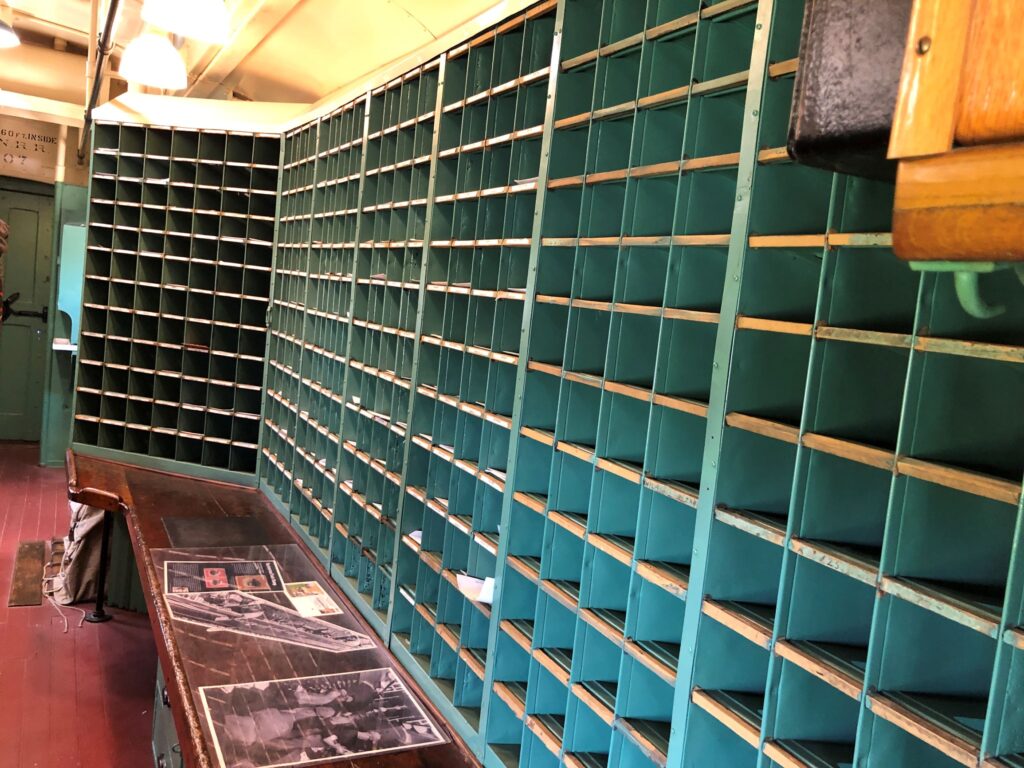
Mail would eventually end up in these bags as they came closer to the destination.
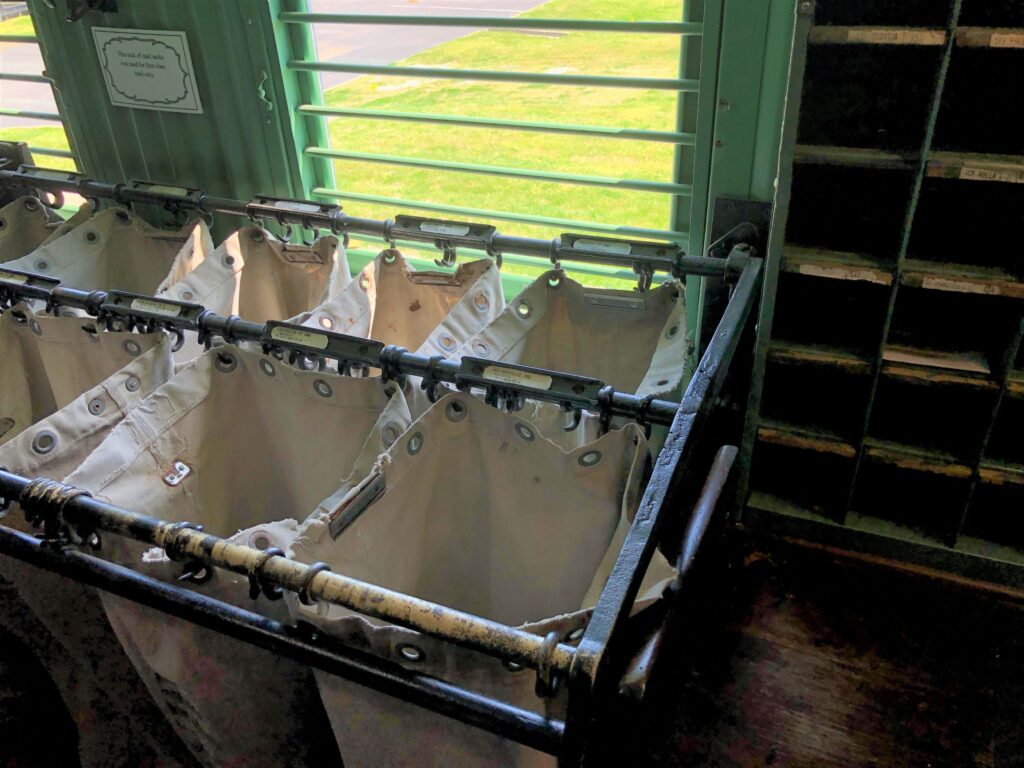
4-6 clerks would sort the mail – tight quarters!
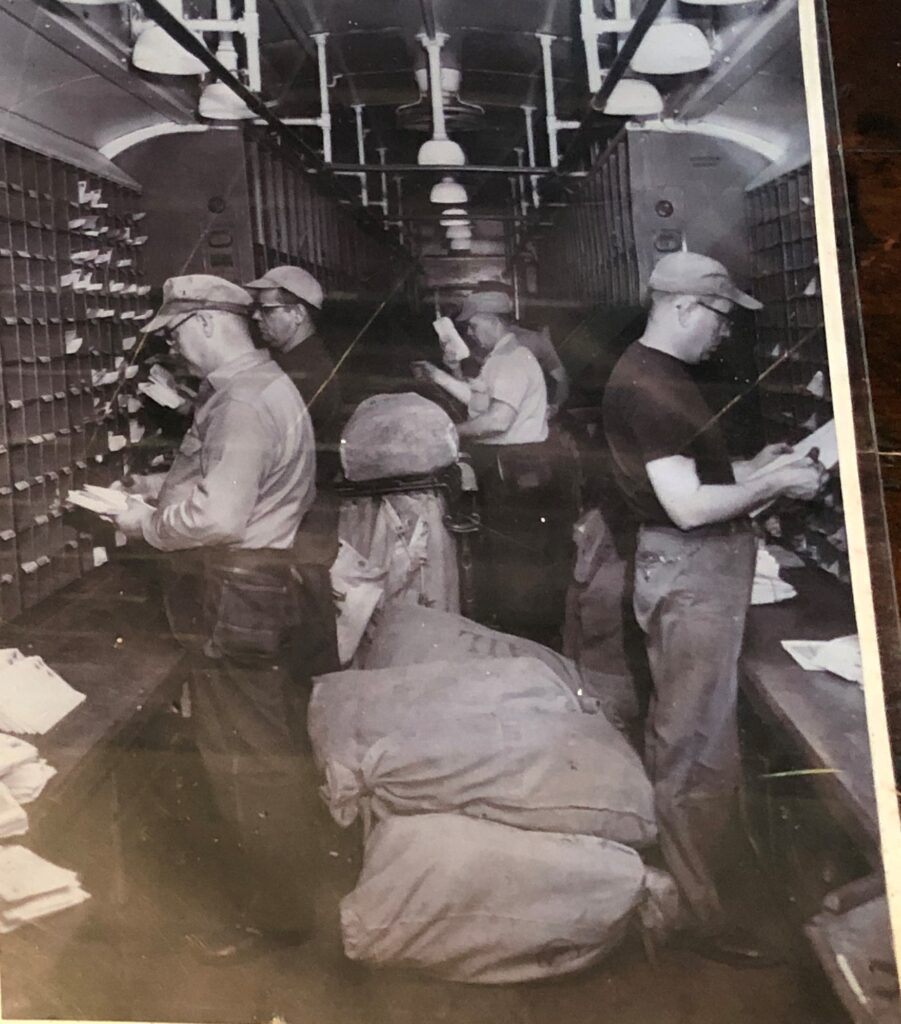
Train Wrecks – another problem! “In order to help protect passengers on the train, mail cars were placed between the locomotive and the passenger cars. As a result, Railway Mail Service clerks bore the major impact from collisions or explosions.”
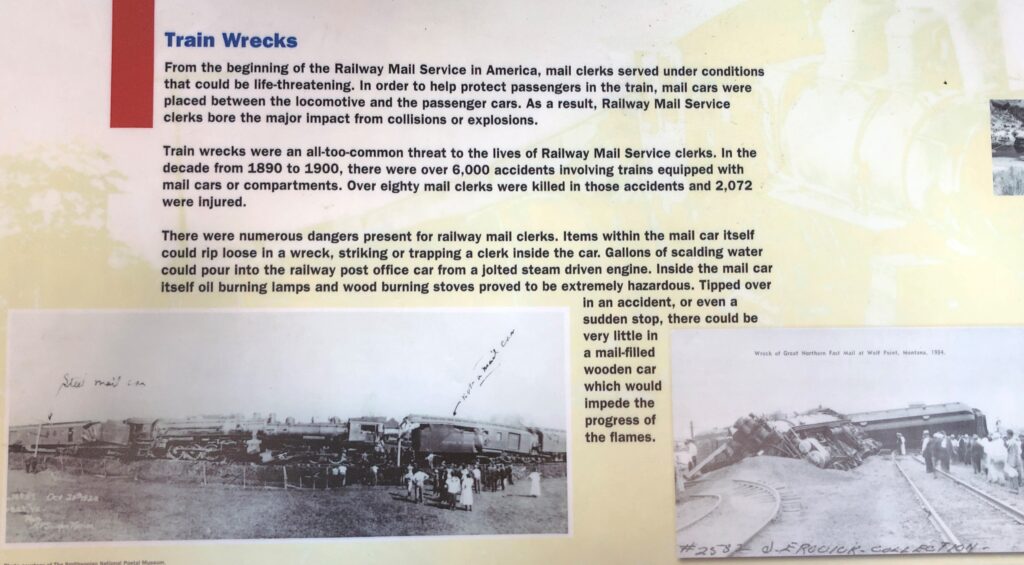
Owney, a stray dog, became a mascot of the Railway Mail Service. After his death, he was preserved and actually can be seen at the Smithsonian Institution!
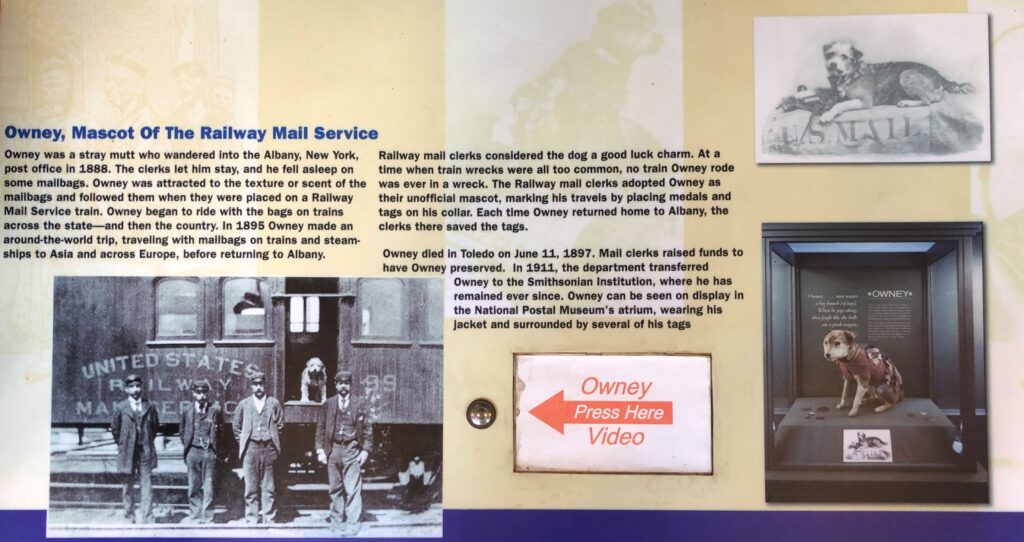
The Duncan Hines Dining Car 2799
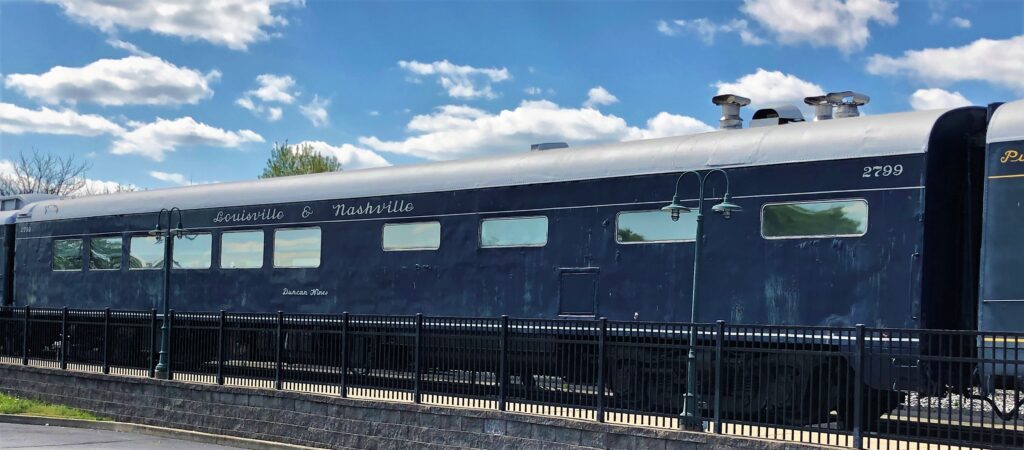
The dining car had seating in the front section, with special First Class seating that could be reserved ahead, otherwise, diners would be seated as they came, often seated with strangers.
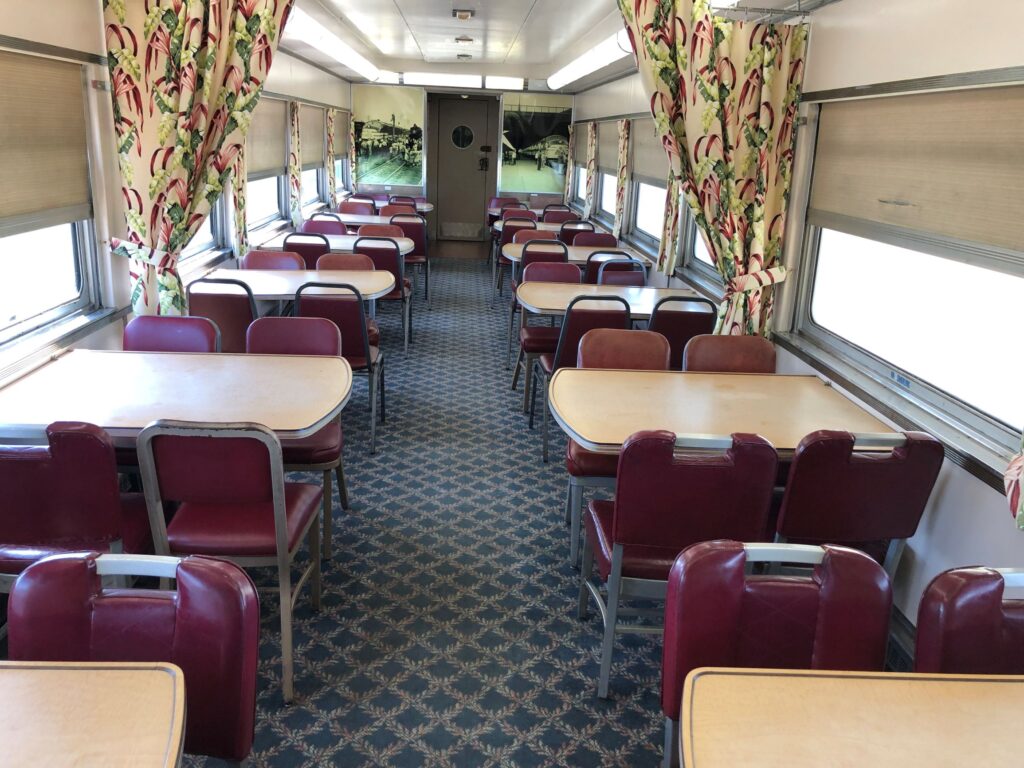
The “Cold kitchen” was where salads, beverages and soups were prepared, and the point where the waiters picked up the food to be served. The Ice box is behind the photographer
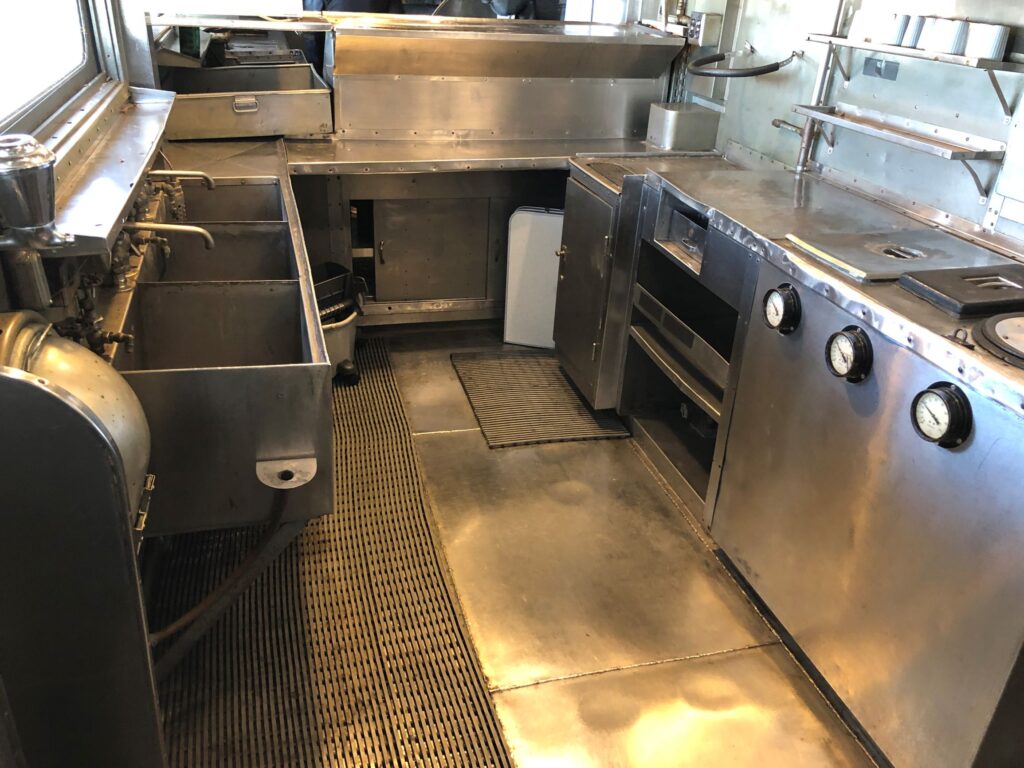
The “Hot kitchen”, which could be beastly hot, was where the cooking was done. The windows did not open. The cooked food would be passed thru to the cold kitchen, seen at the top of the photo. To the left, notice the oven where steaks could be chargrilled! The slotted wood floor allowed spills to go through – and the floor could be taken up and cleaned.
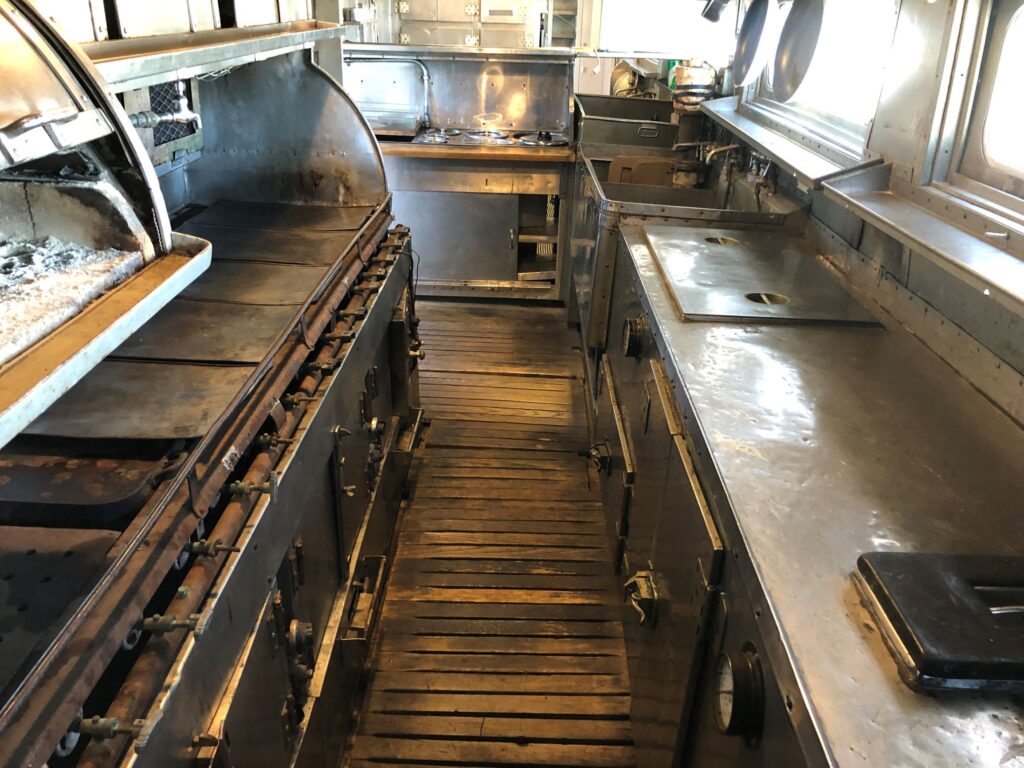
The Towering Pine Sleeper Car “number #3467 was the seventeenth of twenty-two new sleepers purchased by the L&N in 1953. These lightweight sleepers were purchased by the L&N to replace aging heavy weight sleepers. During the period following World War II the traveling public had began to expect more comfort and accommodations than previously expected by rail travel. This sleeper order was a continuation of equipment upgrading by the L&N and represented state of the art rail sleeping accommodations.” Pullman owned these cars and they were leased to the train lines.
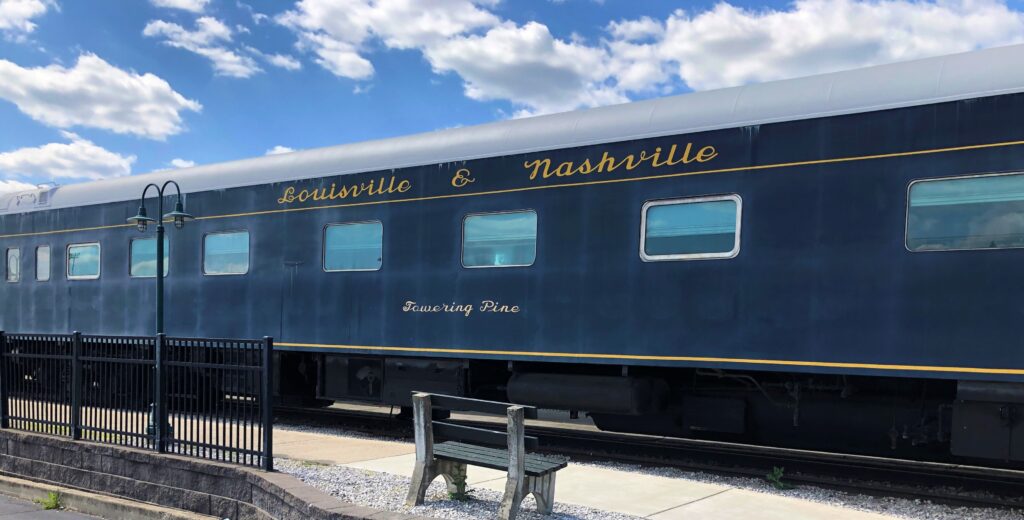
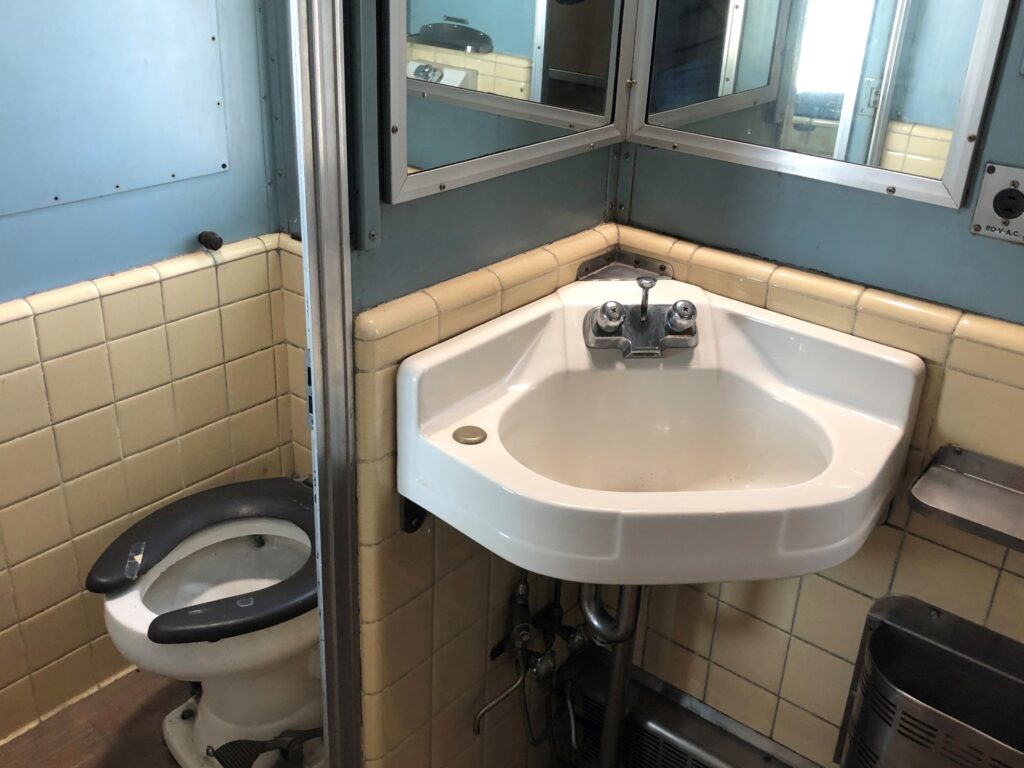
The passenger seated in the forward motion of the train would have the seating area made into the lower bunk
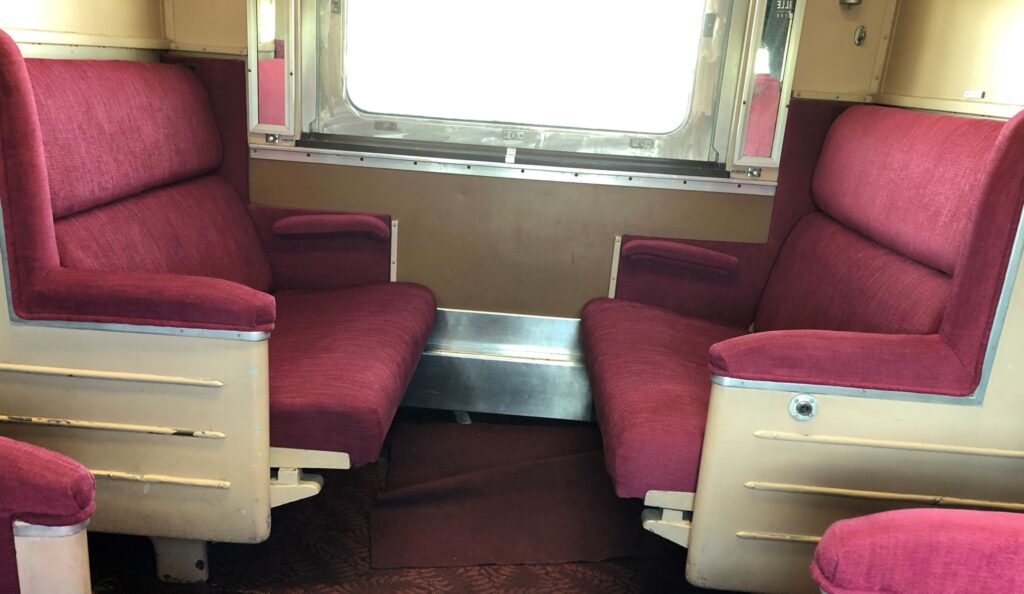
The passenger riding backwards would have the upper bunk – the porter had a key to put in the hole to lower the bunk. He also installed curtains and provided a ladder for the upper bunk.
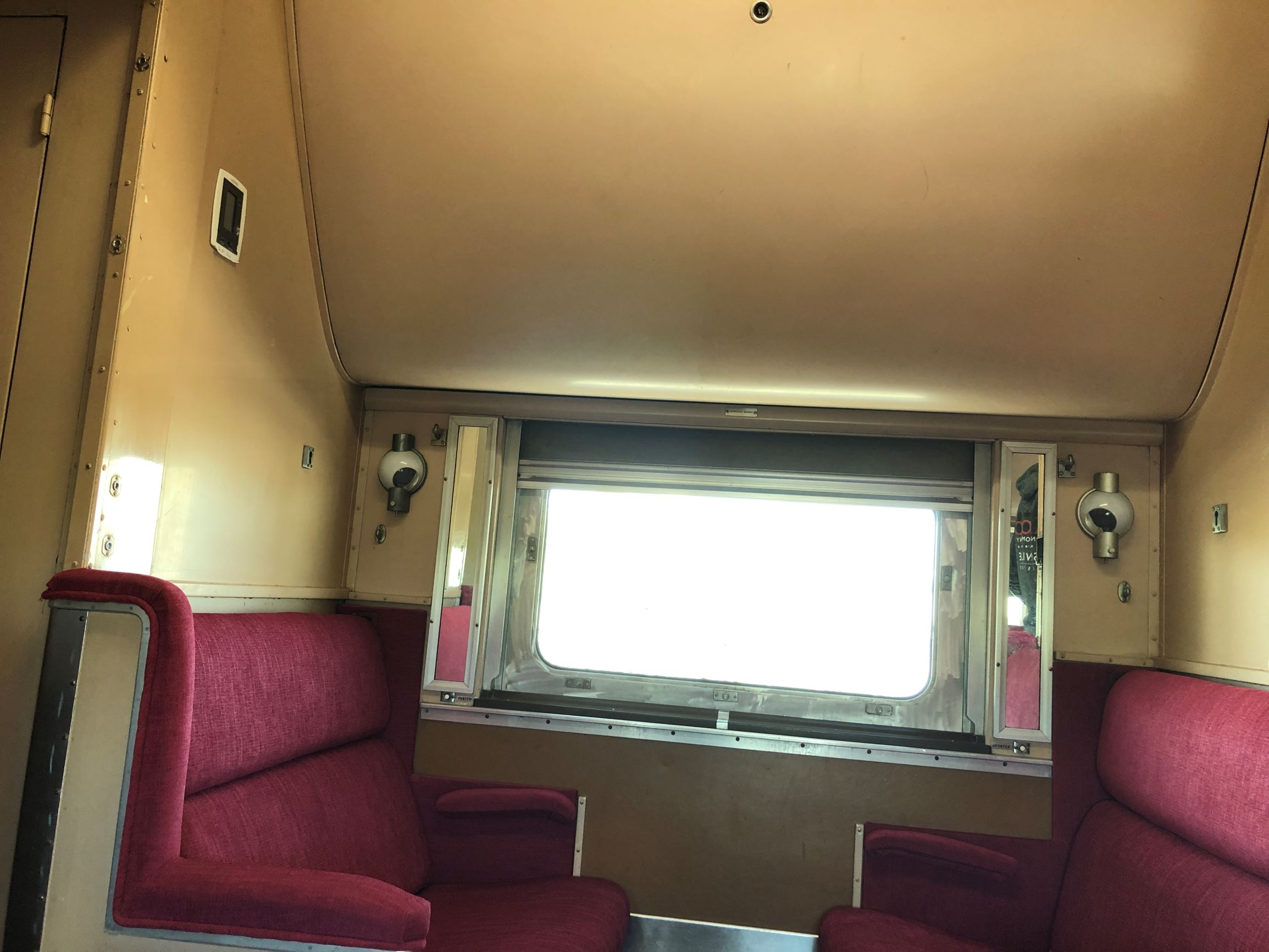
The sleeping accommodations would look something like this.
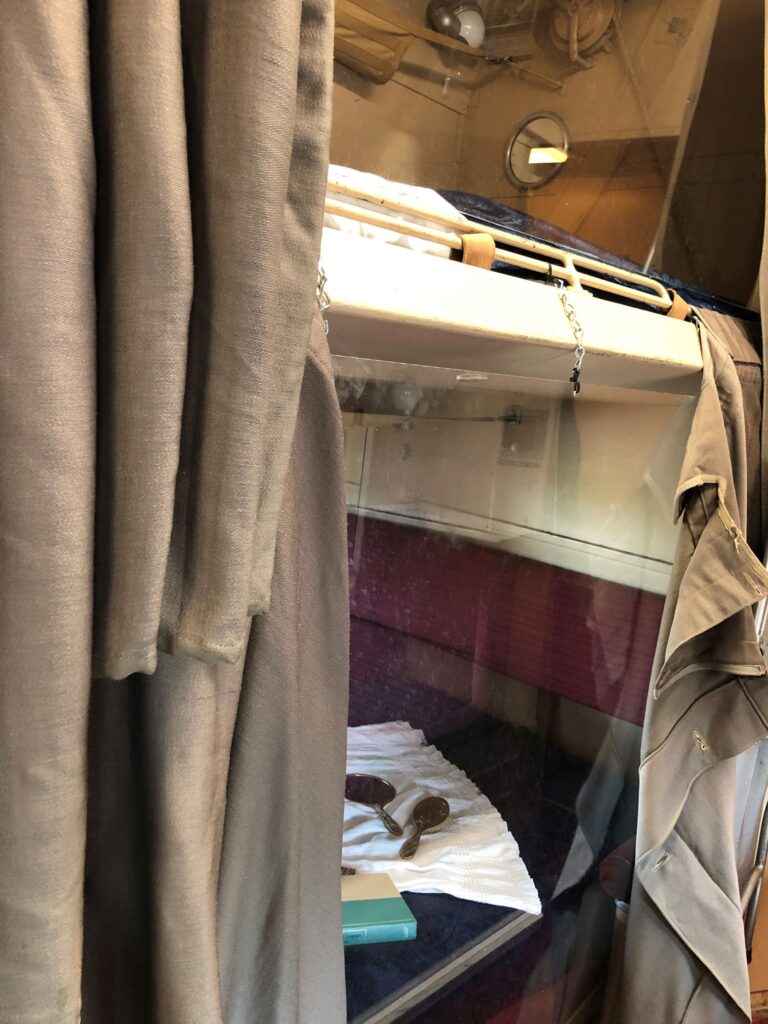
“The L&N Presidential Office Car Railroad historians are in agreement that this car is the oldest surviving passenger car manufactured by the Louisville and Nashville Railroad. The car was built at the South Louisville Shops in 1911. It is made of wood and in 1942 was rebuilt by adding steel exterior sheeting and an ACF ice-activated air conditioning system.”
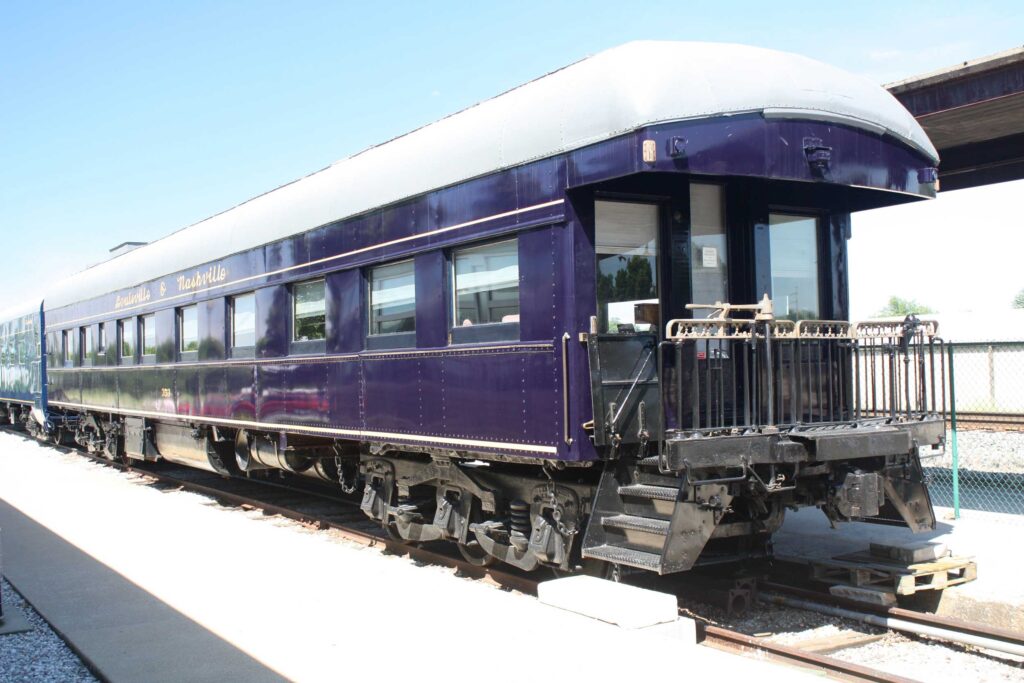
You can almost imagine the President standing on the back of this car greeting the crowds!
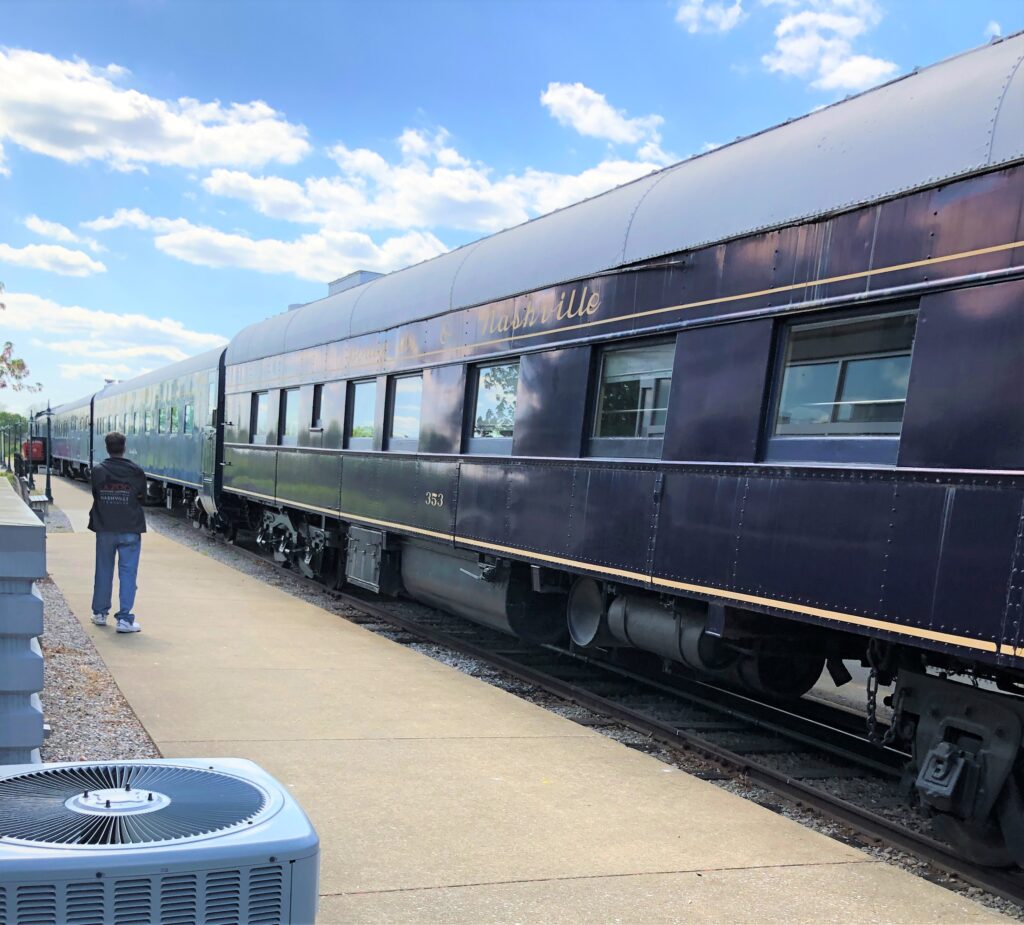
This space was for sitting/working during the day…
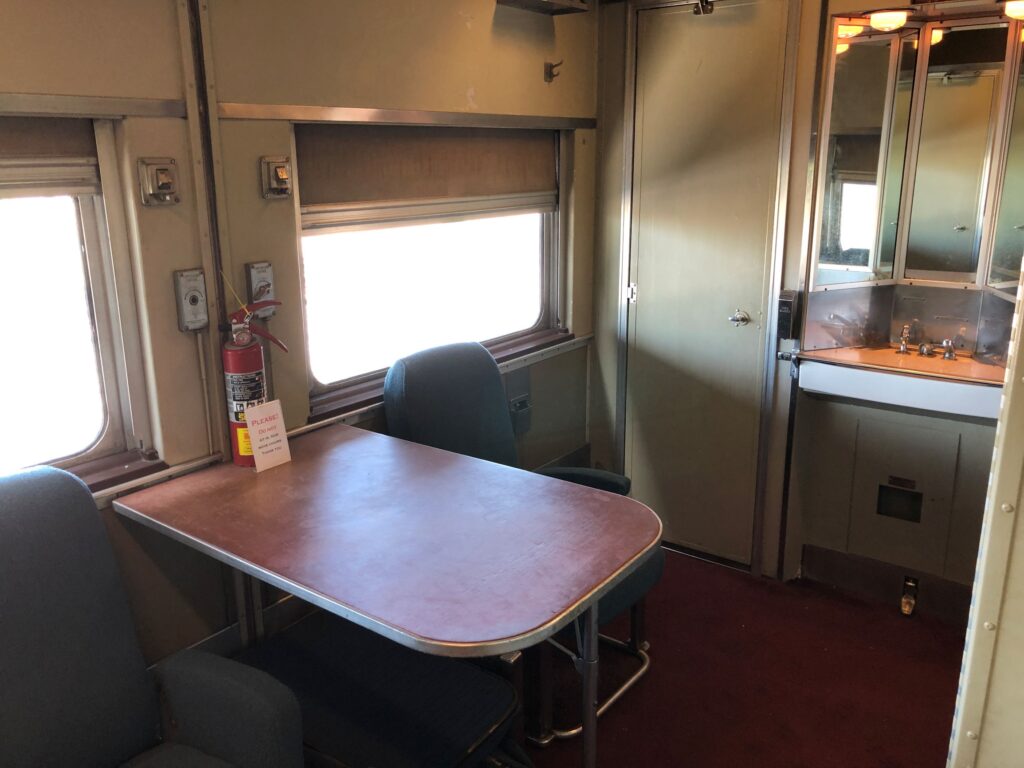
…and converts to a bedroom at night
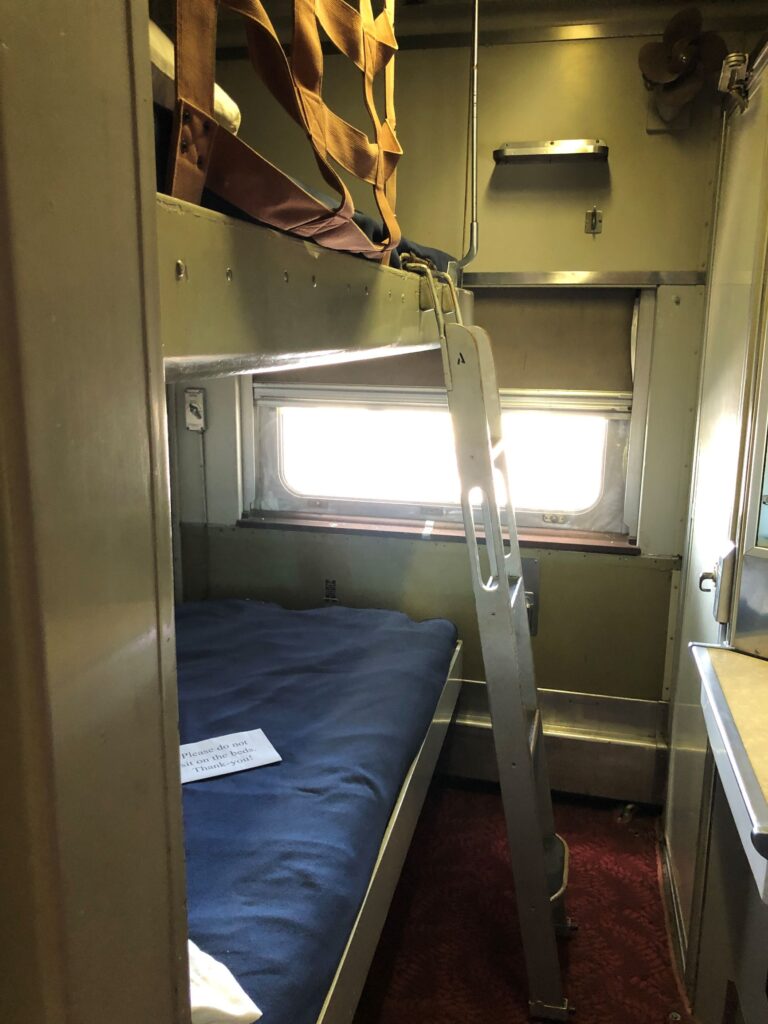
The toilets used to flush directly onto the tracks… don’t flush in the station!

This car had a tub and shower – looks like it could use a good cleaning…
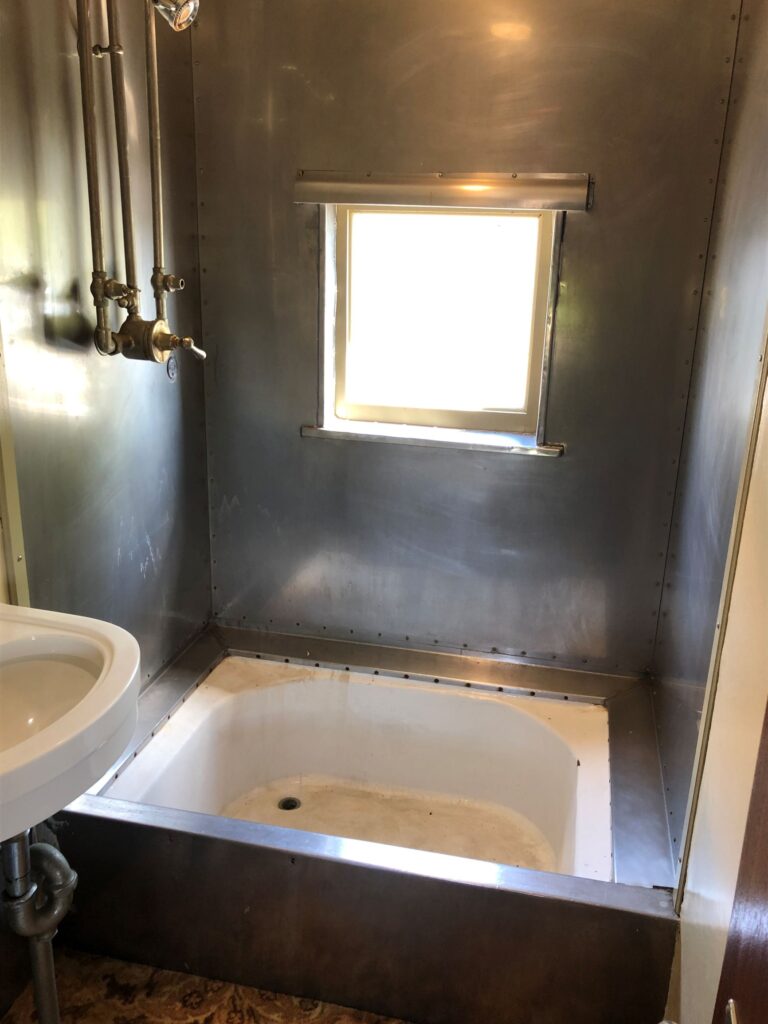
Deluxe sleeping accommodations in this car!
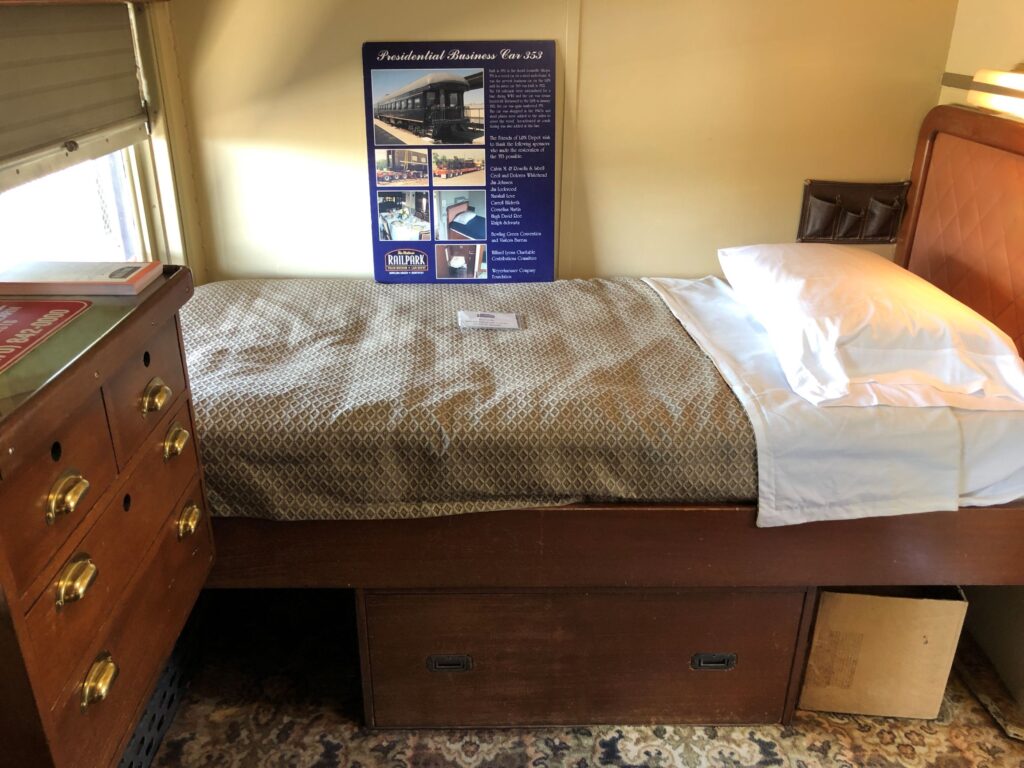

After touring the railcars, we took a look at the museum. There was a large model train set up.
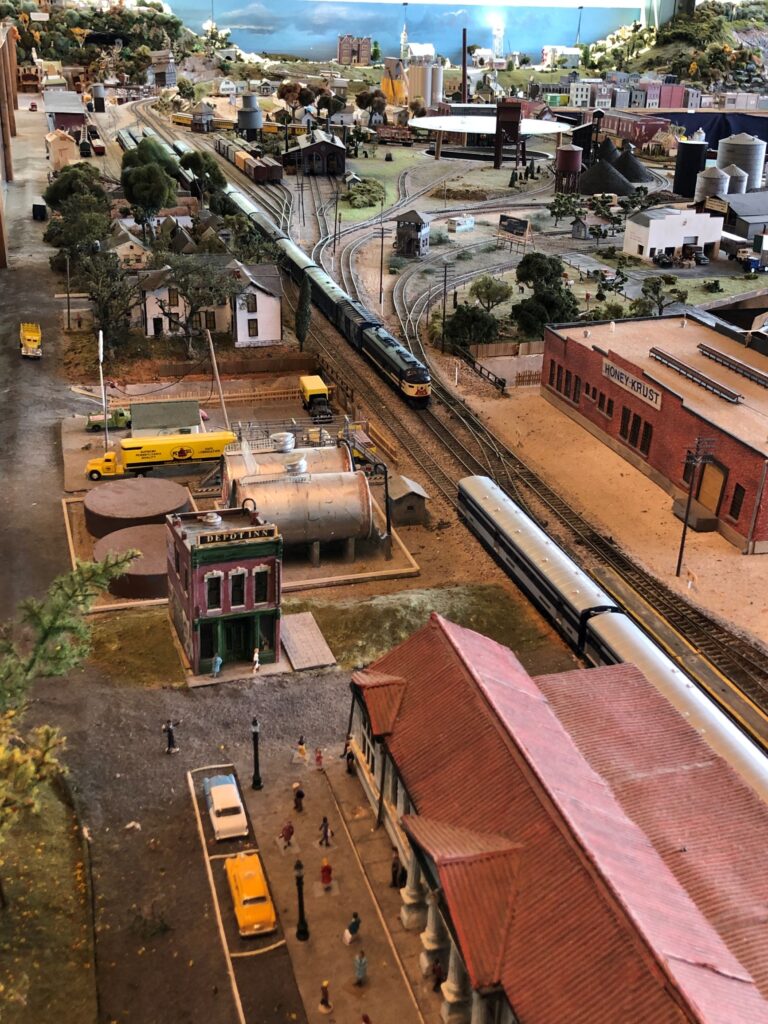
President Lincoln was a driving force in building the first transcontinental railroad.
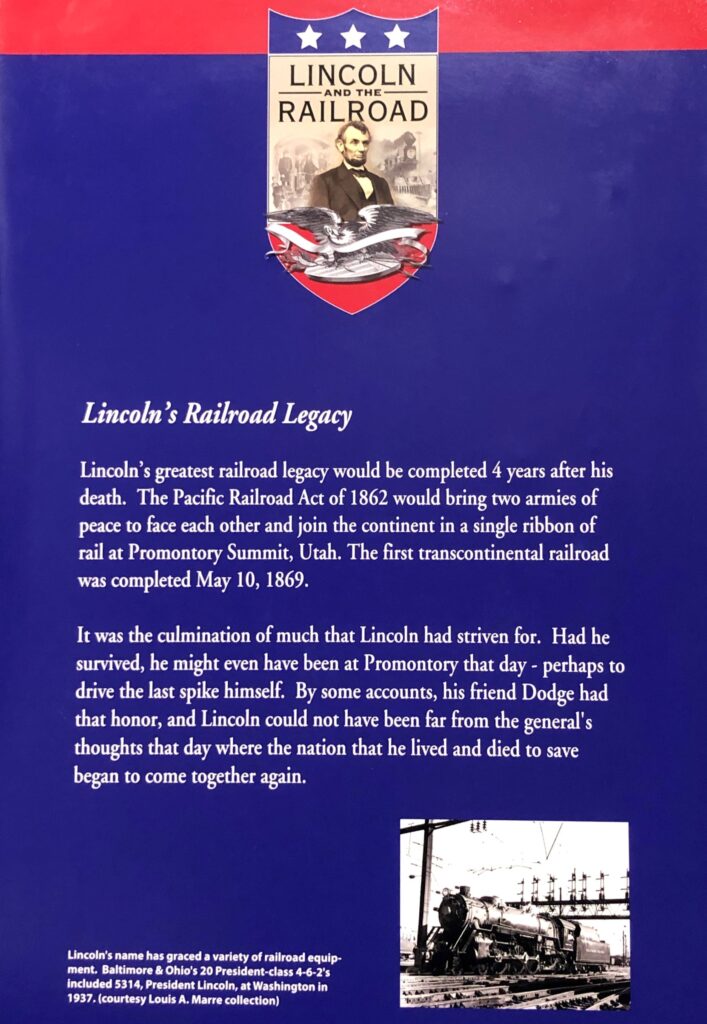
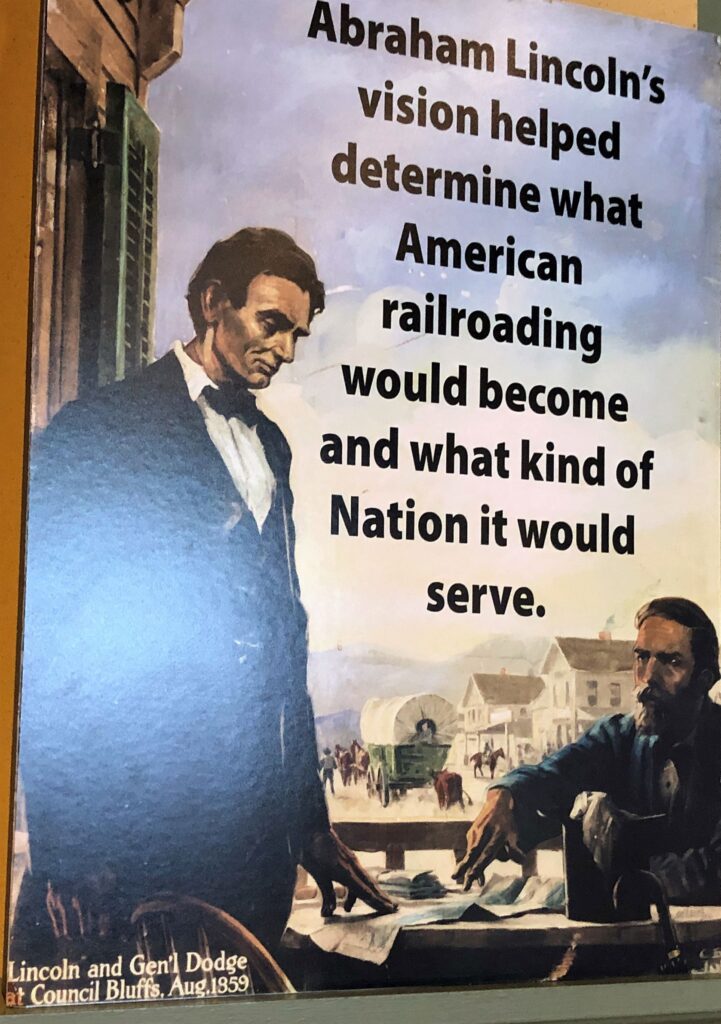
The Abraham Lincoln streamliner train
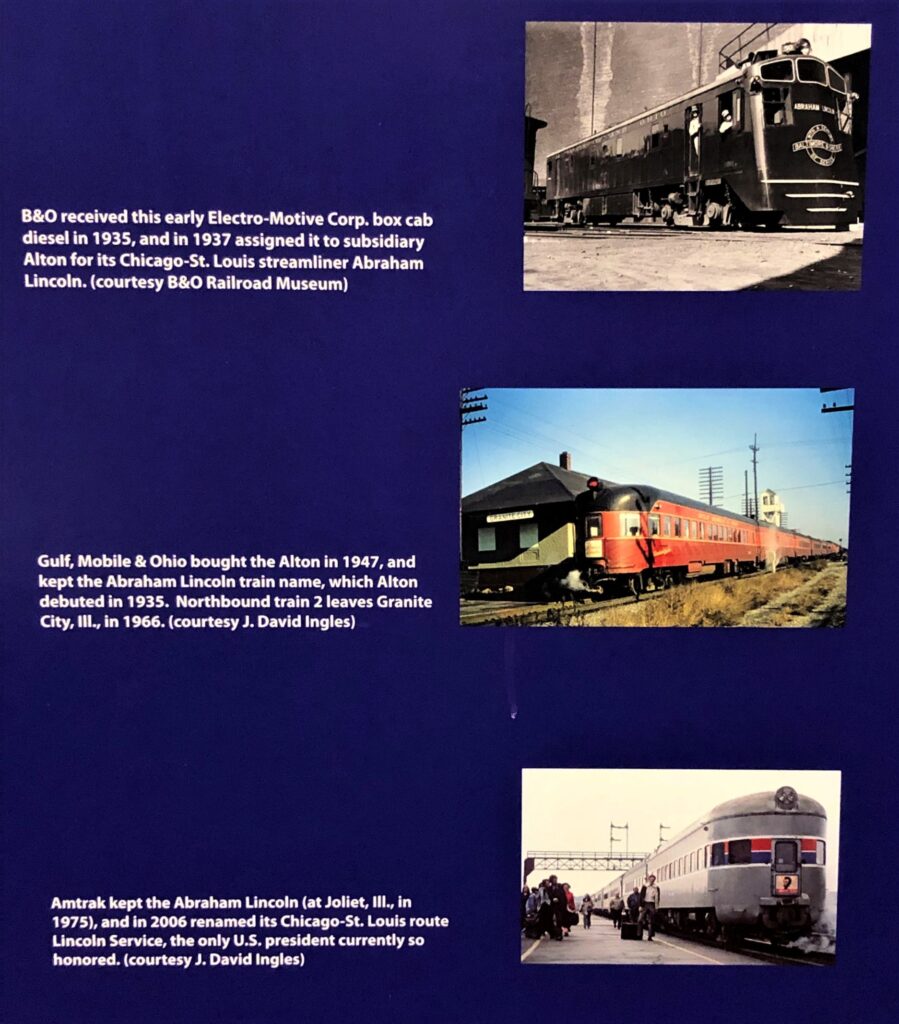
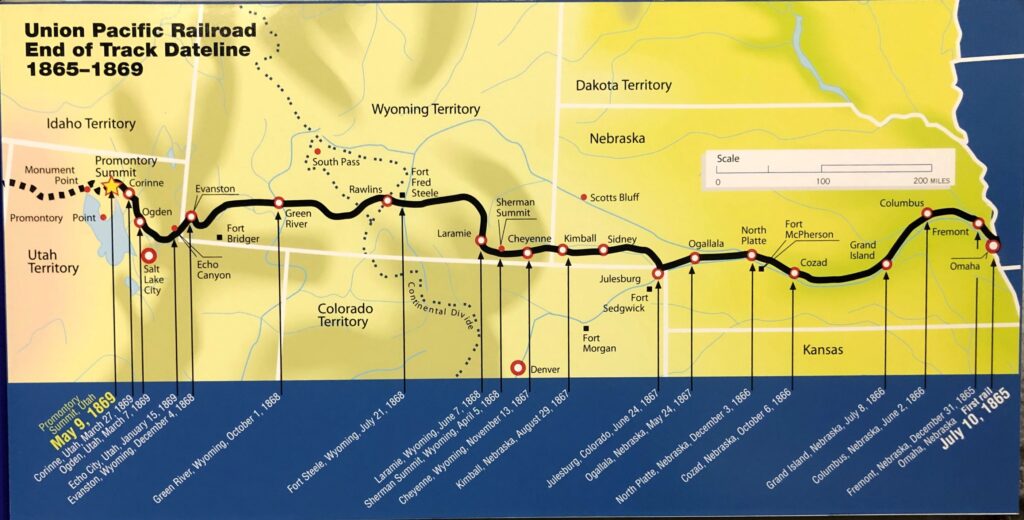
Quite a trestle!

Completion of the transcontinental railroad – June 5, 1869
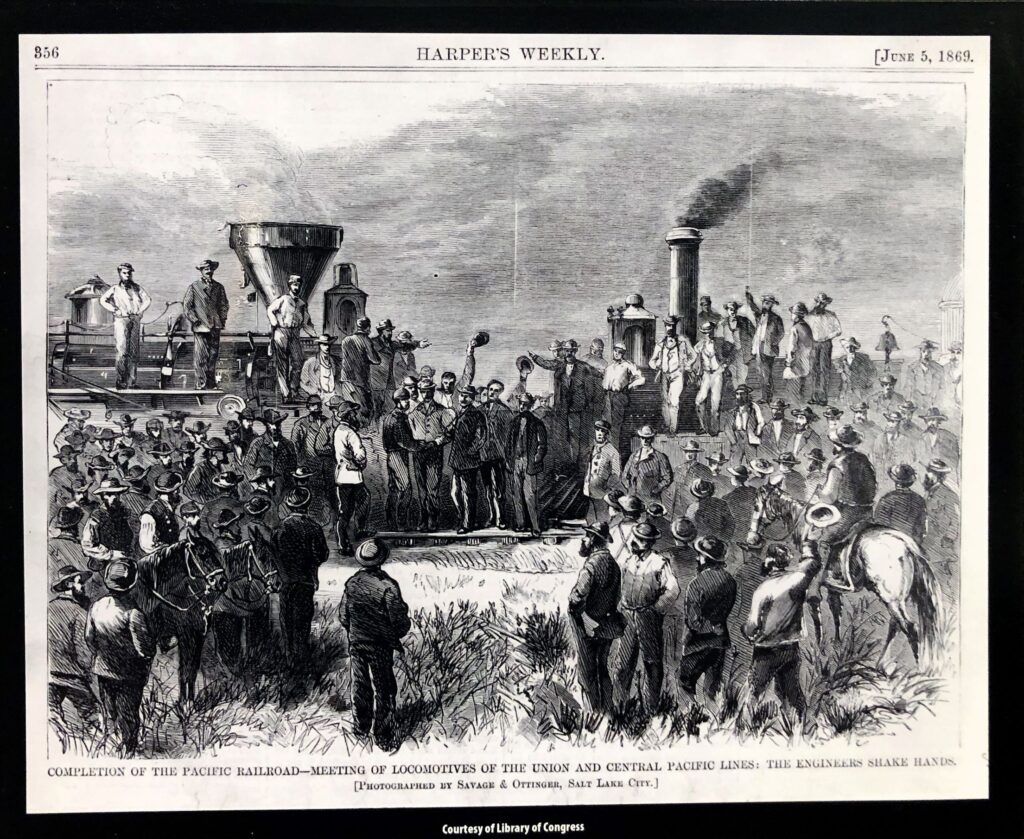
George Pullman developed “first class hotel accommodations” for trains
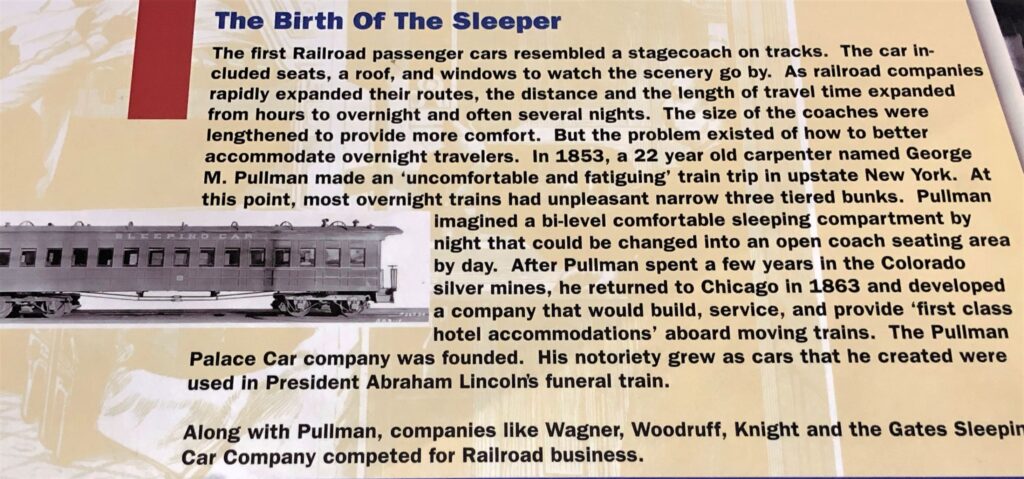
He was quite an amazing fellow!
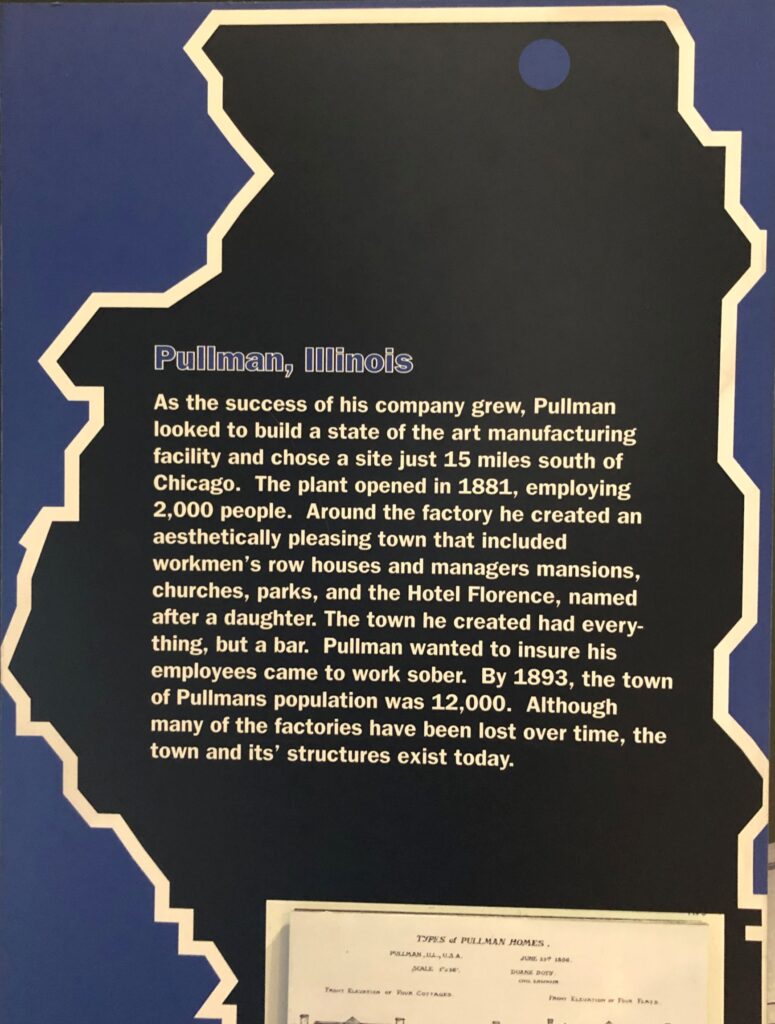
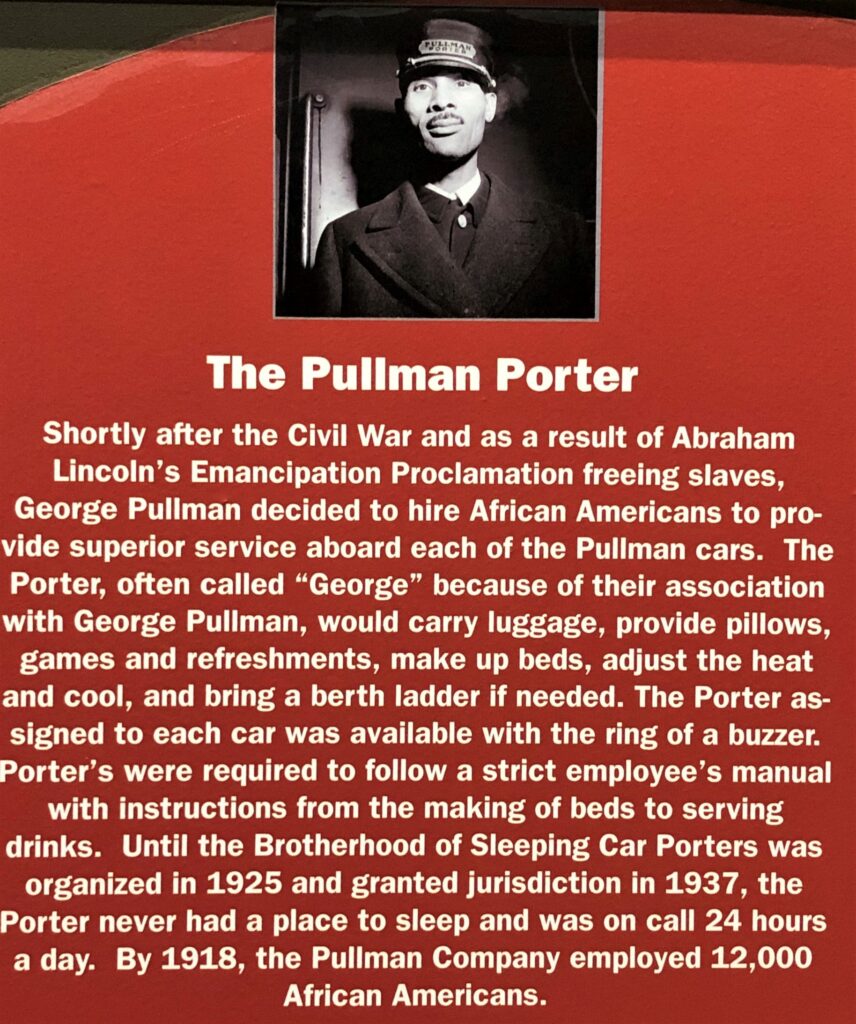
Interesting train related trivia

Innovations as a result of train travel made me think of the technology that has come about because of the space program.
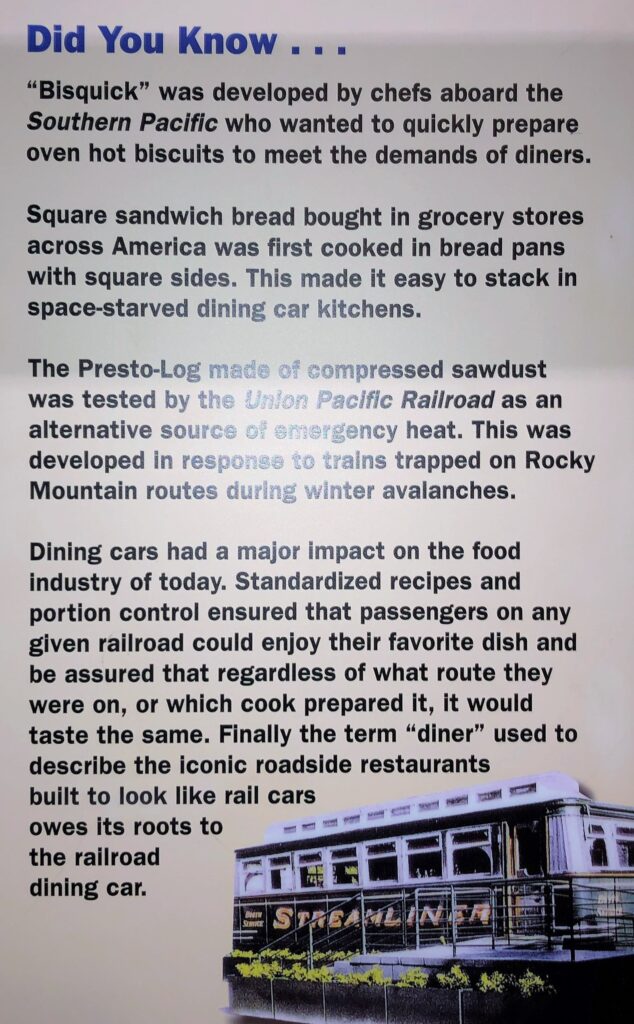
A lovely display of china used in the dining car
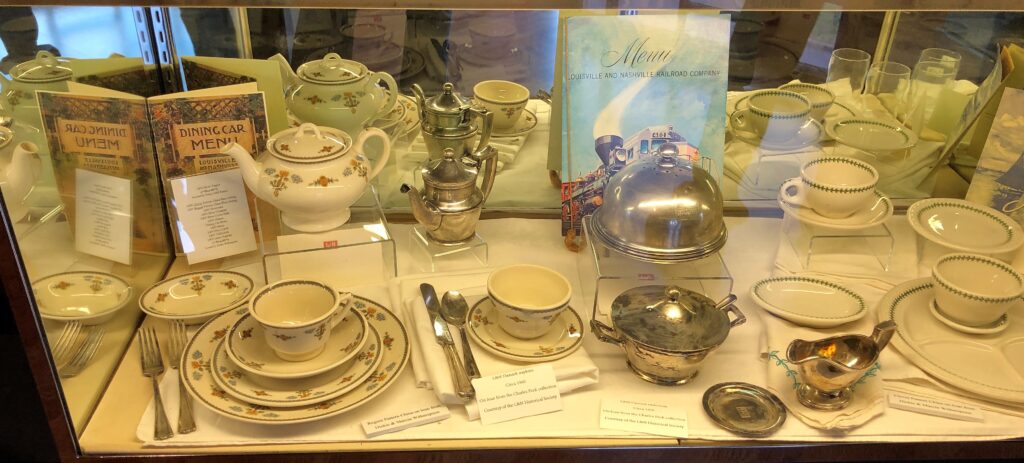
We came back outside again to see the cars we could not tour on the inside. This Army Hospital Car is in the process of being restored. “The Car was built by the American Car and Foundry Company of St. Charles in Missouri in 1945, and is one of one hundred Army Hospital Cars built to bring injured troops home from World War II.” Here is what it looked like when it arrived
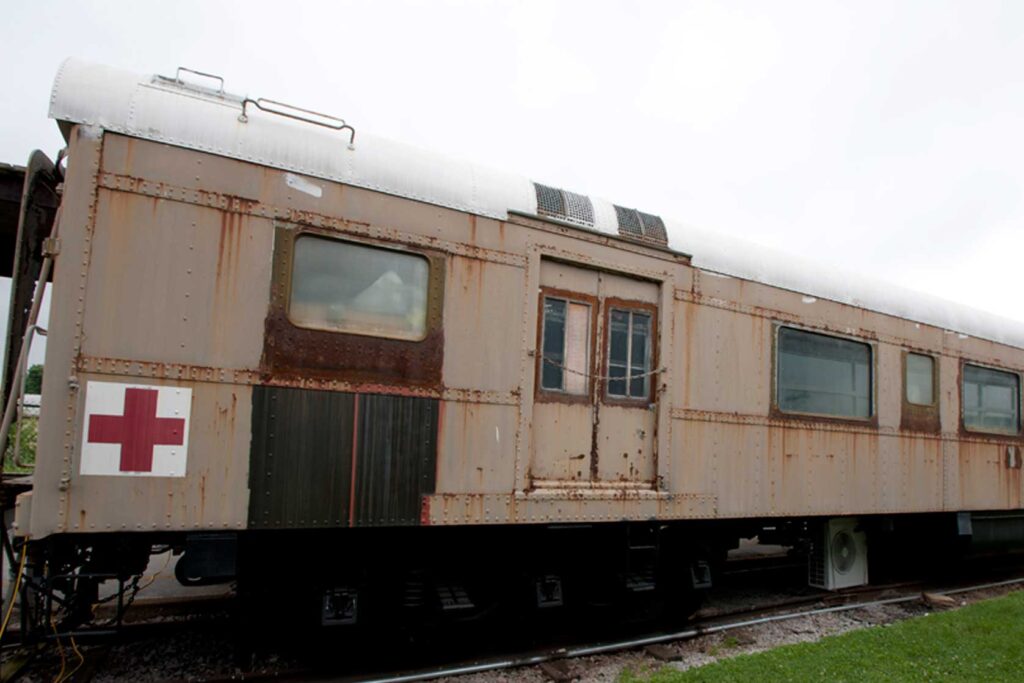
They have done a lot of work on this railcar, but have much more work to be done!
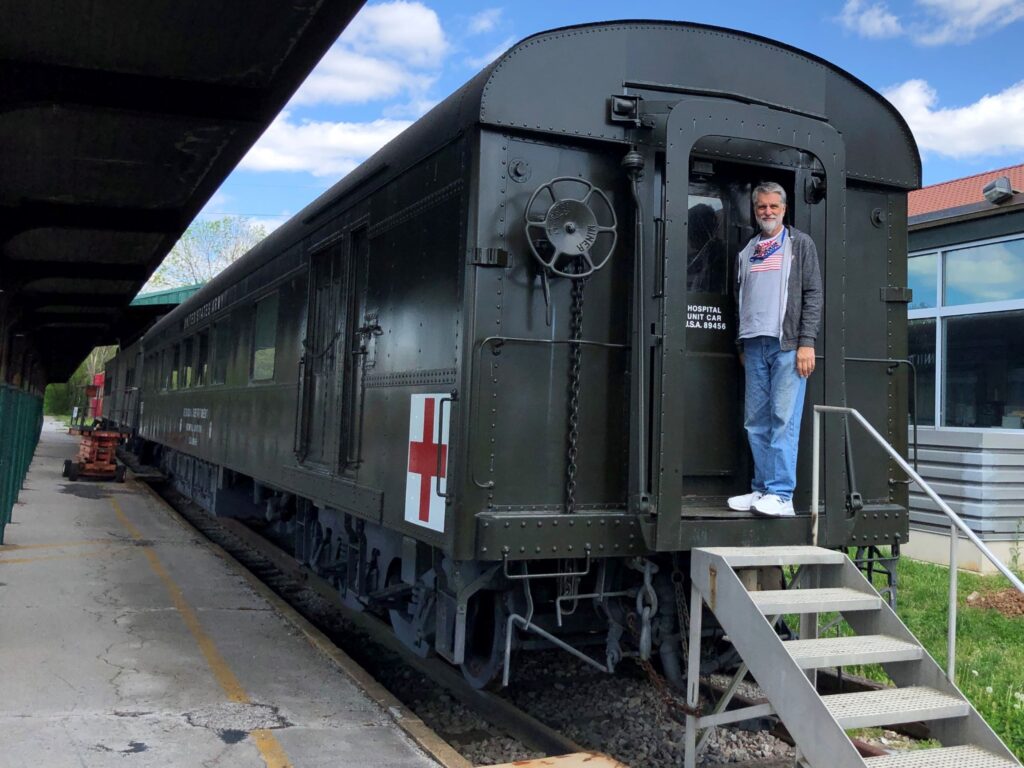
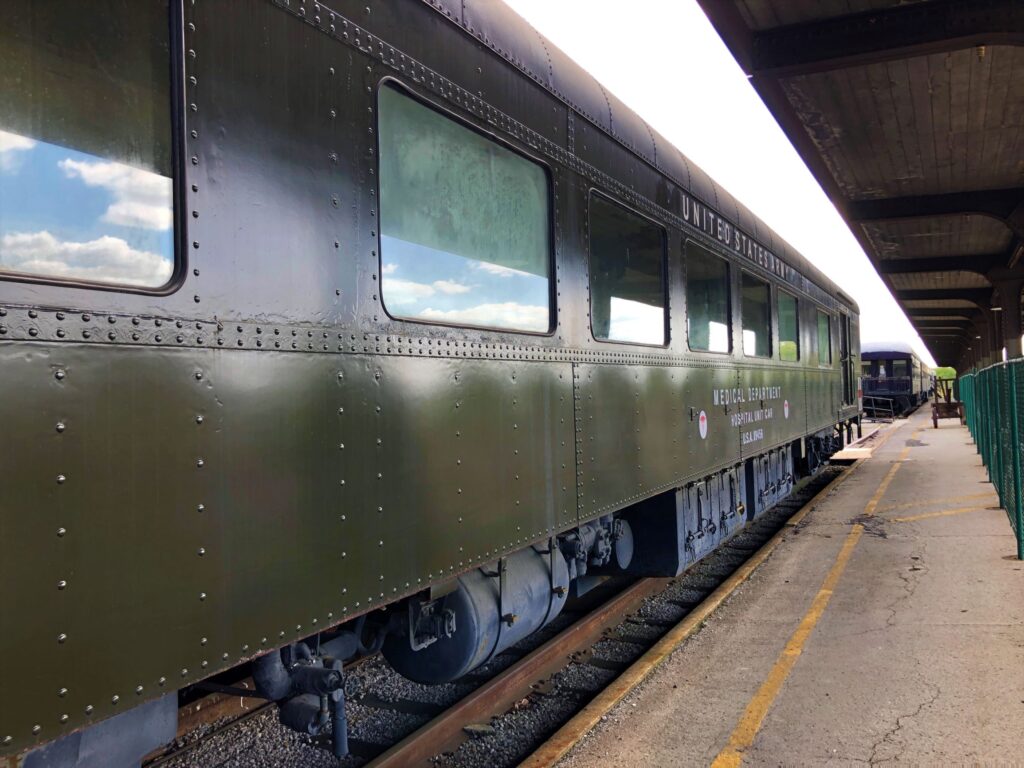
This L&N Car 109 was a “Jim Crow” car built in 1911, and was in service until 1955 – it came to the museum in 2015. A car of his type would segregate passengers; whites in the front, baggage in a center section and blacks in the back section.
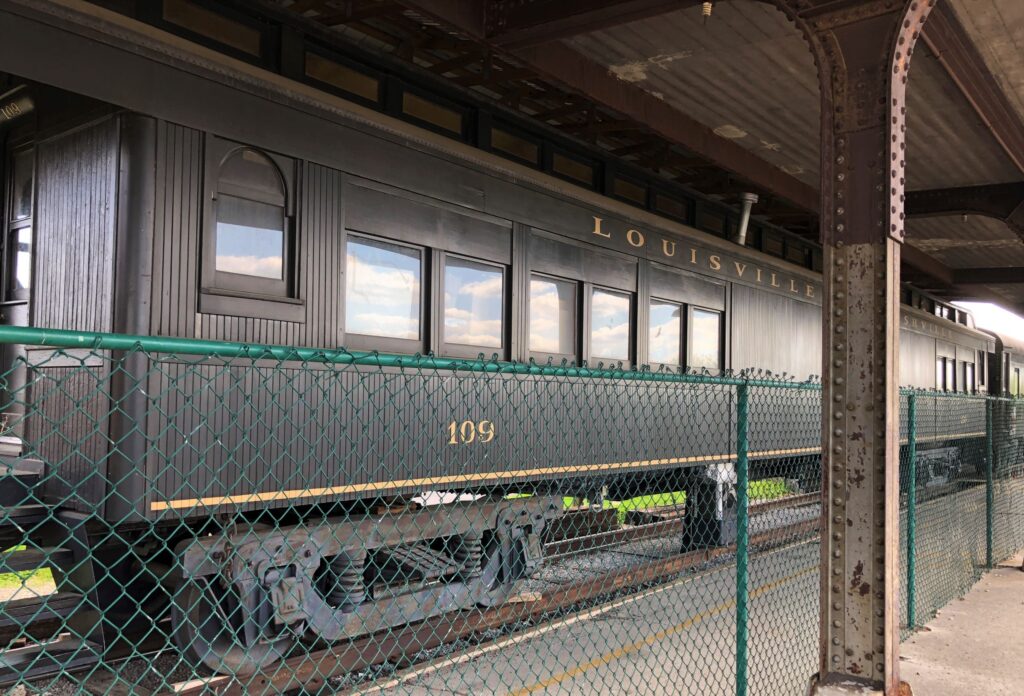
“The L&N Caboose Our Caboose was donated by CSX Transportation and is a Chessie Class C-27. It is one of 62 cabooses built for the B & O Railroad by the Fruit Growers Express Company at their Alexandria Virginia Factory between February and May of 1978.”
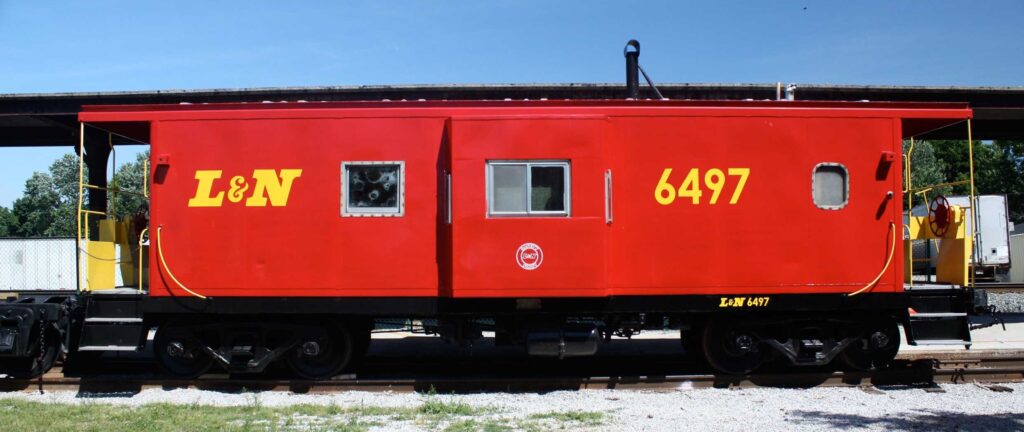
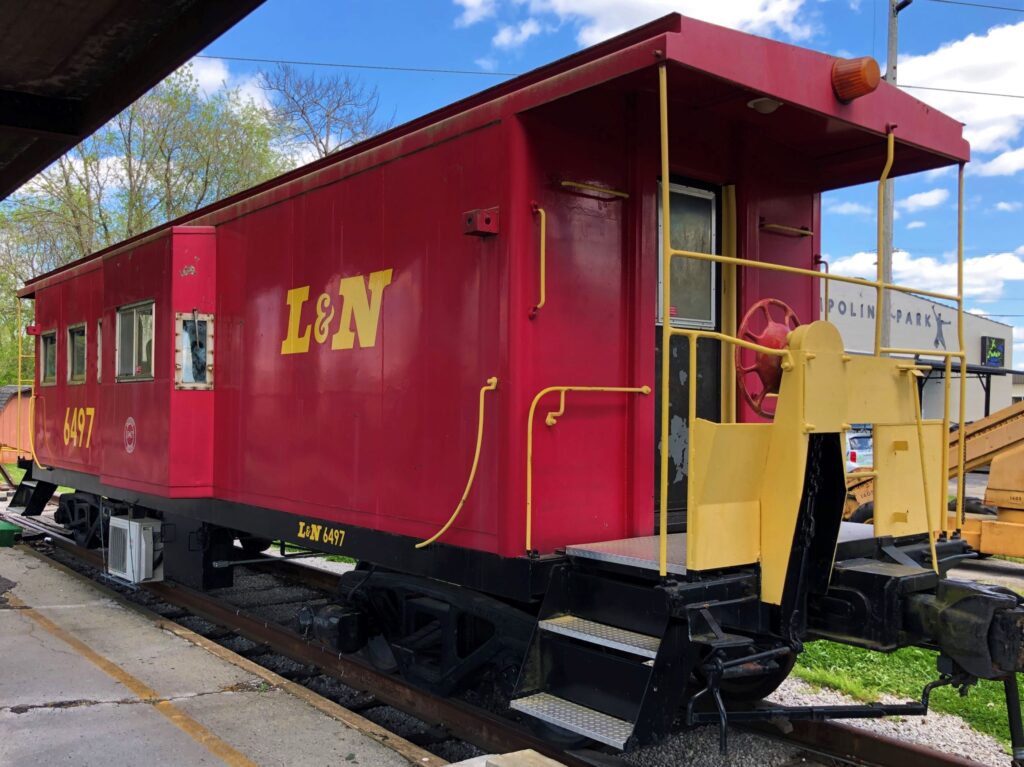
“The 796 E-8 Locomotive In 1937 Electro Motive Division of General Motors built the first E-Unit locomotive for the B&O Railroad. Ten different models of E-Units were built over a span of 25 years…” We could not view the cab of this engine.
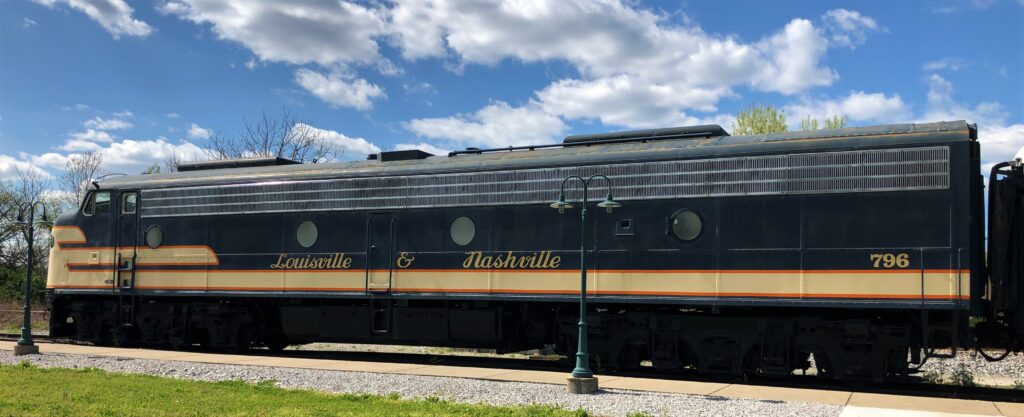
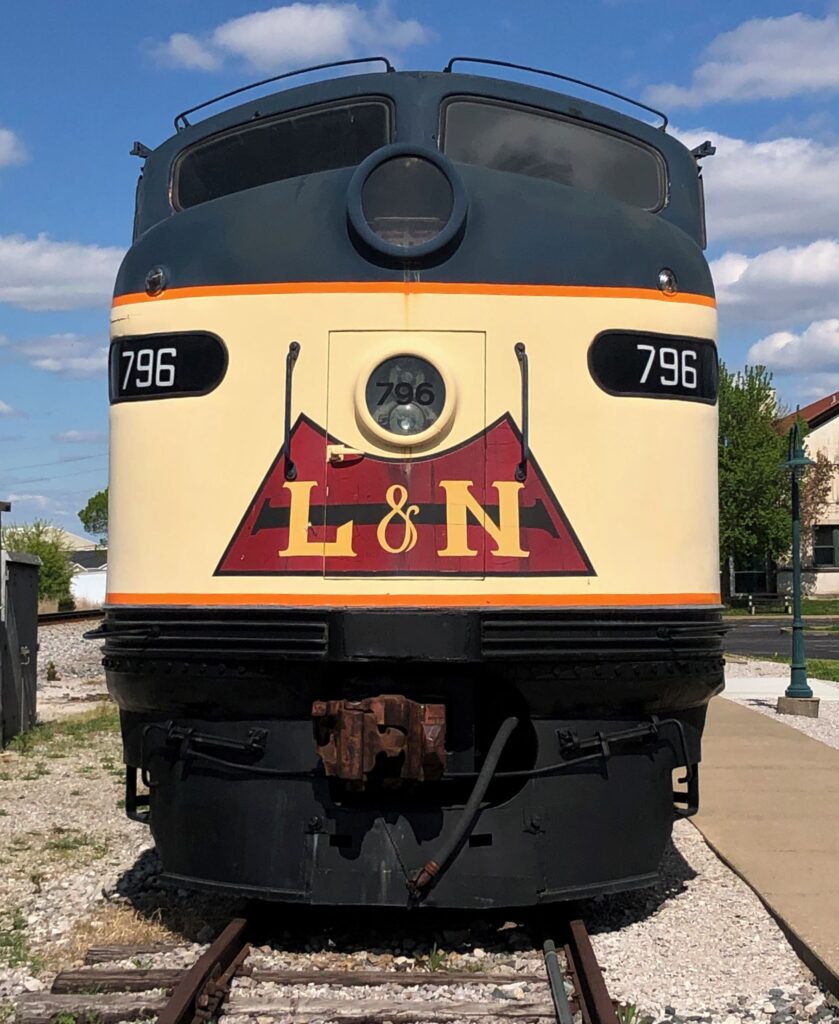
We enjoyed our visit to this museum in Bowling Green and after a stop at Gasper Brewing, we headed back to Acey.
Friday we visited the nearby ruins of Bell’s Tavern. Built in 1830 by William Bell, it was a convenient stop for visitors to Mammoth Cave. It became famous for its elite patrons from the US and Europe, its cuisine and magic peach and honey brandy for “Joy before the journey’s end”. It was a really happening place until its total destruction by fire in the 1860. The American Civil War thwarted rebuilding attempts by the grandson, William F Bell and his stepfather, George M Proctor. Currently, the ruins sit abandoned in a park.
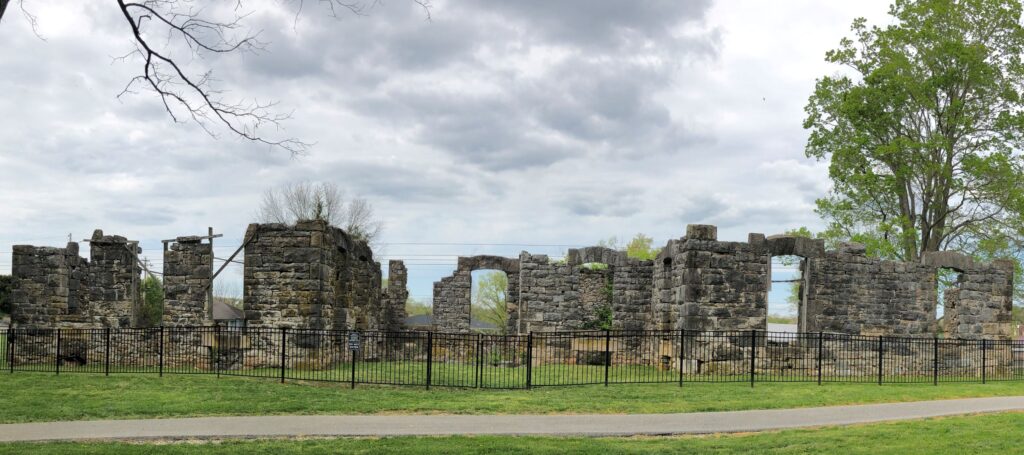
Evidence of the fire was obvious in places.
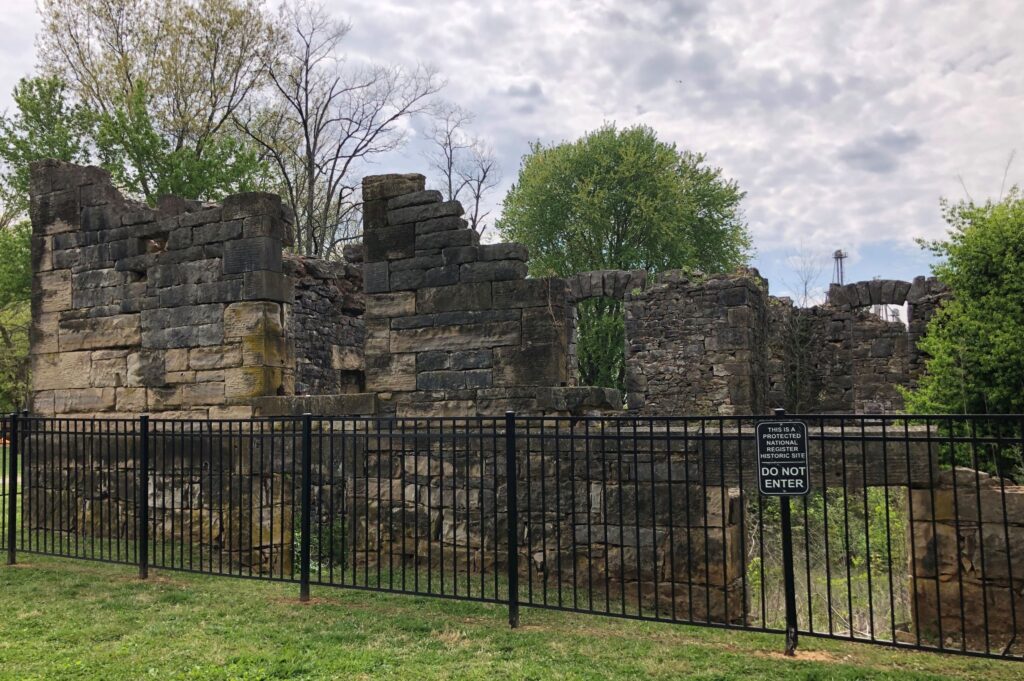
It must have been a beautiful building at one time
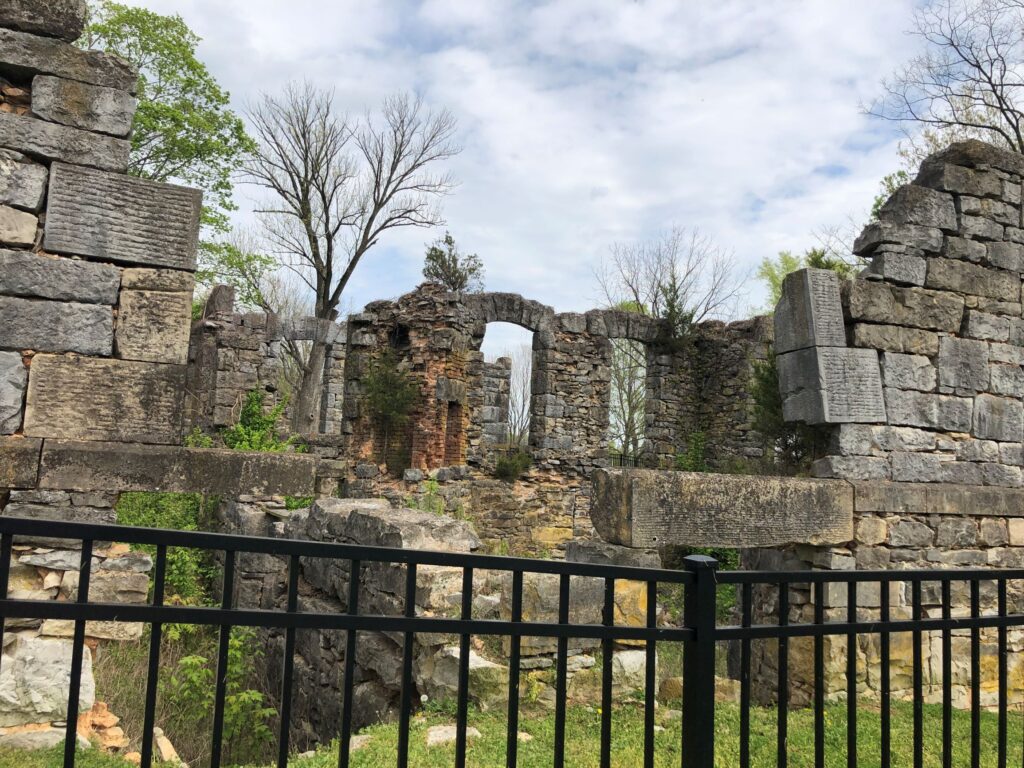
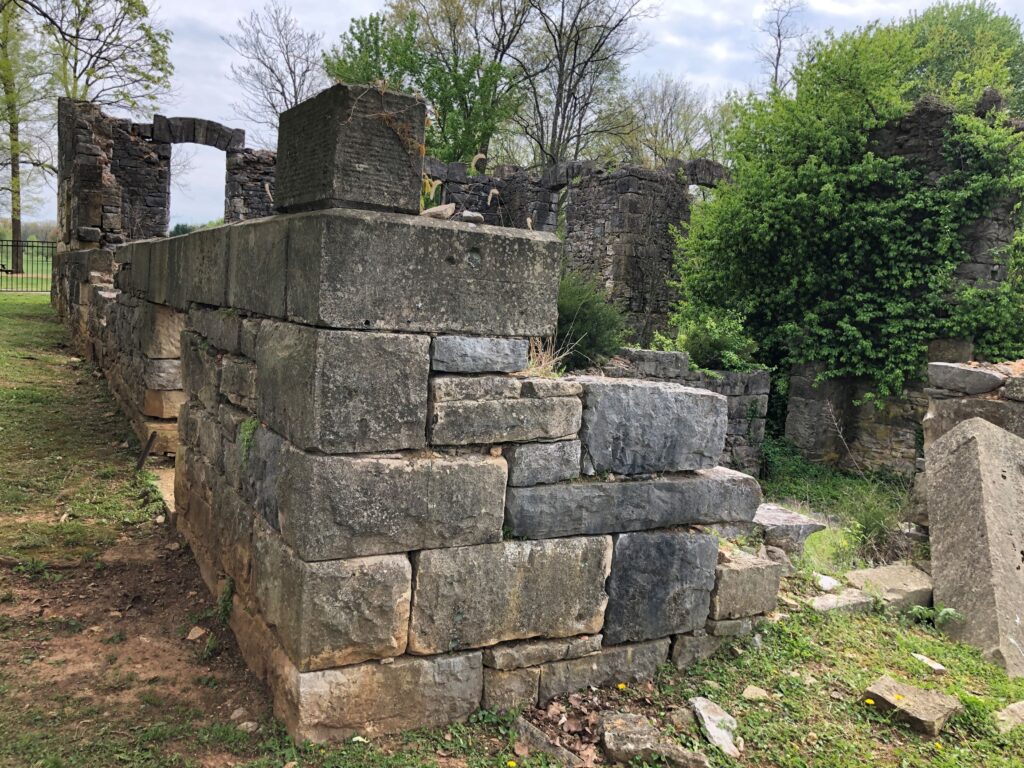
Even the sign looks like it could use some love…
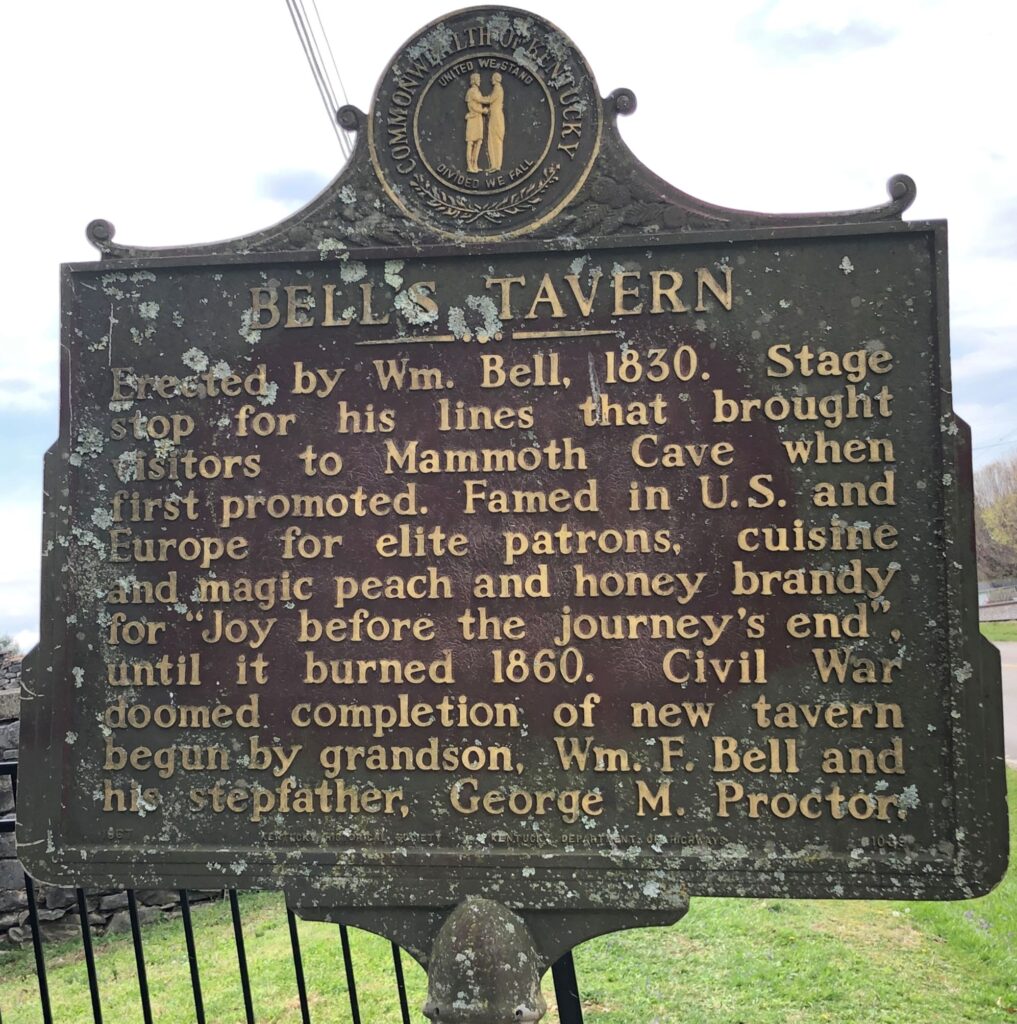
Sunday we drove back to Nashville and attended Sunday School and worship at Stephens Valley Church. Afterwards, we had lunch with Eve and Chris. Linda and Eve’s Book Club had read about the most deadly train wreck in the US – and it happened in Nashville! The book was The Day the Whistles Cried: The Great Cornfield Meet at Dutchman’s Curve. The cover of the book has a photo taken on the day of the wreck – July 9, 1918, taking the lives of more than a hundred people and injuring at least 300 others.
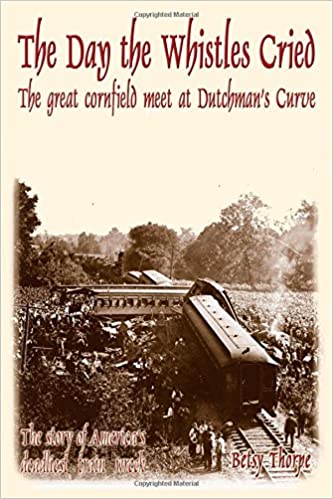
The author, Betsy Thorpe, investigated where the historical marker was – and when she found there wasn’t one, she became instrumental in having one placed in 2008, 90 years after the event. So we went to see the area.
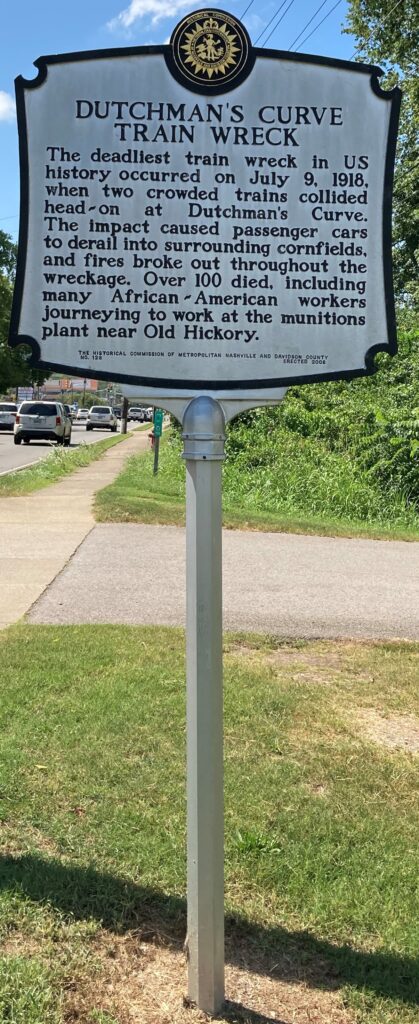
There is a nice Greenway that encompasses the site.
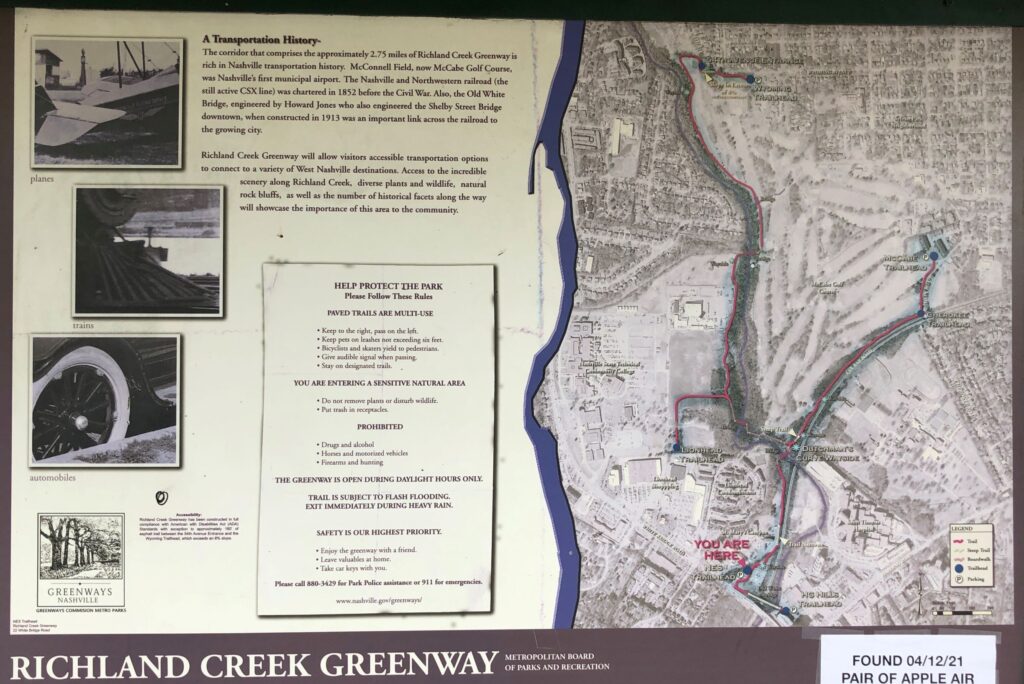
The curve was a contributing factor to the impact of the crash; the trains did NOT slow before the crash and they met at a combined speed over 100mph.
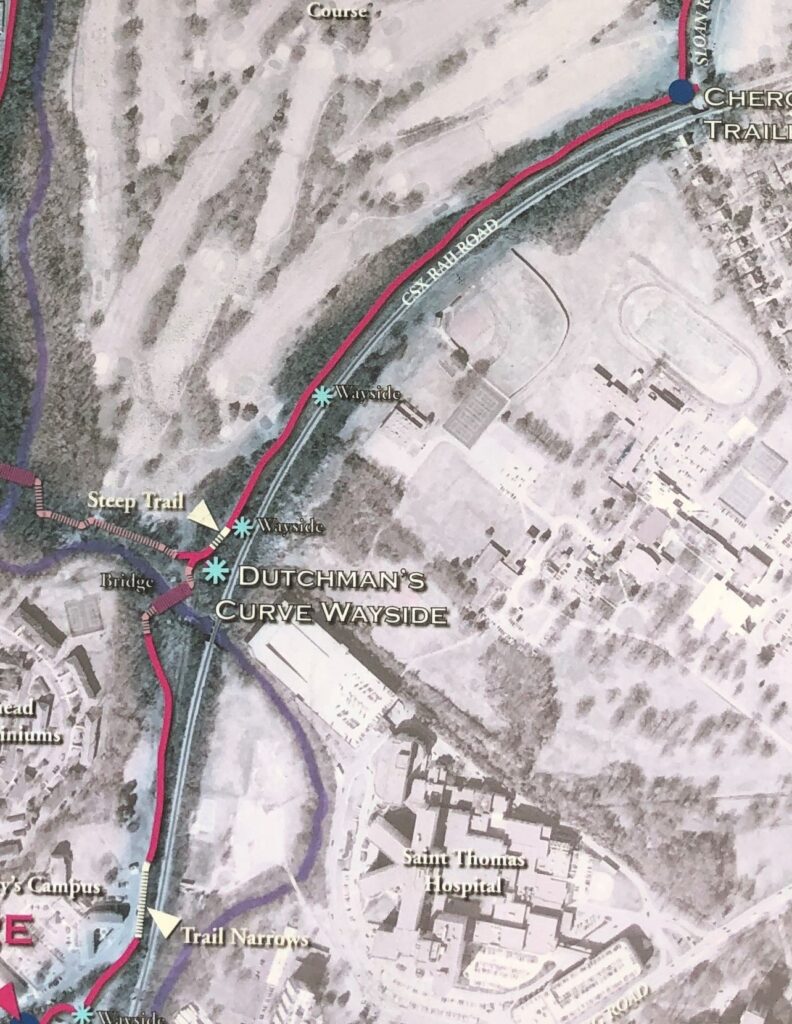
A train coupling imbedded in the concrete walkway near the crash site.
This train wheel is not from the wreck either.
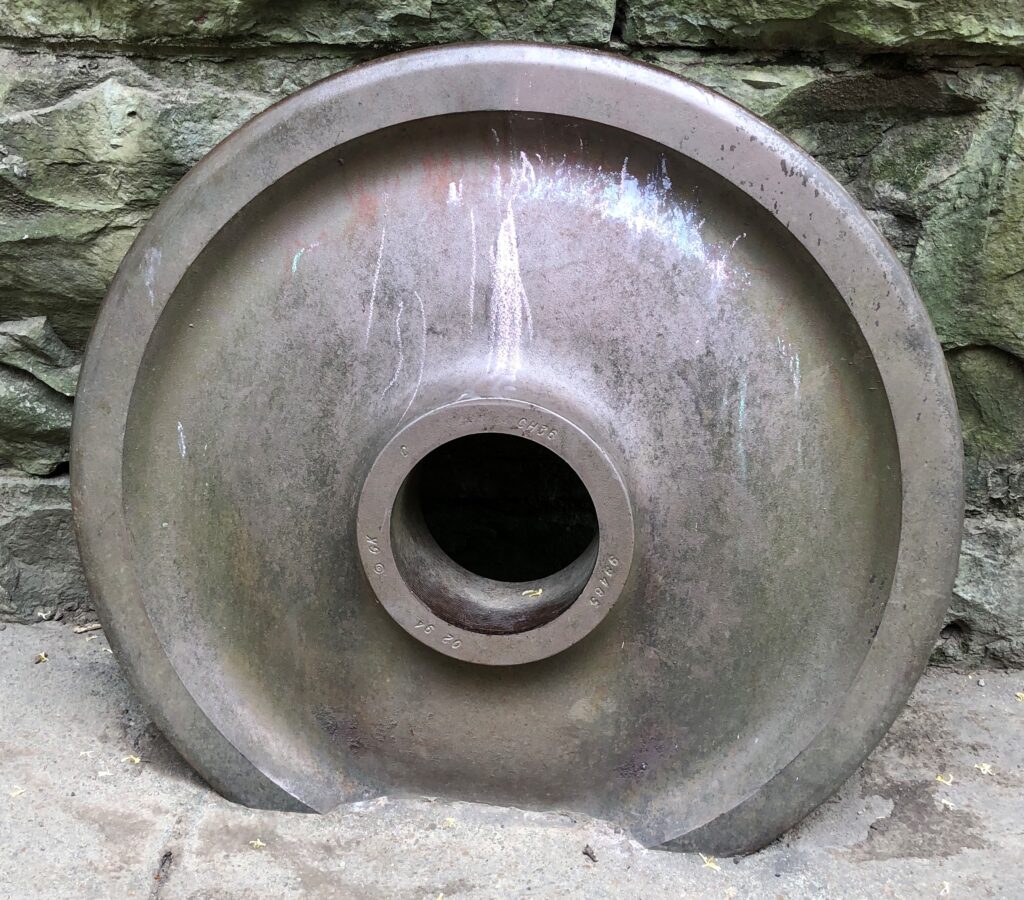
It’s a shame this sign is in such bad condition – telling the tale of the crash. One of the photos is very similar, if not the same, to the one on the book cover.
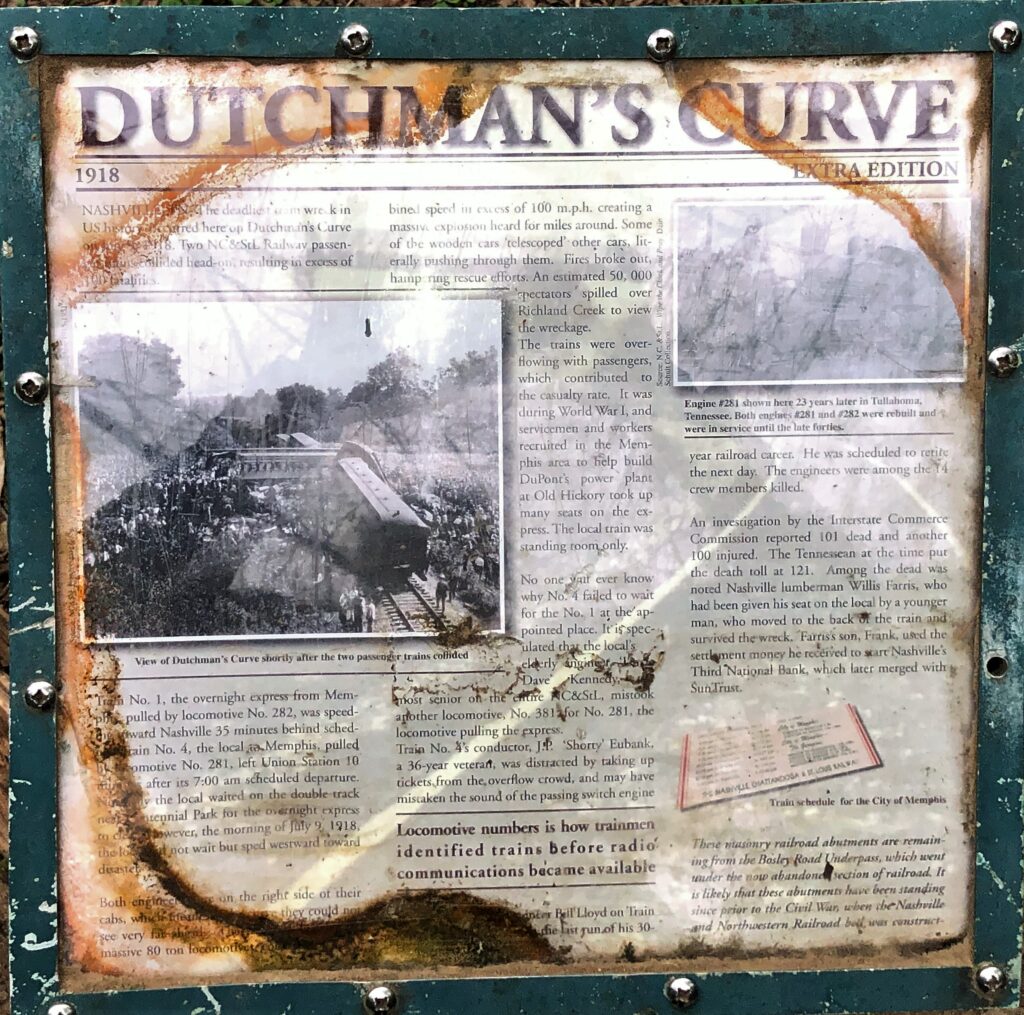
Monday – April 19, 2021- marks ONE YEAR that we have lived in Acey! We didn’t go anywhere today – Jim worked on our route for the next few months, Linda worked on the blog, checked the bank accounts and other paperwork.
On Tuesday, we dusted off the bikes… its been a full month since we have taken them out for a ride. The Mammoth Cave Railroad Bike & Hike Trail follows portions of the Railroad line that used to run here.
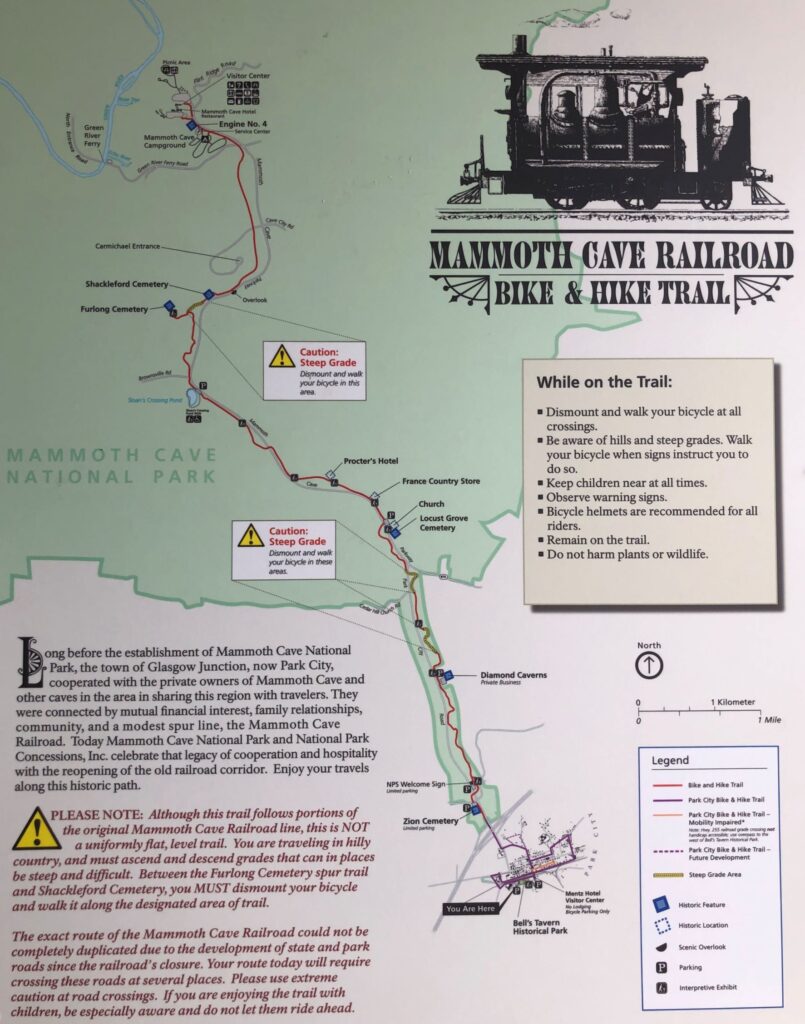
We discovered how out of shape we are! The gravel bike path was hilly and in bad shape too! We didn’t stop to get pictures of the gullies we had to ride around – there has been a lot of rain over the past few weeks.
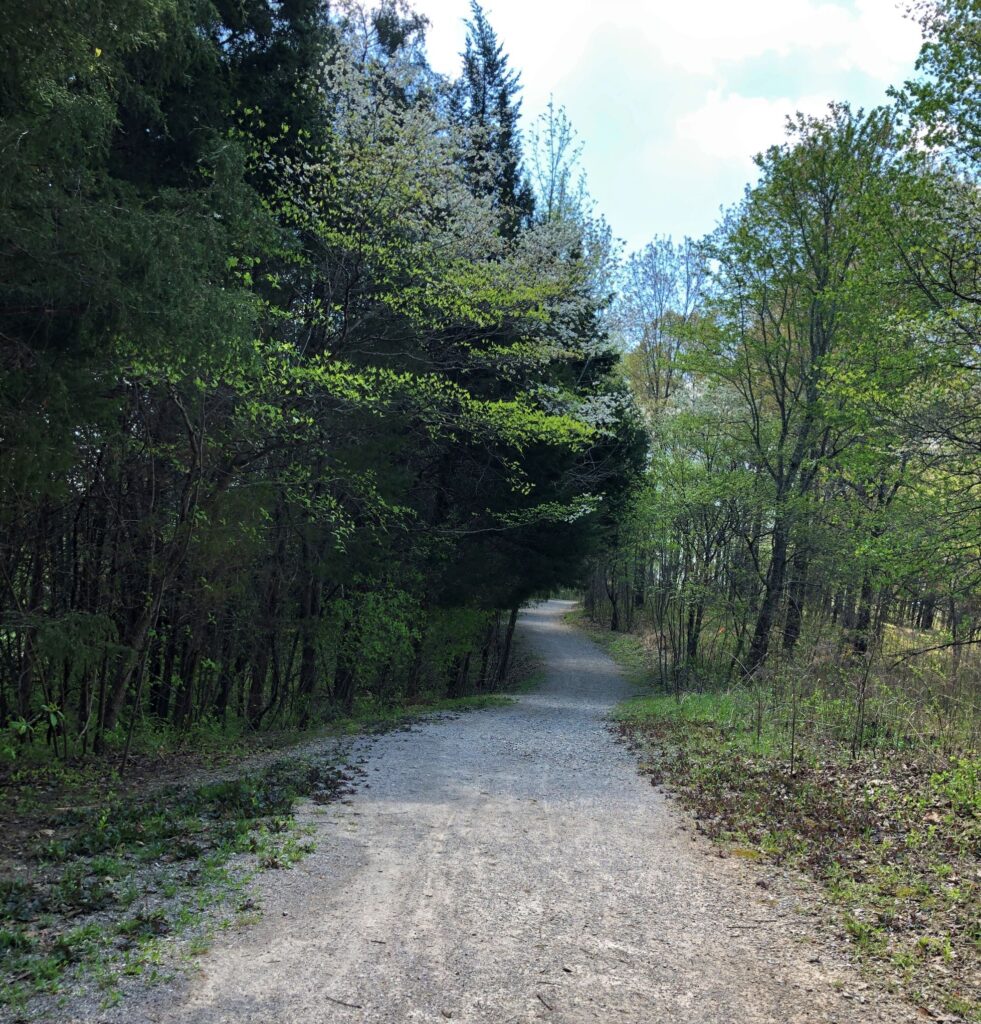
After a couple of miles, we came out on the road, and chose to ride there.
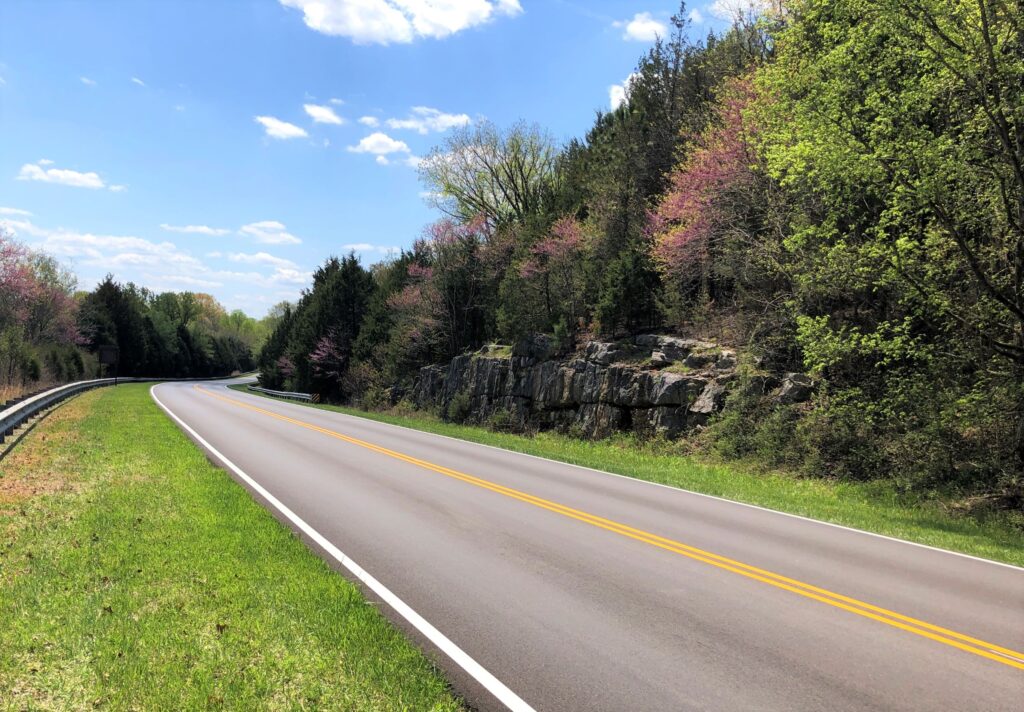
We rode back to Acey and had lunch, then went to play some mini-golf. The course had some colorful and fun features, but nearly every hole had uneven areas, some of the cups were crowned – it was not an enjoyable course to play!
Wednesday we drove to see the Abraham Lincoln Birthplace National Historical Park. The visitor center was open! They had a nice display of information and a short movie. Illinois claims to be “the land of Lincoln” but Abe was born in a log cabin on the frontier in Kentucky.
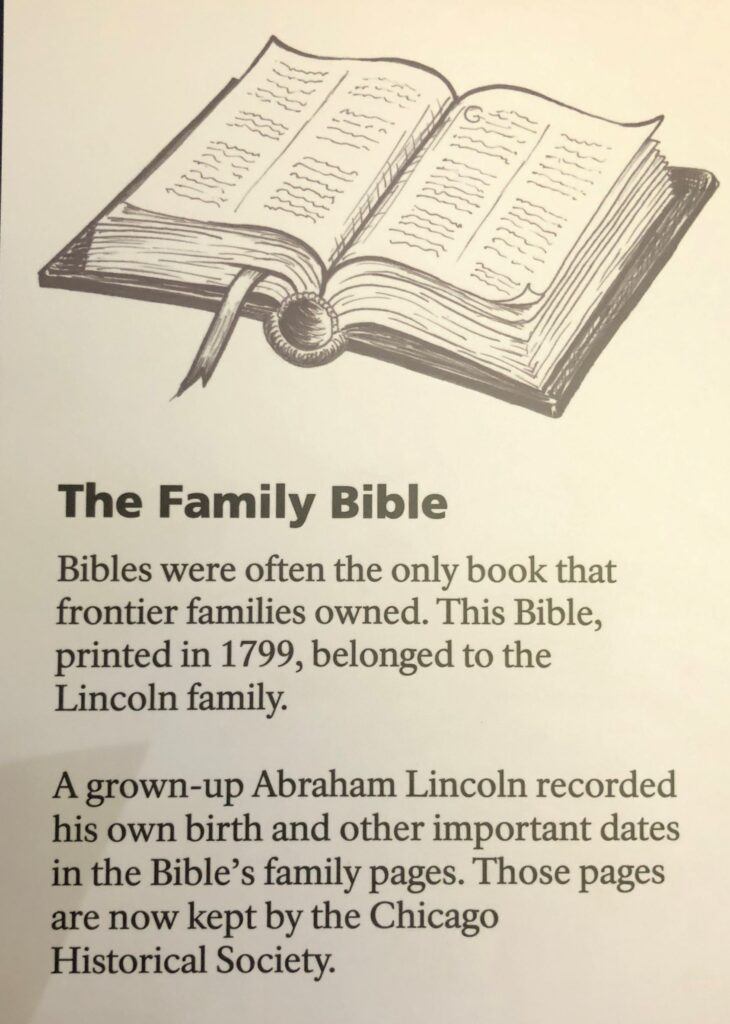
The pages of the Bible are quite thick – the book is probably 4-5″ thick.
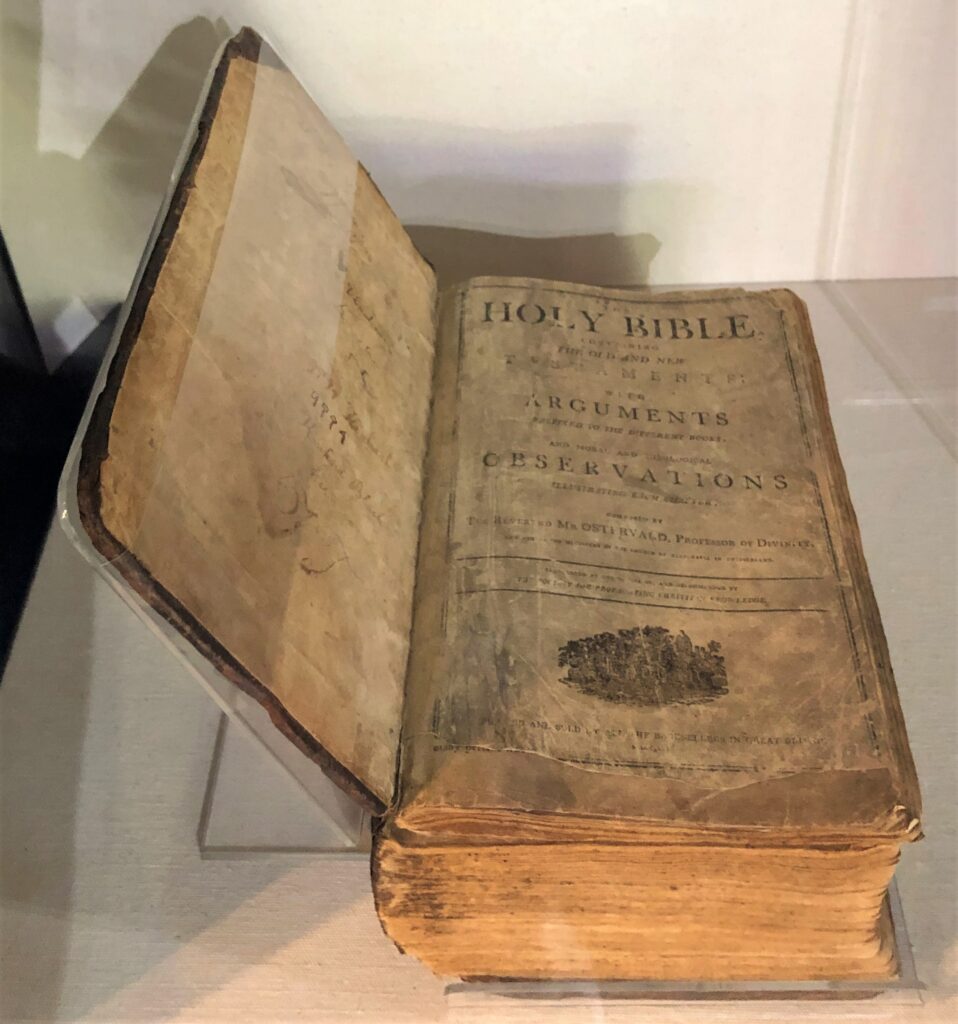
“The Bible’s original pages with Lincoln’s handwriting are in the Archives and Manuscripts Collection of the Chicago Historical Society.”
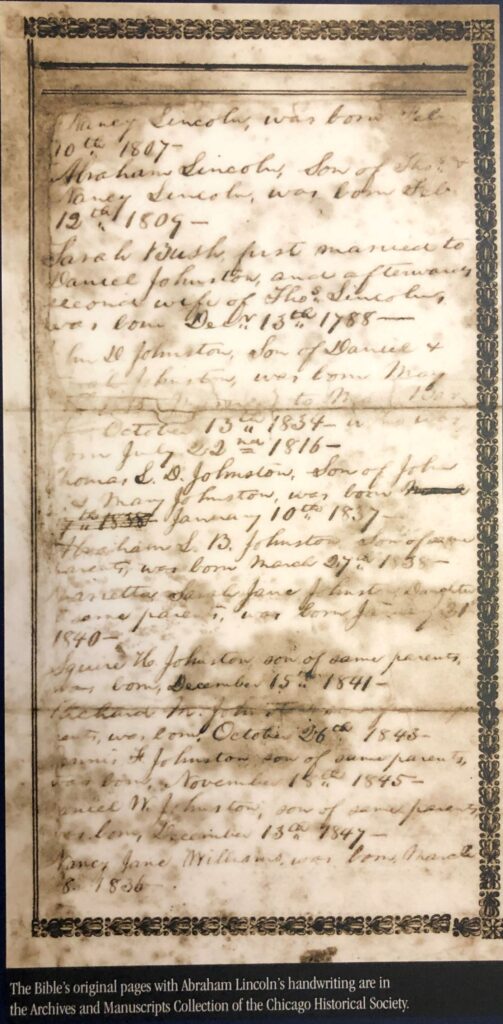

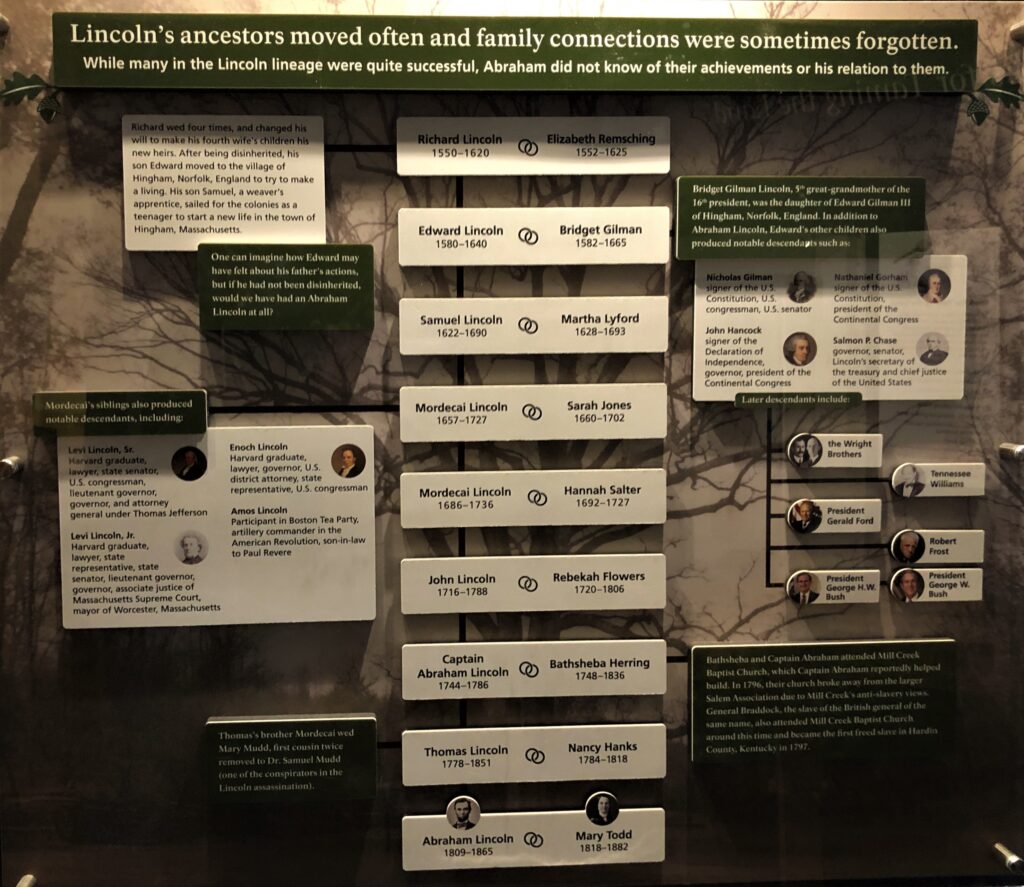
Surprises in the genealogy!
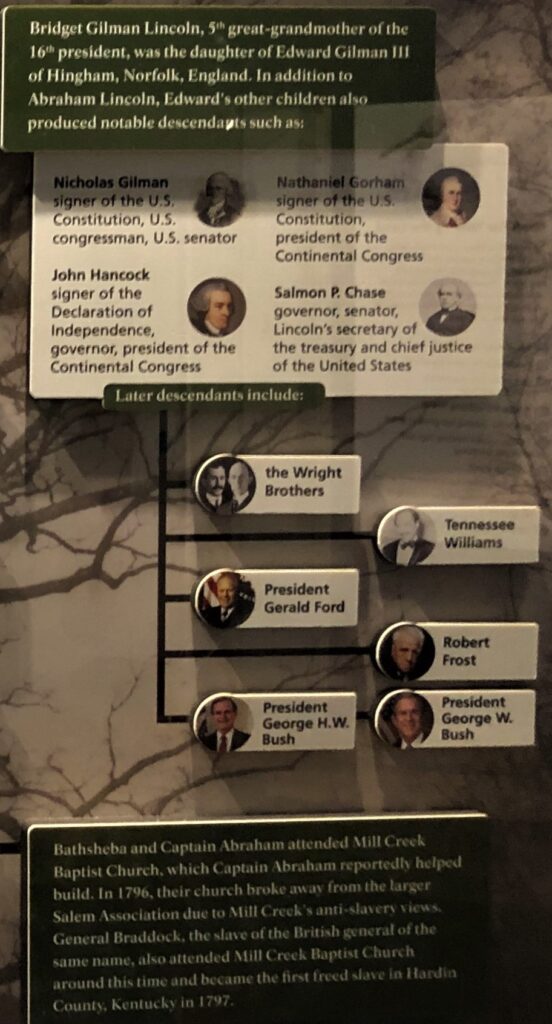
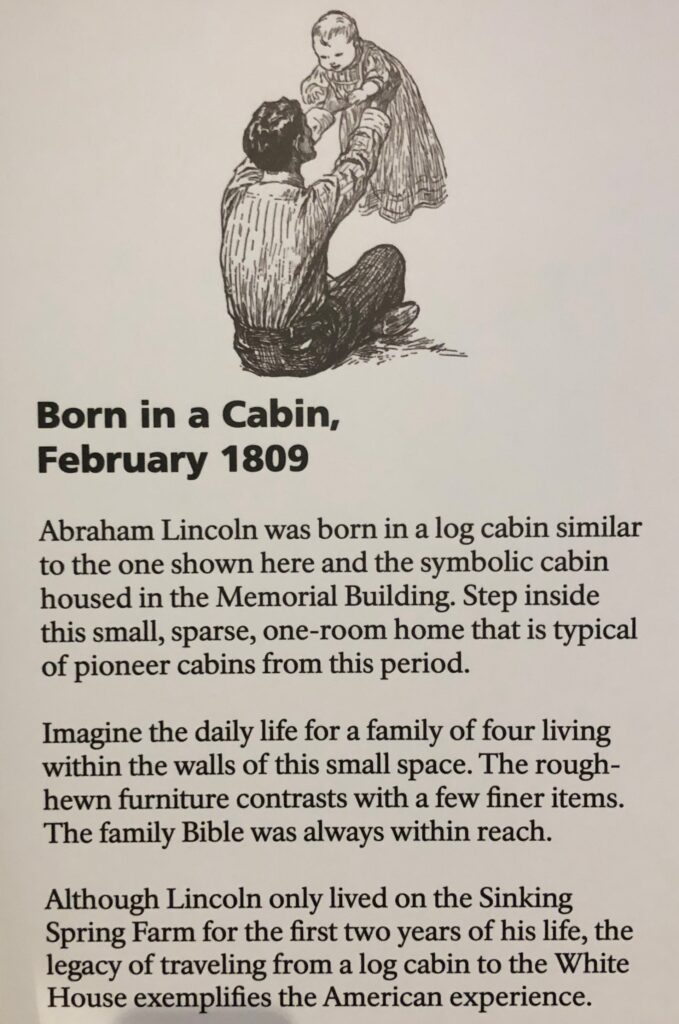
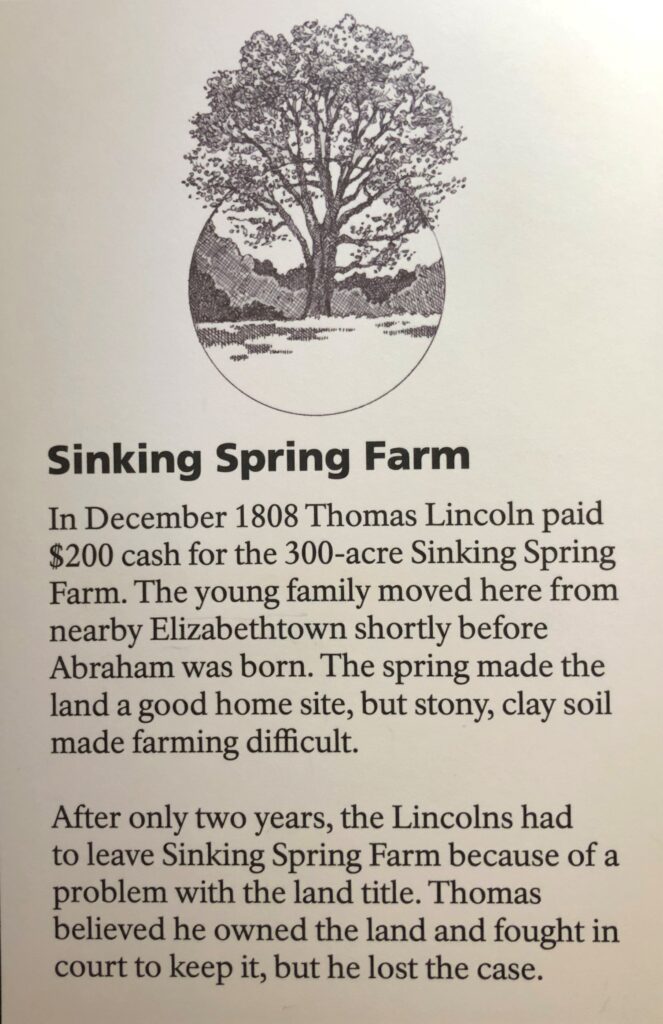
“This cabin, which was scaled down to fit inside the Memorial Building in 1911, is symbolic of the cabin in which Lincoln was born” Originally, it was thought to be THE cabin the Lincolns had lived in.
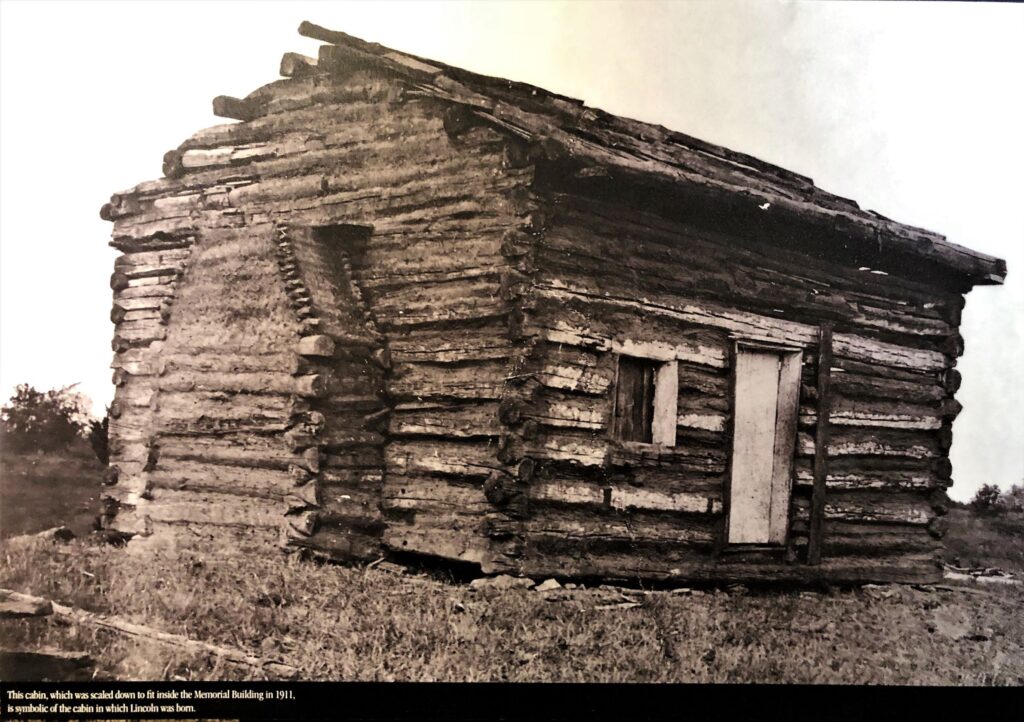
We saw these portraits of Lincoln’s parents and marveled at how much Abe resembled his mother
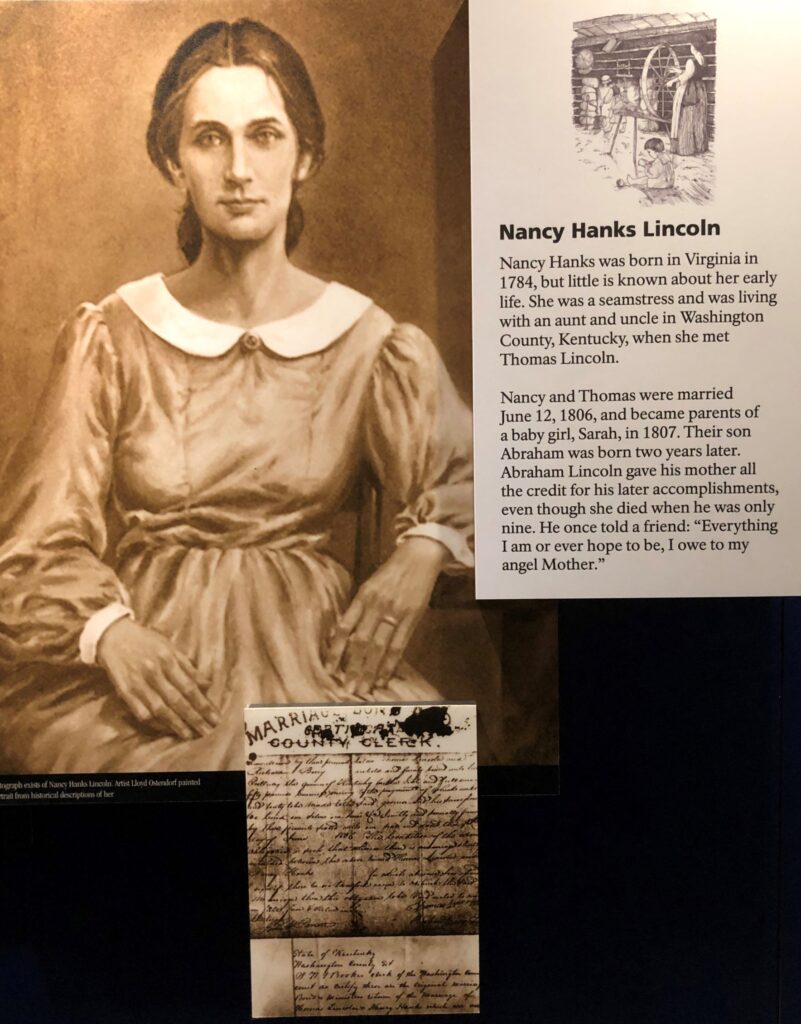
But the explanation below the picture gave a hint as to the uncanny resemblance!
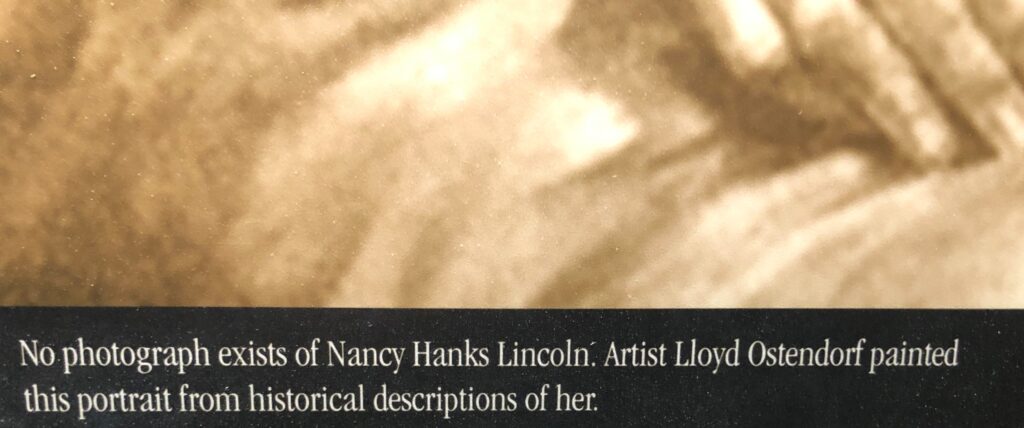
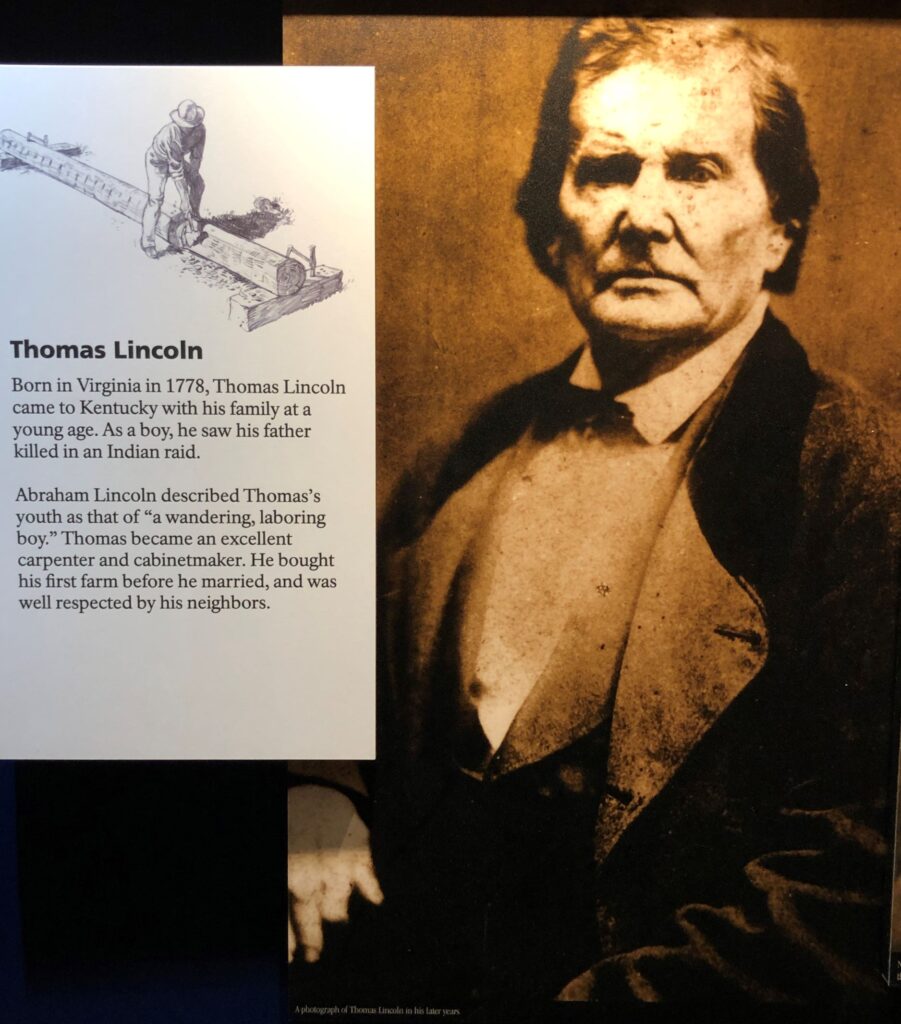
This bronze statue was inside the visitor center
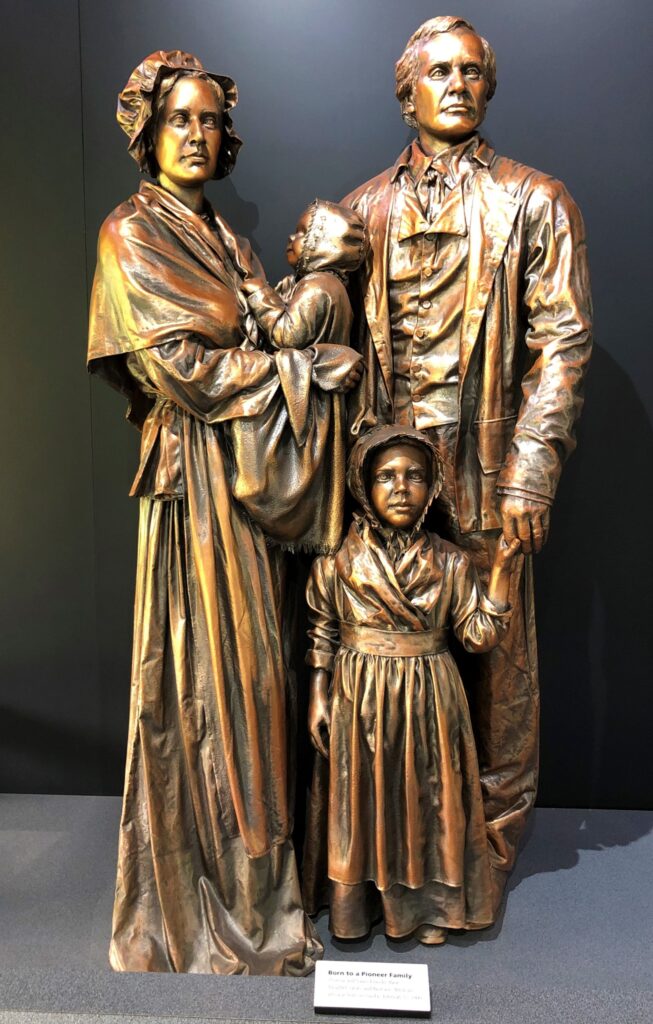
The nearby Knob Creek Farm is where Lincoln’s boyhood home is located- but there is some renovation work being done, so we were unable to visit. The visitor center had this info about it.
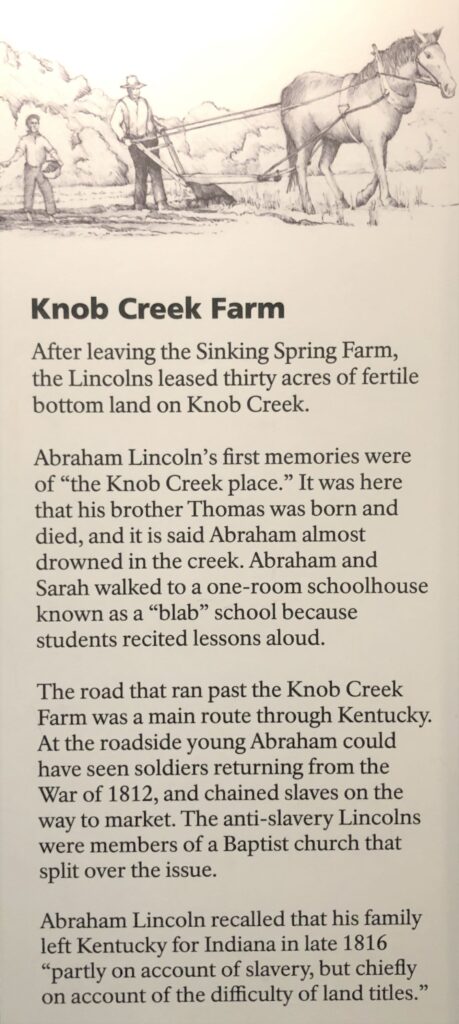
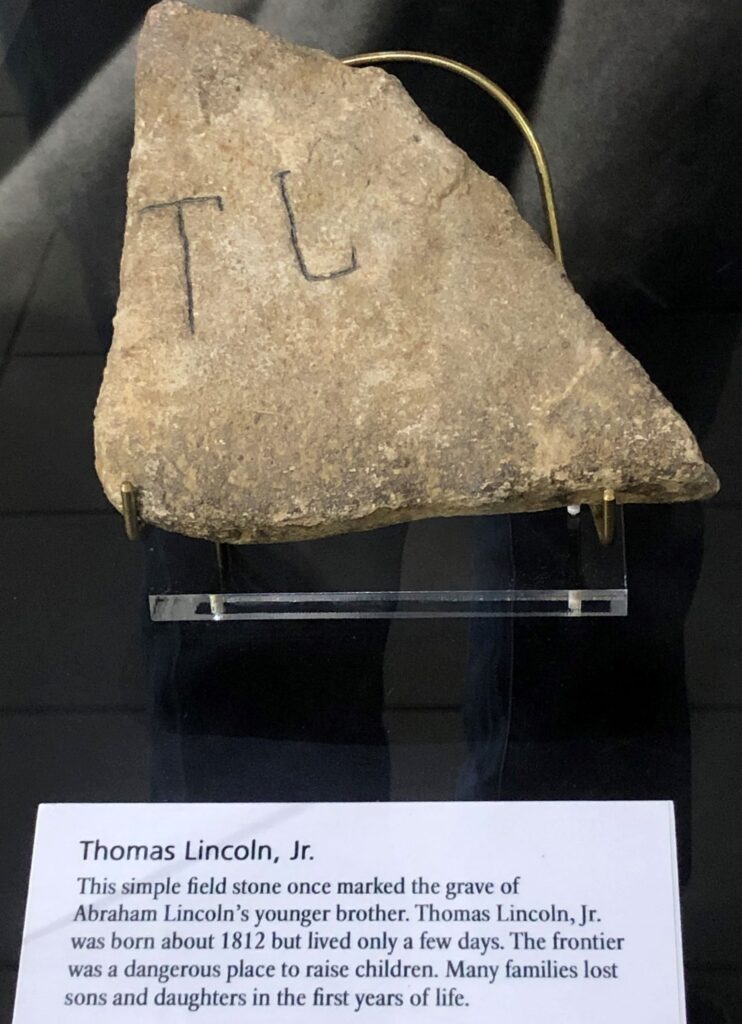
We left the visitor center and walked over to see the Memorial Building.
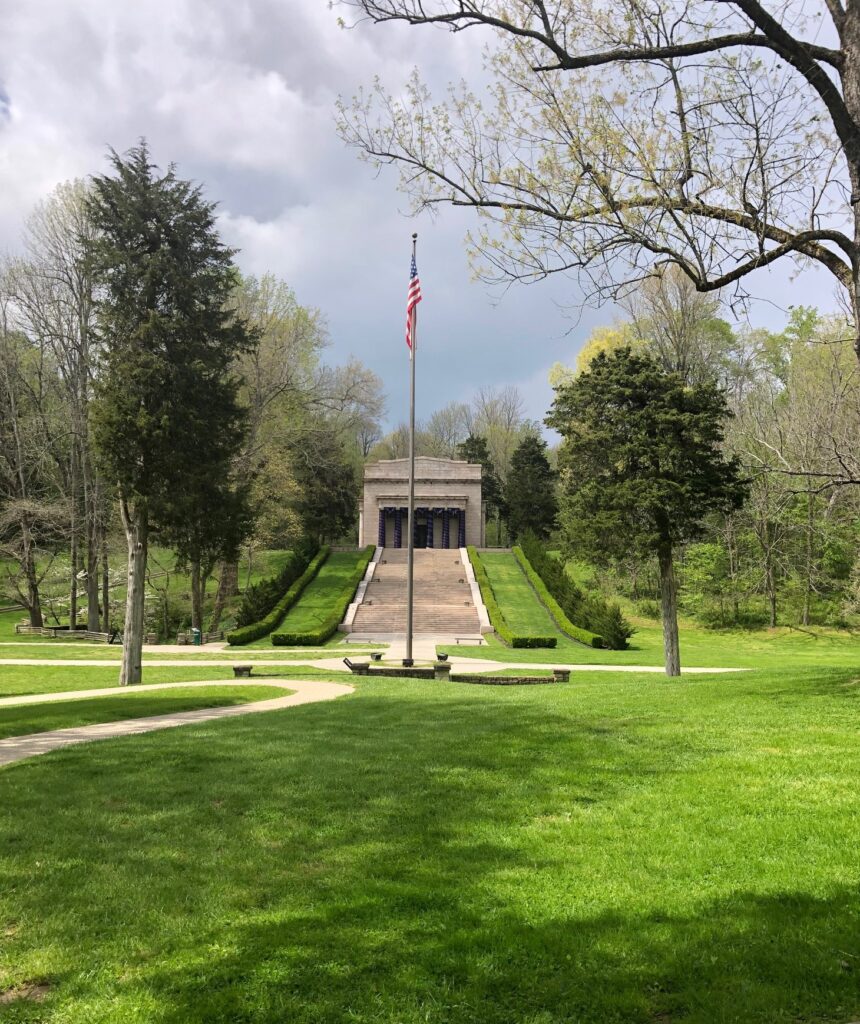
56 steps lead up to the memorial to commemorate the 56 years of Abe’s life.
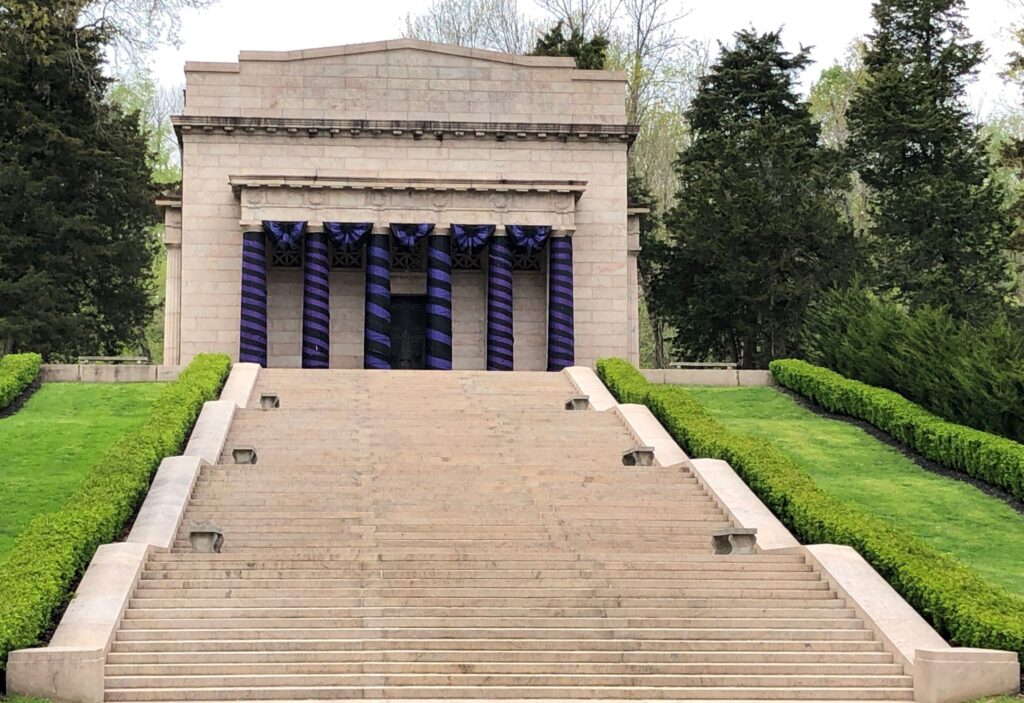
This was the FIRST Lincoln memorial – built 11 years prior to the better known memorial in Washington DC.
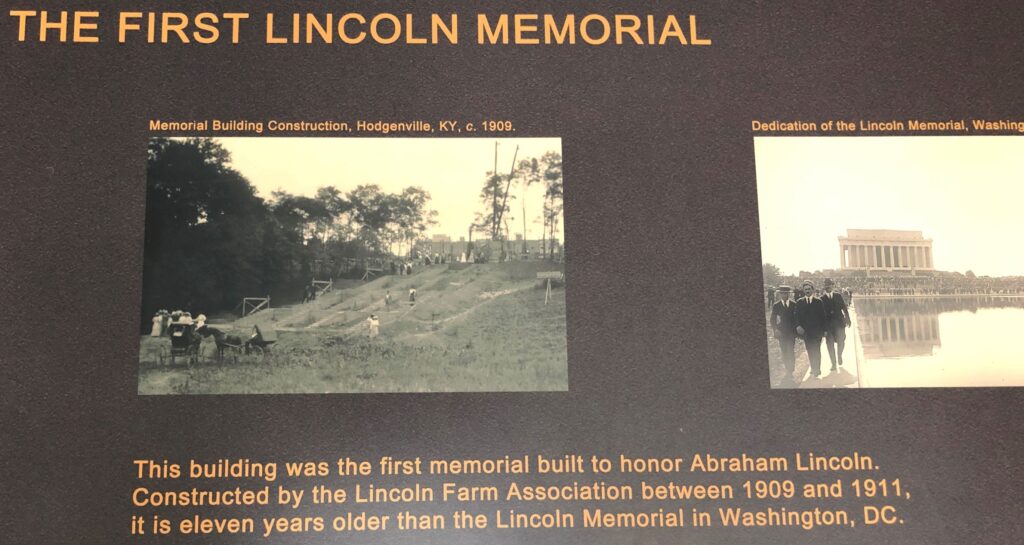
The cabin inside was disassembled and downsized a bit to fit inside the memorial building. For many years, it was thought to be the actual cabin Lincoln was born in, Tree-ring analysis on the logs determined the logs were not old enough to be the actual cabin – and the park information continually calls it “symbolic” of the cabin he was born in. It surely is a reminder of Lincoln’s humble beginning.
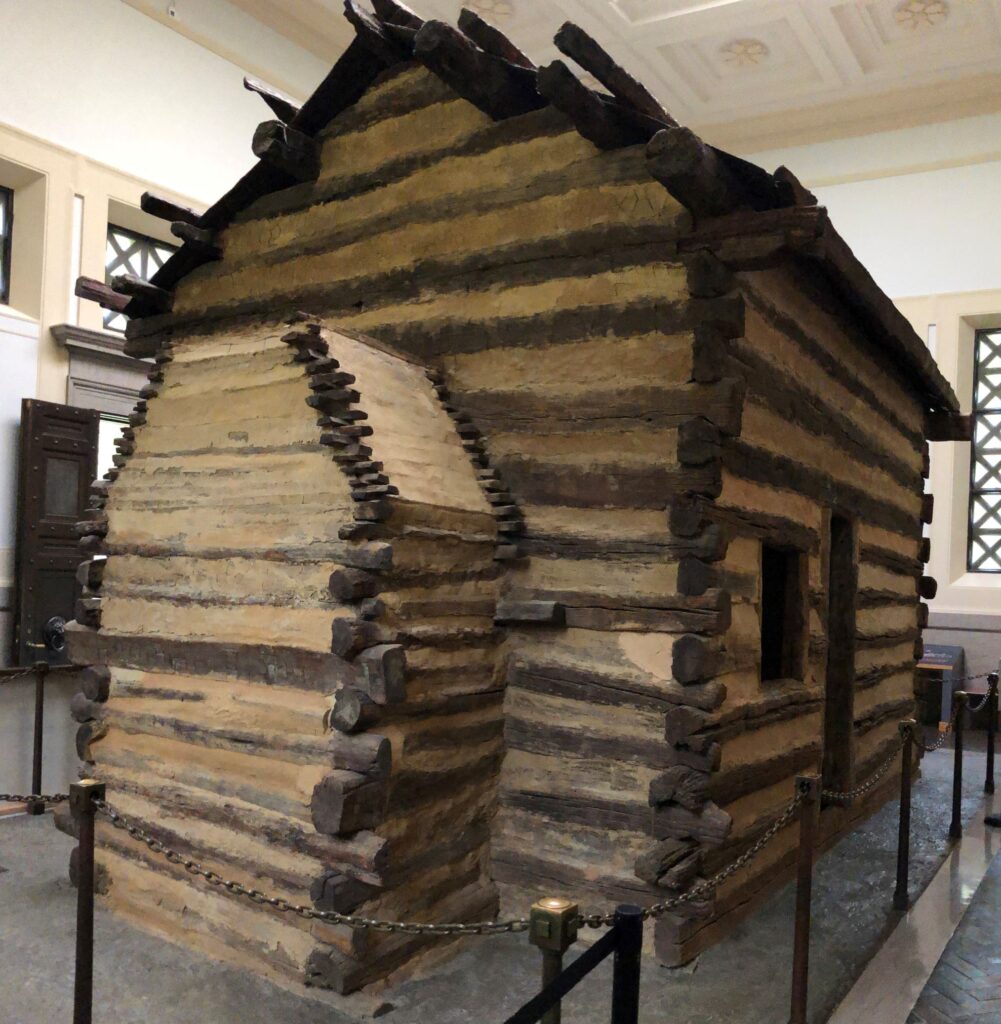
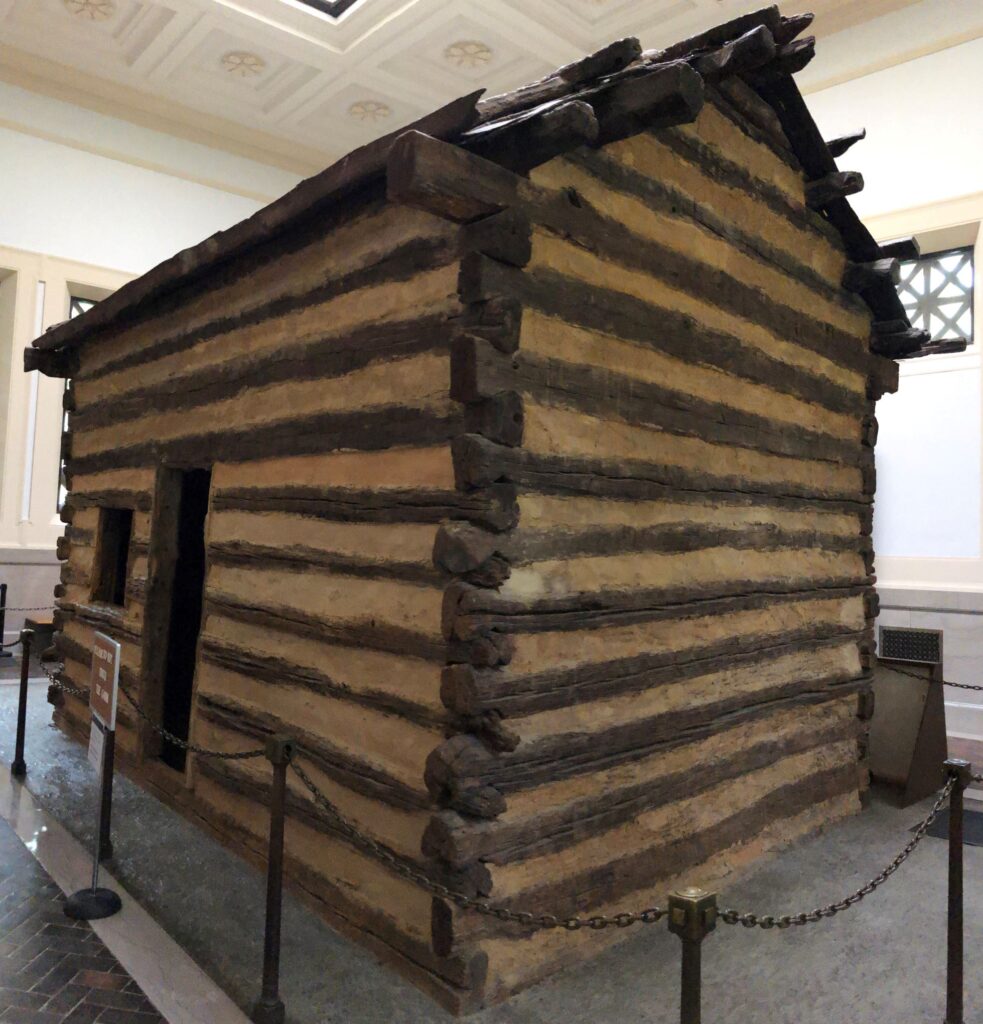

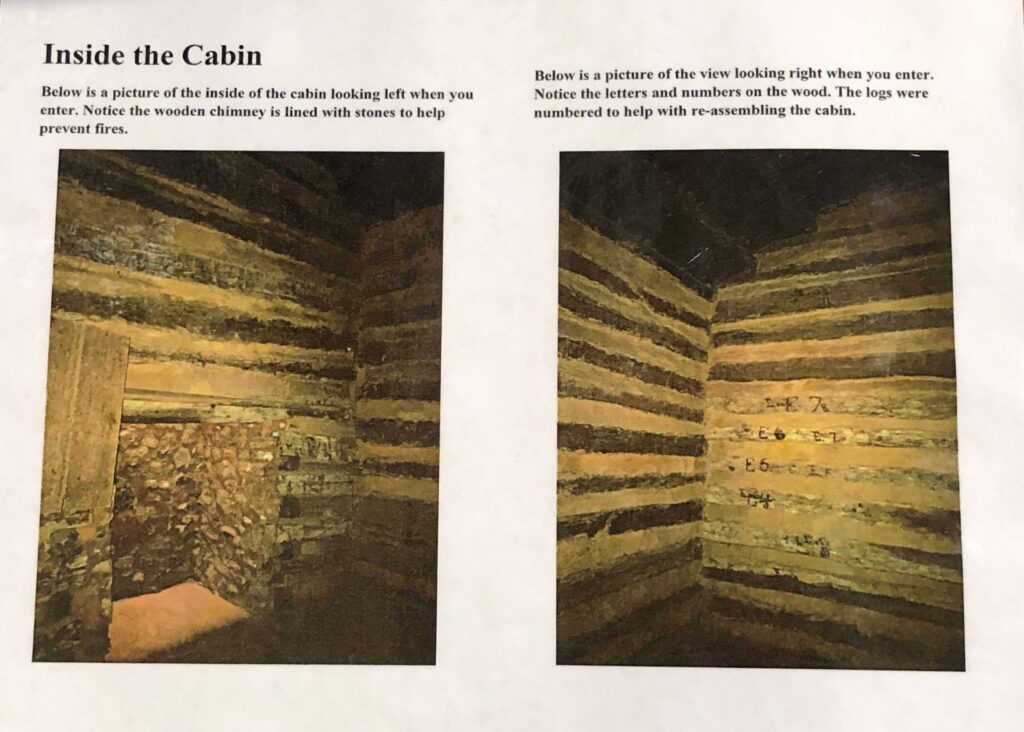
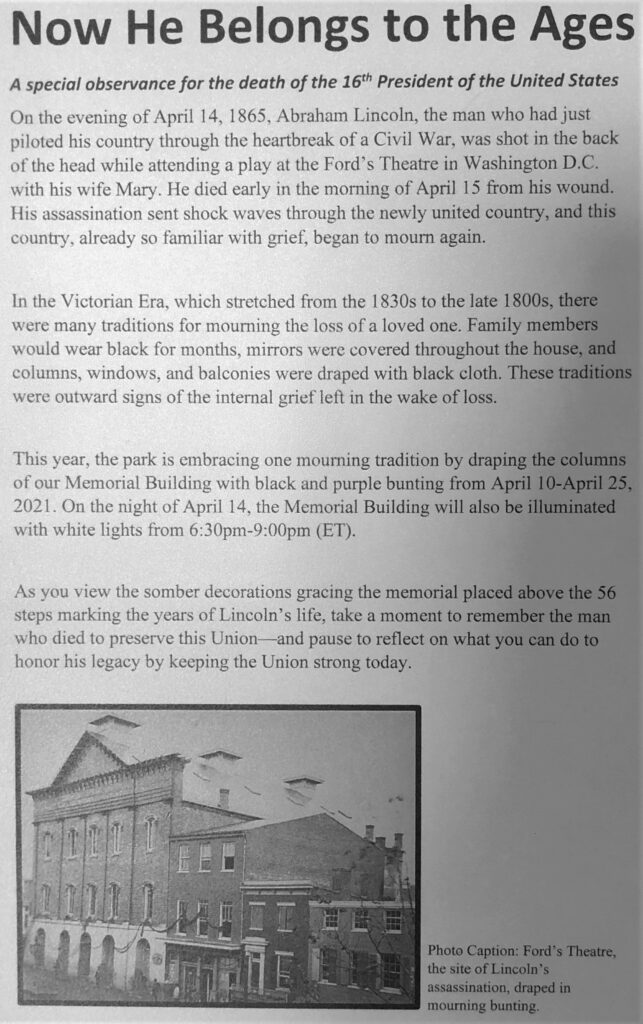
Our visit was on April 21, 7 days after the anniversary of Lincoln’s assassination; which was during the 2 week period when the park “is embracing one mourning tradition by draping the columns of our Memorial Building with black and purple bunting from April 10-April 25, 2021.” The color came out blue in the photos – it really was purple and black.
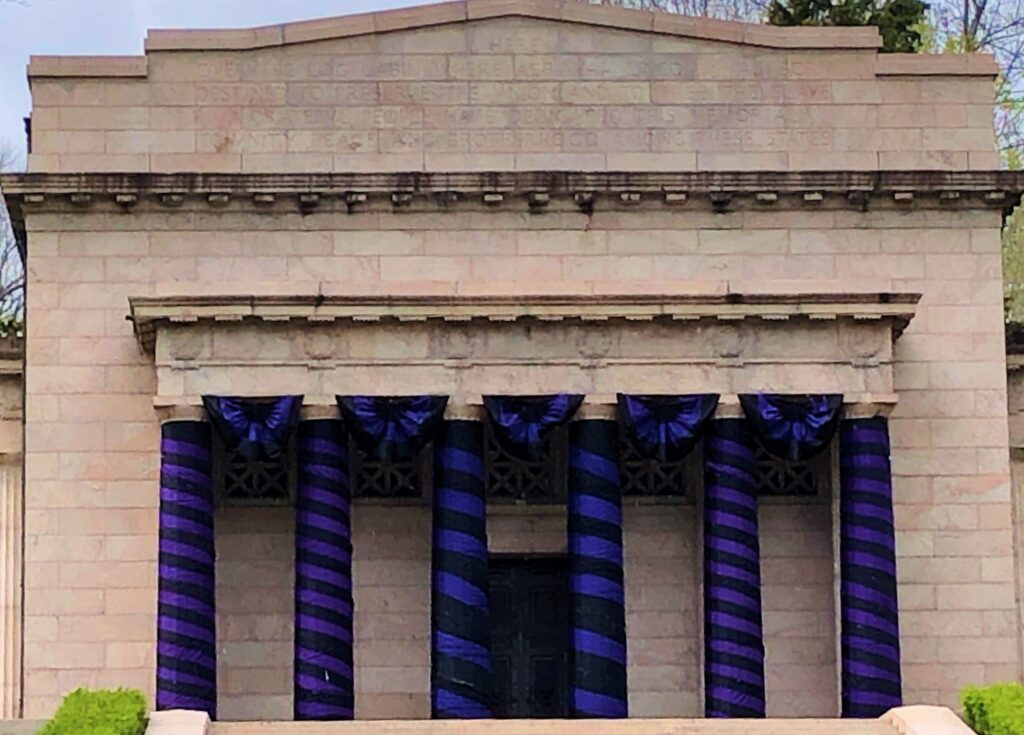
Right next to the memorial was the Sinking Spring for which the farm was named. “Abraham Lincoln probably took his first drink of water from this spring. A dependable water source undoubtedly was an important factor in Thomas Lincoln’s decision to purchase Sinking Spring Farm. The Sinking Spring is an example of a karst window, an unusual landform. A karst window is a special type of sinkhole that gives us a view into the karst aquifer.”
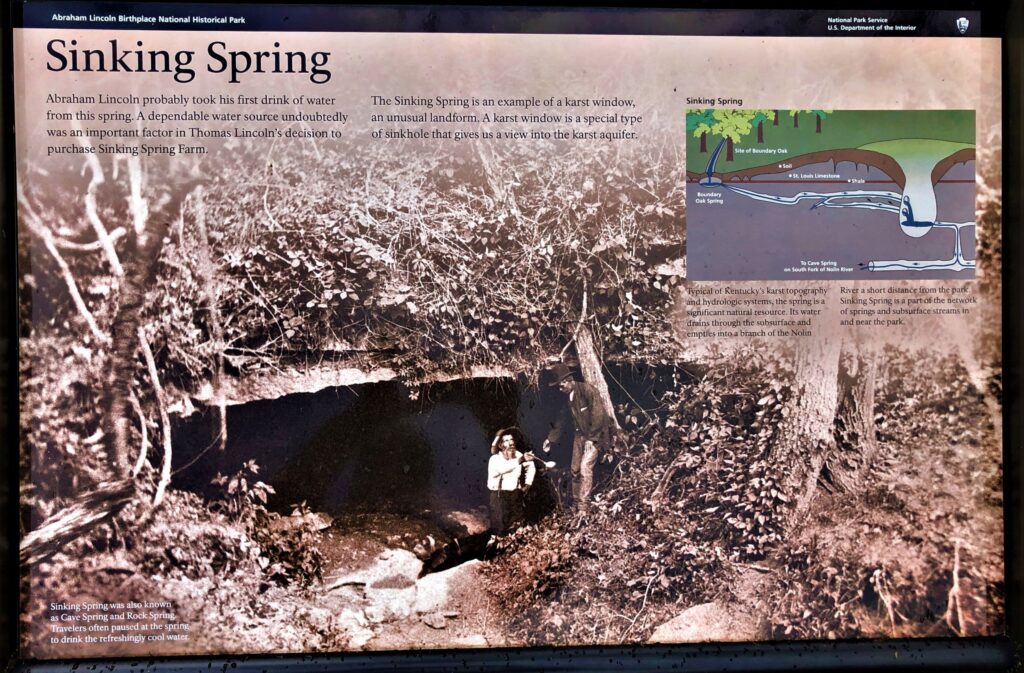
And here is what it looked like when we visited
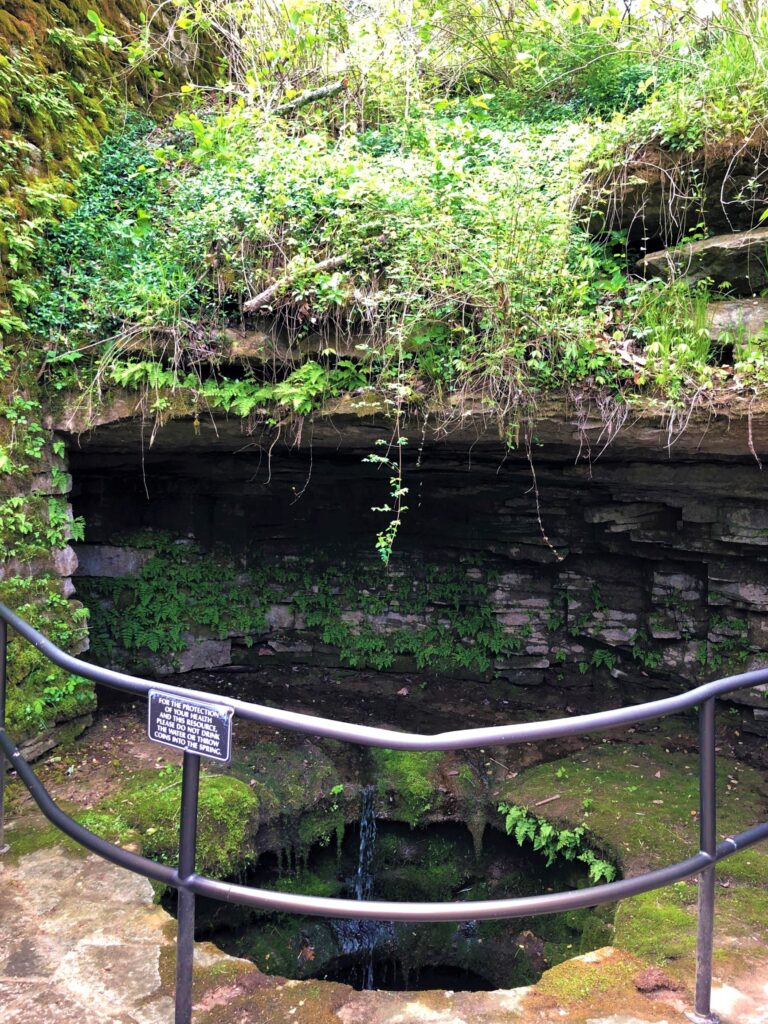

Also on the property was the Nancy Lincoln Inn, along with its 4 cabins, built in 1928 to house guests to the area. The historic building, named for Lincoln’s mother, is privately owned. It is not a terribly attractive sight, and Wikipedia reports “In 1934, the National Park Service in its evaluation called the inn an “unacceptable adjacent commercialization”, and red cedar trees were planted to obstruct the view of the inn from the memorial log cabin temple.”
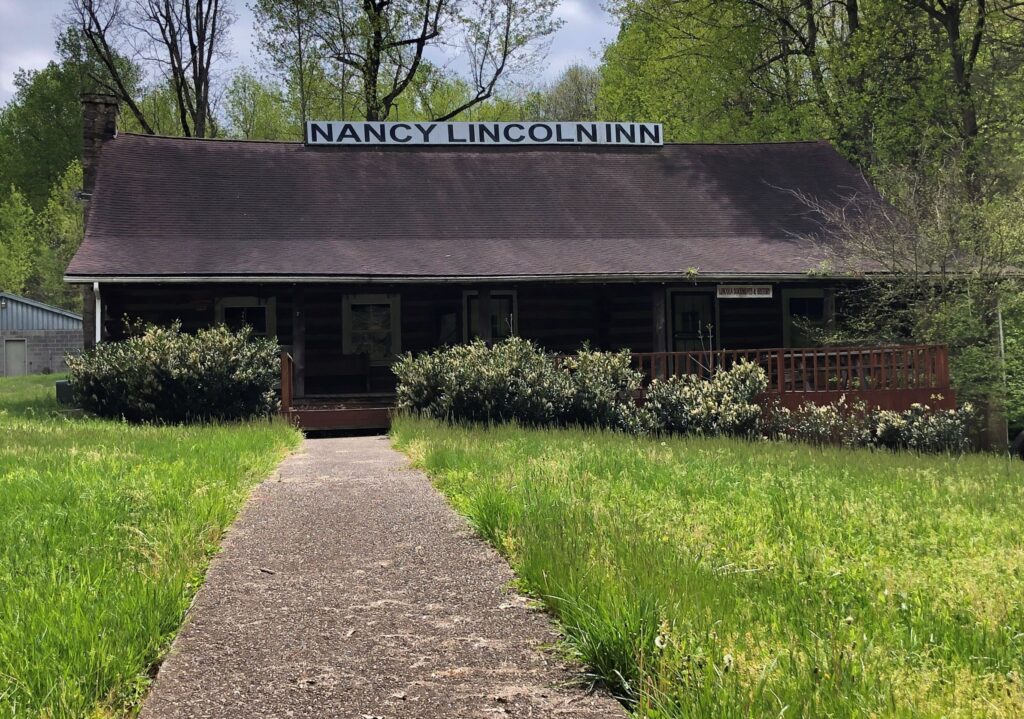
The sign is pretty much illegible – the bottom line says “PLEASE COME IN” but the chain across the walkway said otherwise.
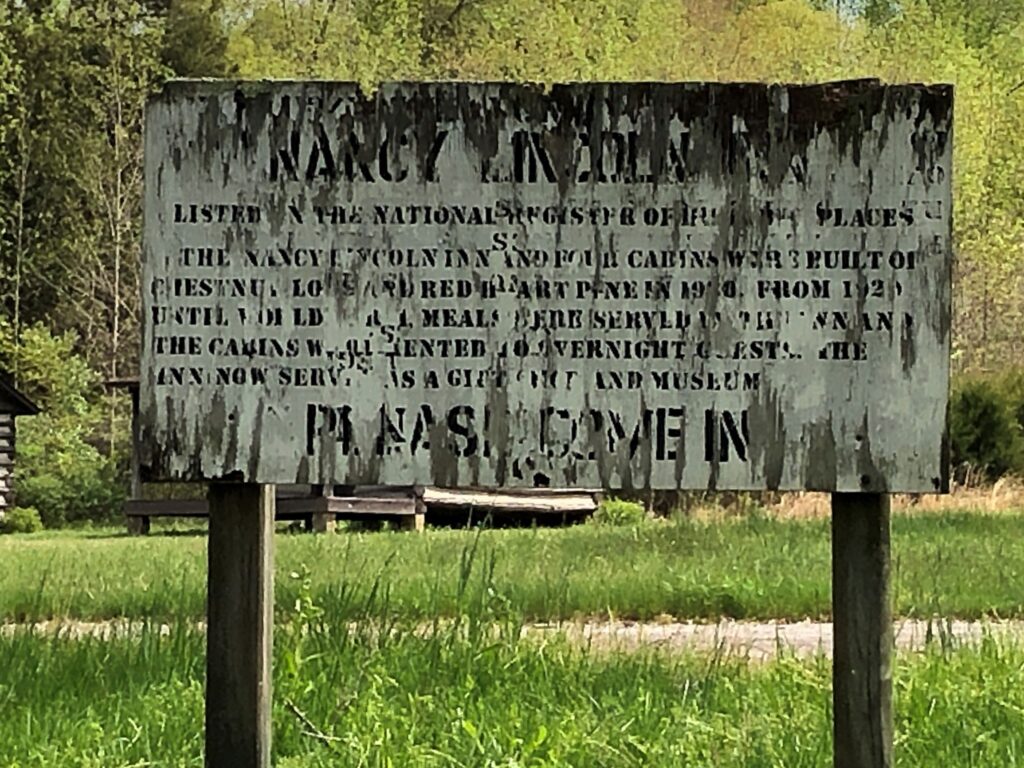
The four cabins could be rented. They were restored in 2004 and air conditioning was added, but guests had to use an outdoor (modern) bathhouse as there is no indoor plumbing in the cabins. The site looks to have been abandoned, but being a historic site, it will likely remain.
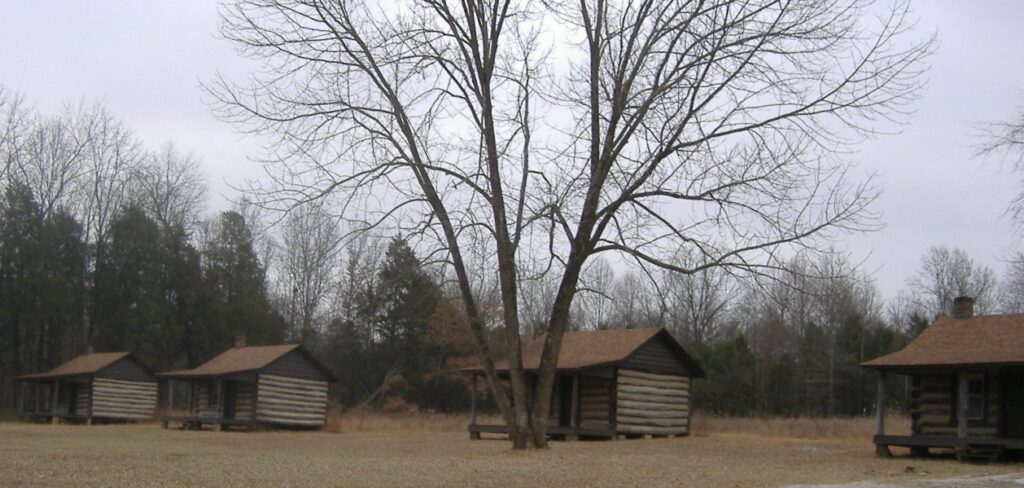
Thursday we drove out to Dickson. We collected our mail and got our second vaccine shot. After a quick lunch, we drove down to Franklin and went to Jim’s former workplace to visit with his longtime co-workers and boss. Afterwards, we stopped by the Yazoo Brewery and then headed back to Acey.
Sunday – our last visit to Stephens Valley Church for a while. It has been good to meet “in person” and see friends – we will be back in July and again in November – but in the meantime, we can join our class on Zoom and join the worship service in YouTube! We had lunch with Chris and headed back to Acey. We made preparations for our move in the morning; it will be a long day and an early wake-up call!
We will FINALLY be heading to the eastern US and look forward to seeing some places we have visited before – and also visiting new destinations! Check out our “Future Destinations” page to see where we are headed and when!
![]()
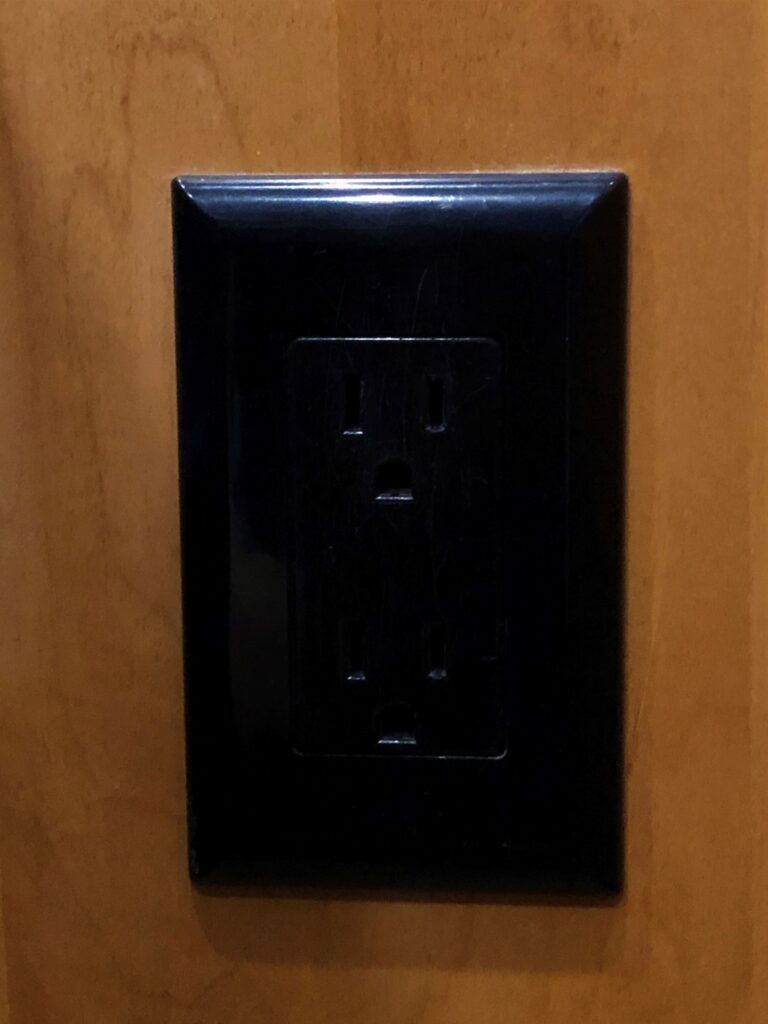
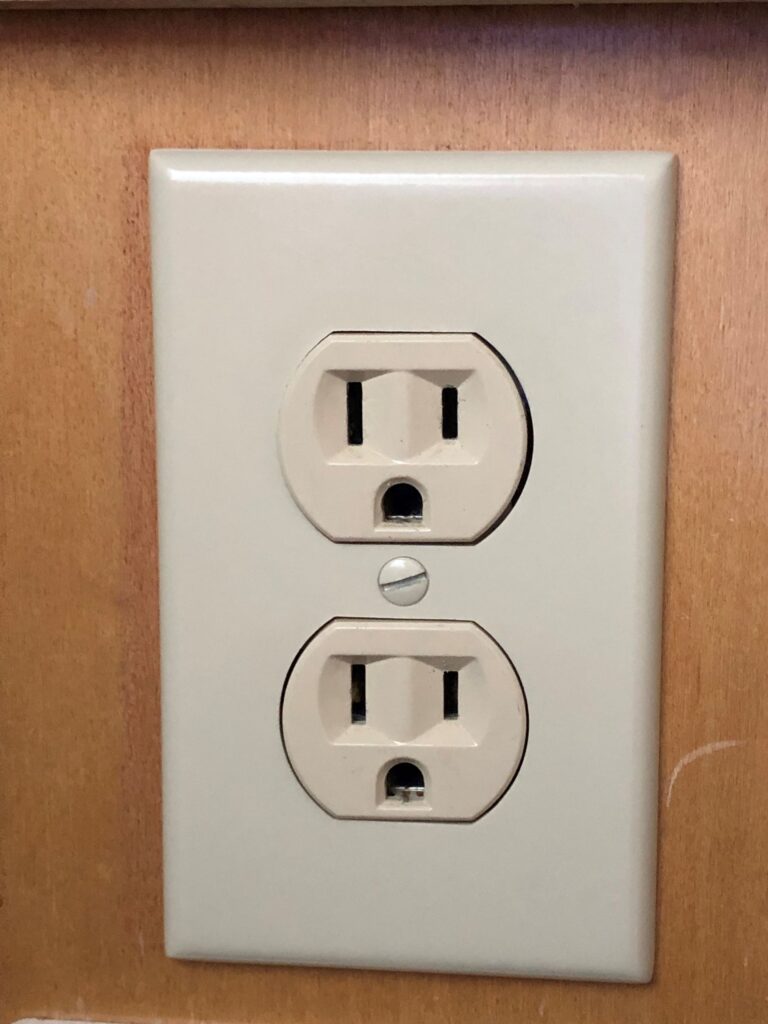

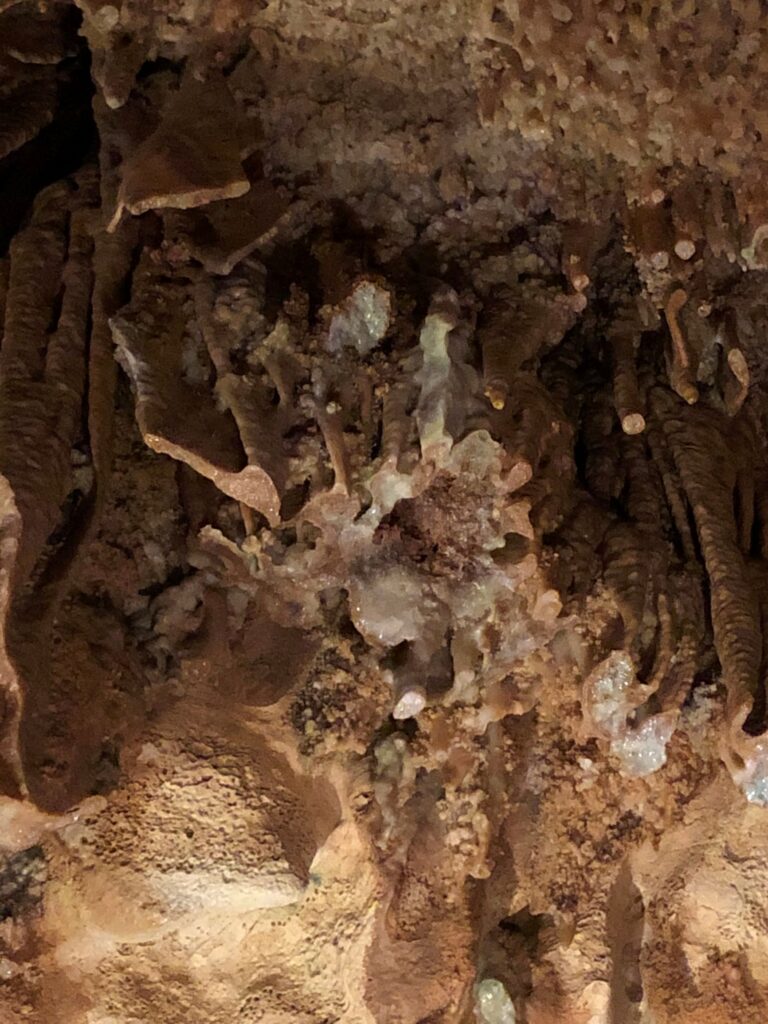
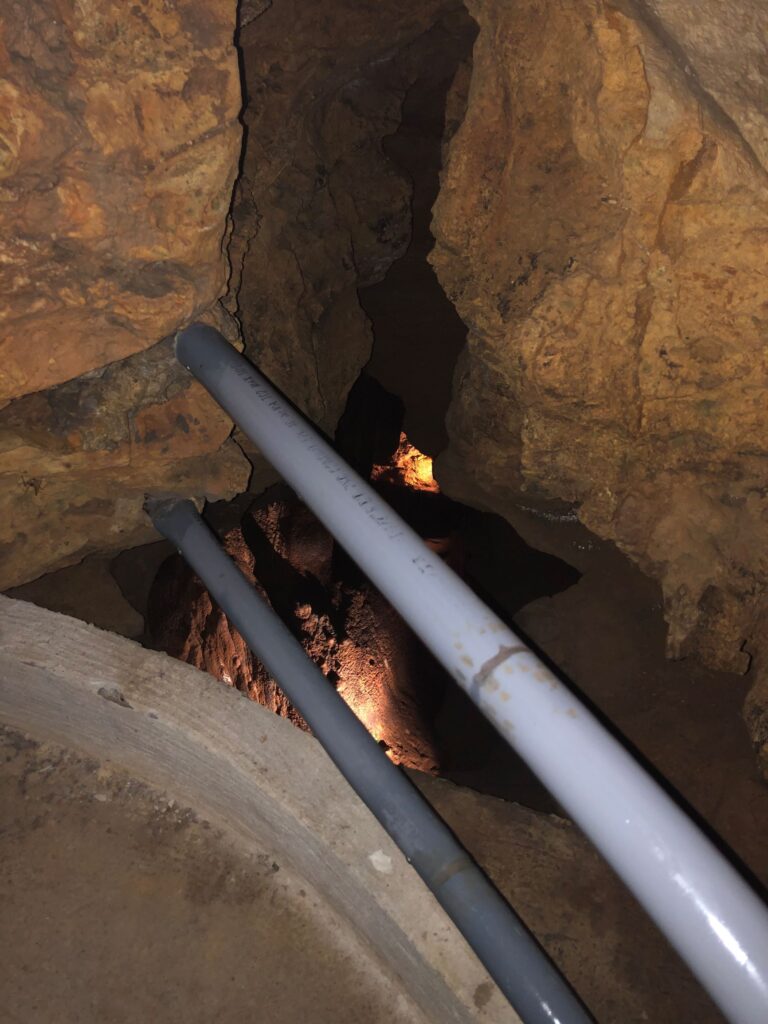
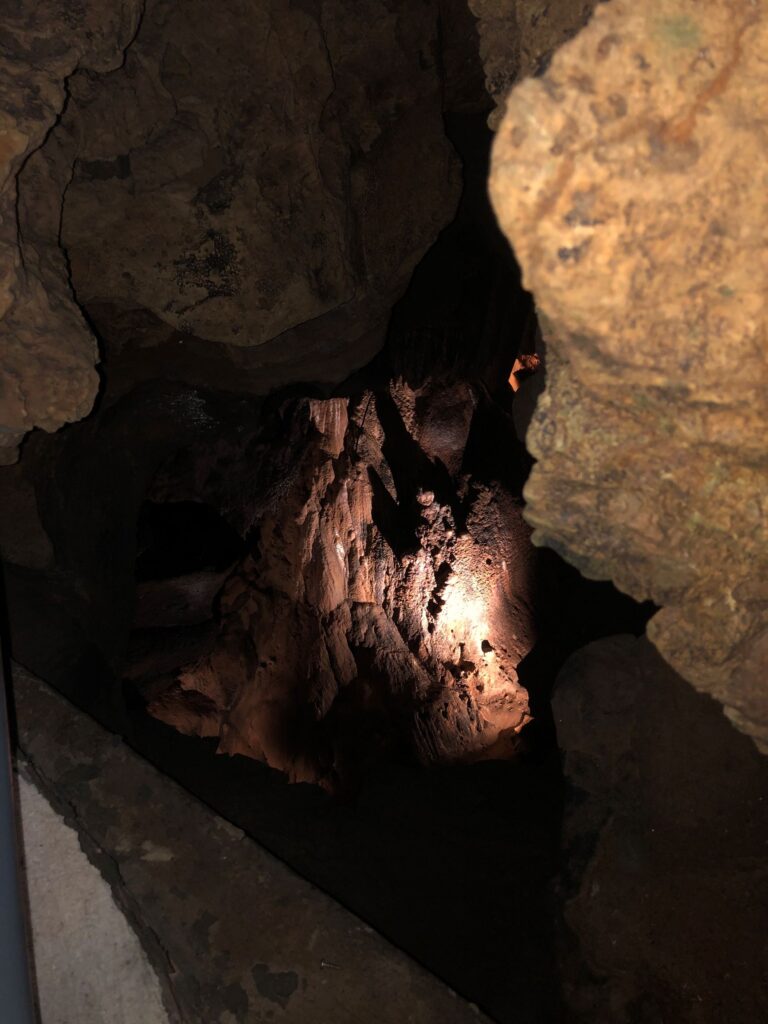
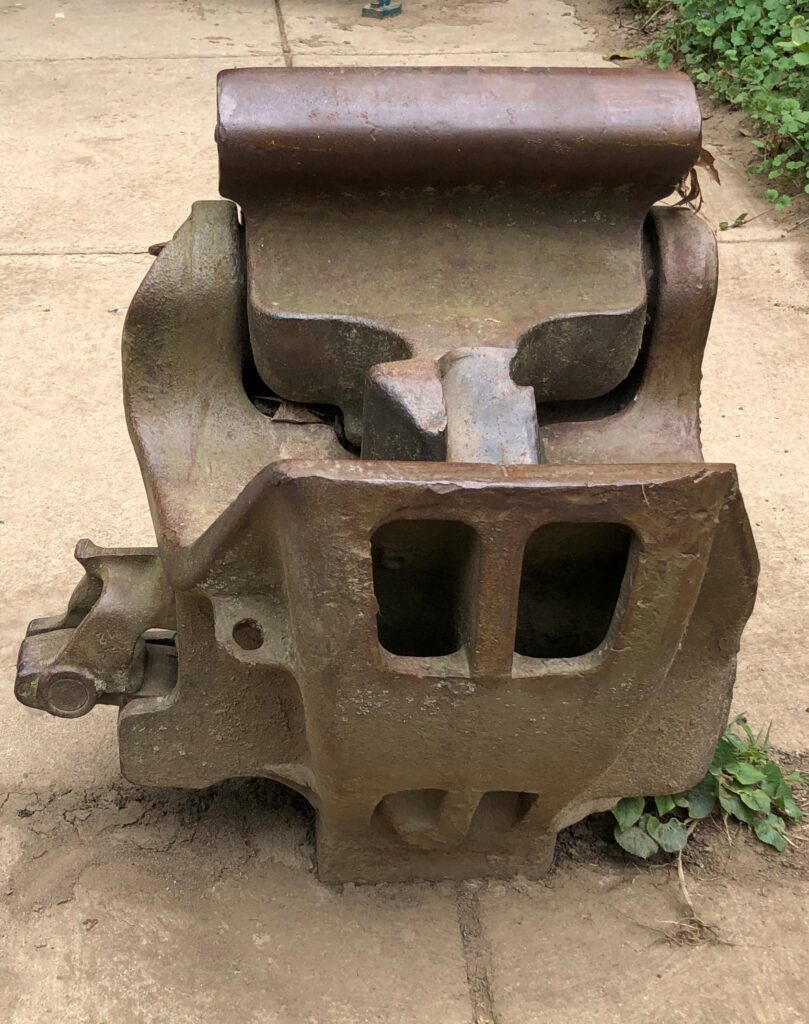
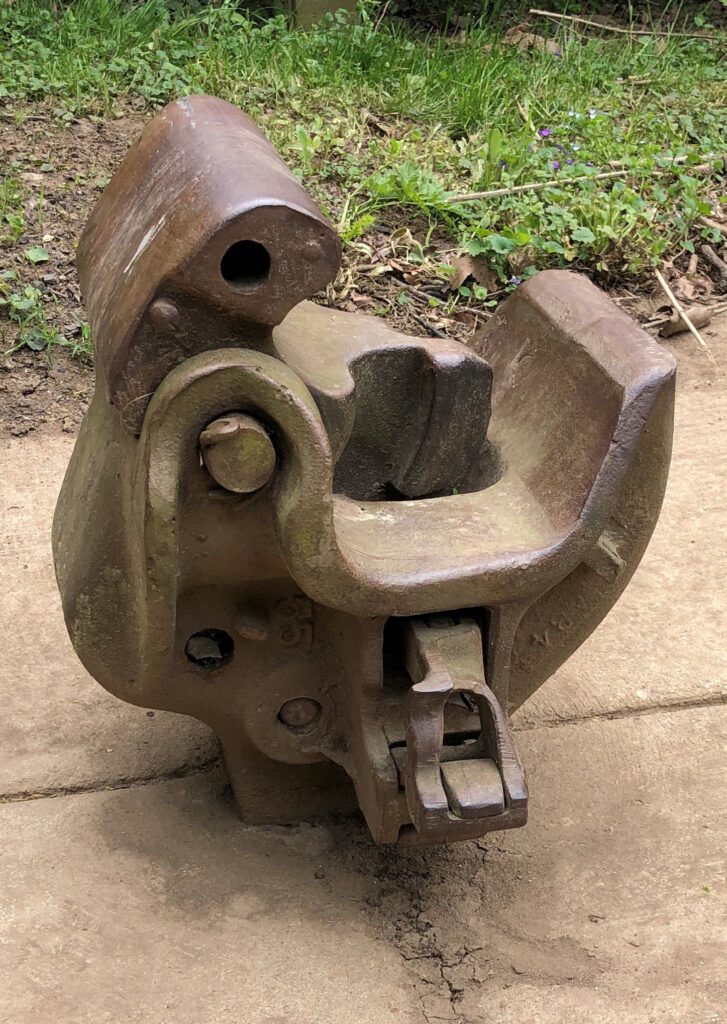
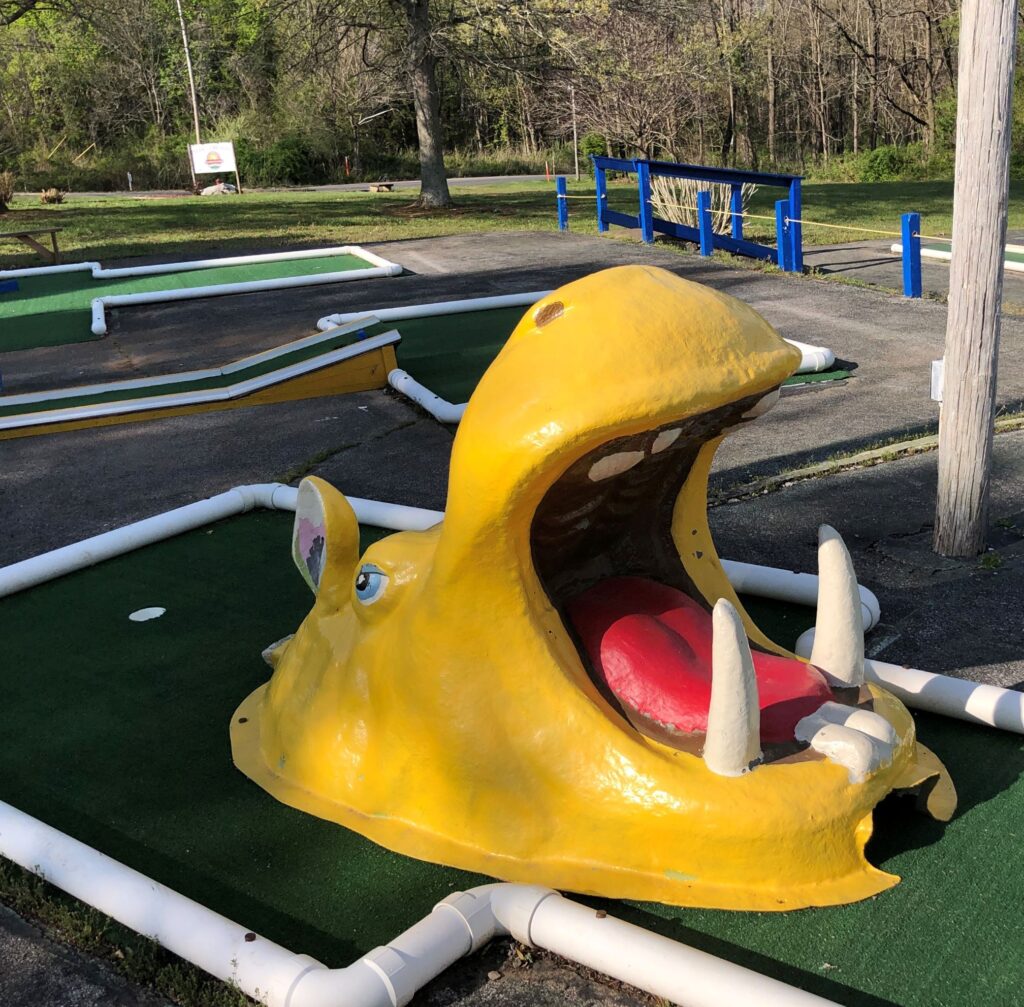
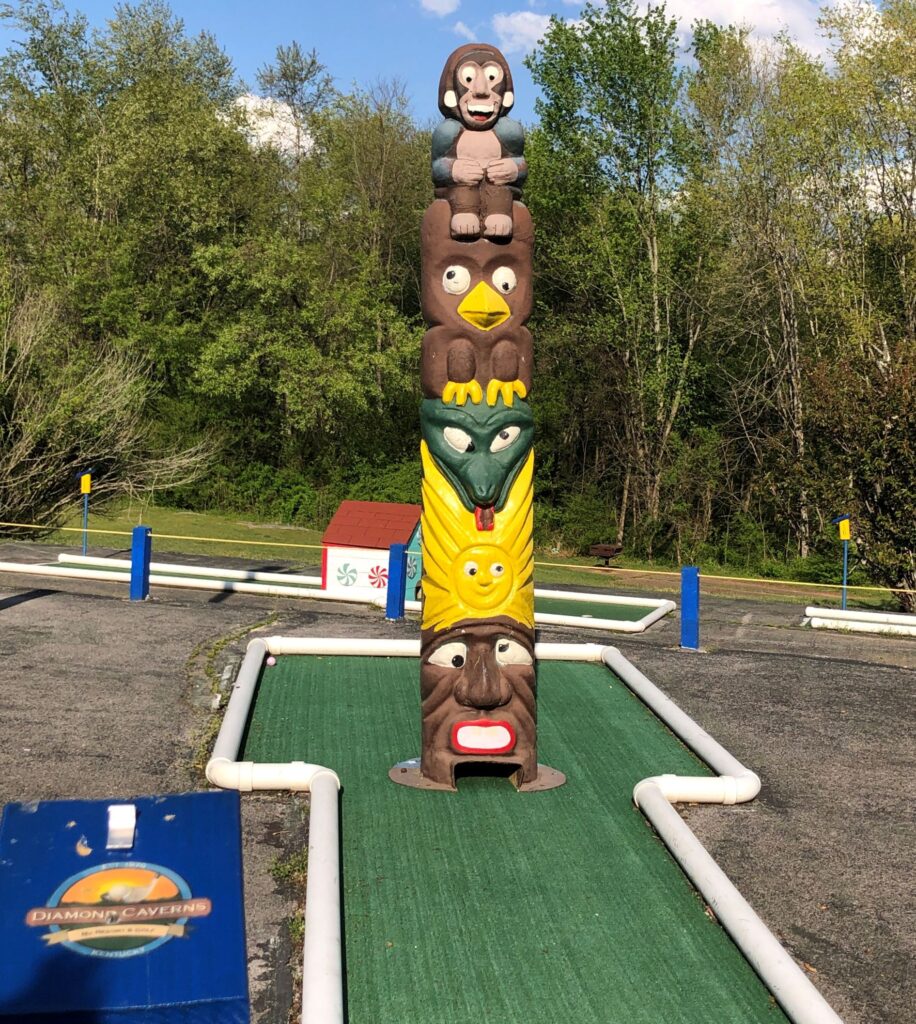
Wow! So much to read here! I’m going to have to come back to continue reading it. Thank you. I’ve heard that A Lincoln’s son Robert Todd Lincoln was a lawyer at the Pullman Company; now I know the rest of the story! Thanks for posting.
Yeah – I got a bit of info overload on this blog… So many interesting (to us anyway) stuff that we came across! Hope you finished reading 🙂
You are doing such a wonderful and insightful job on Acey’s travels. You guys have already seen so many cool places.
Love that Jim is so capable of repairing stuff that needs fixing. Keeps him busy and saves a lot of money on repairs.
Bill and I would so love seeing Mammoth Cave again and add on Diamond Caverns! Some day
Continue safe travels, stay Covid-19 free, love, laugh and drink on 🙂
Thanks Charlene – this was a LONG one – thanks for reading and commenting!